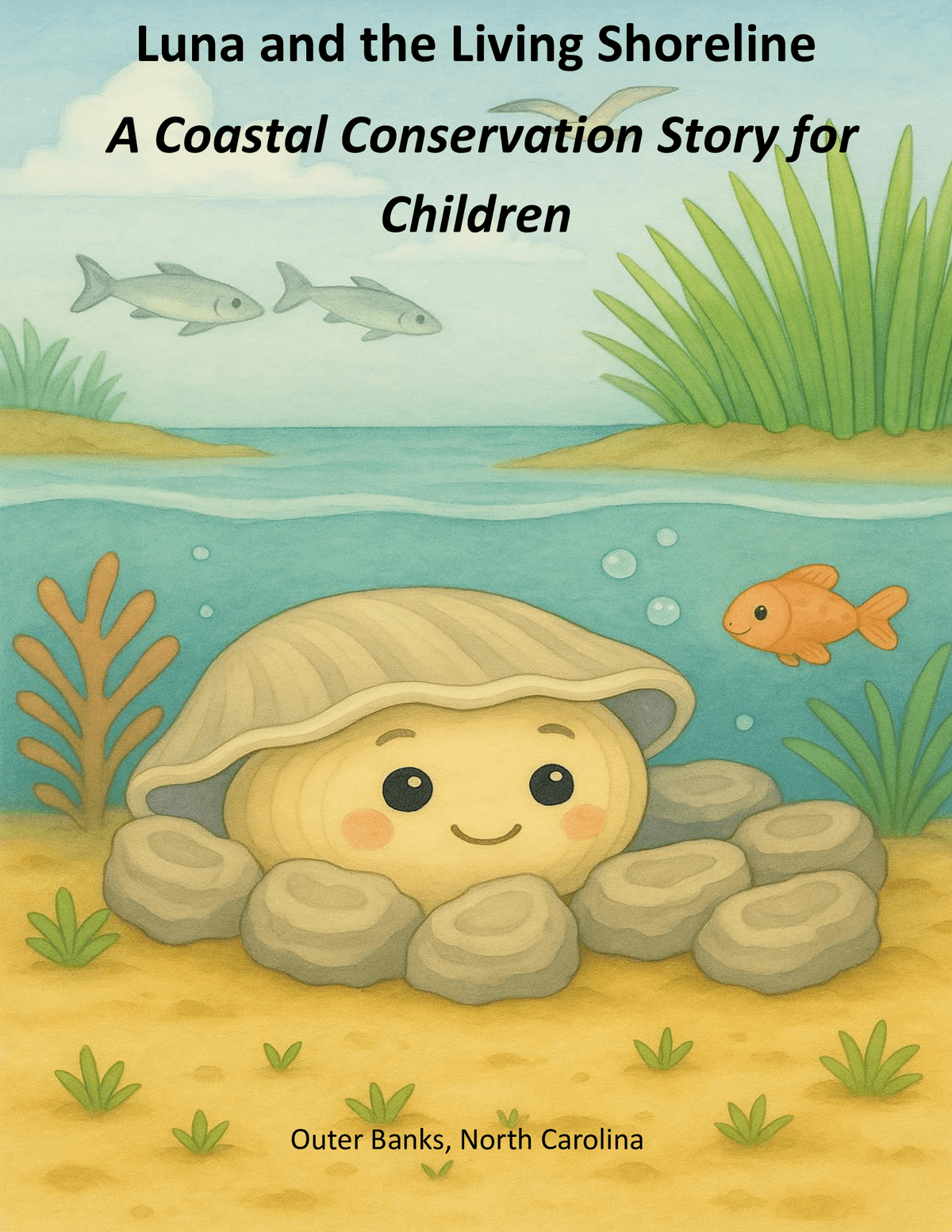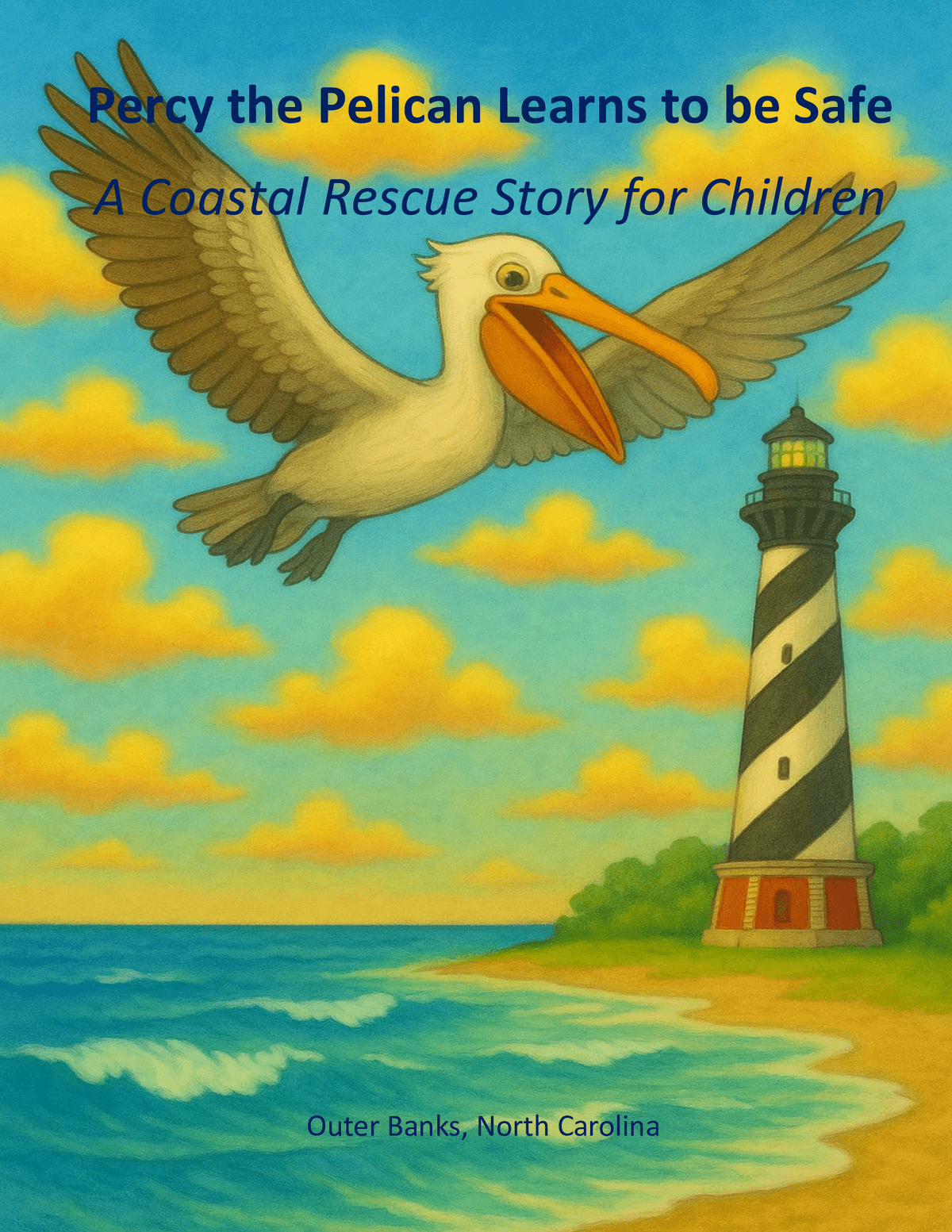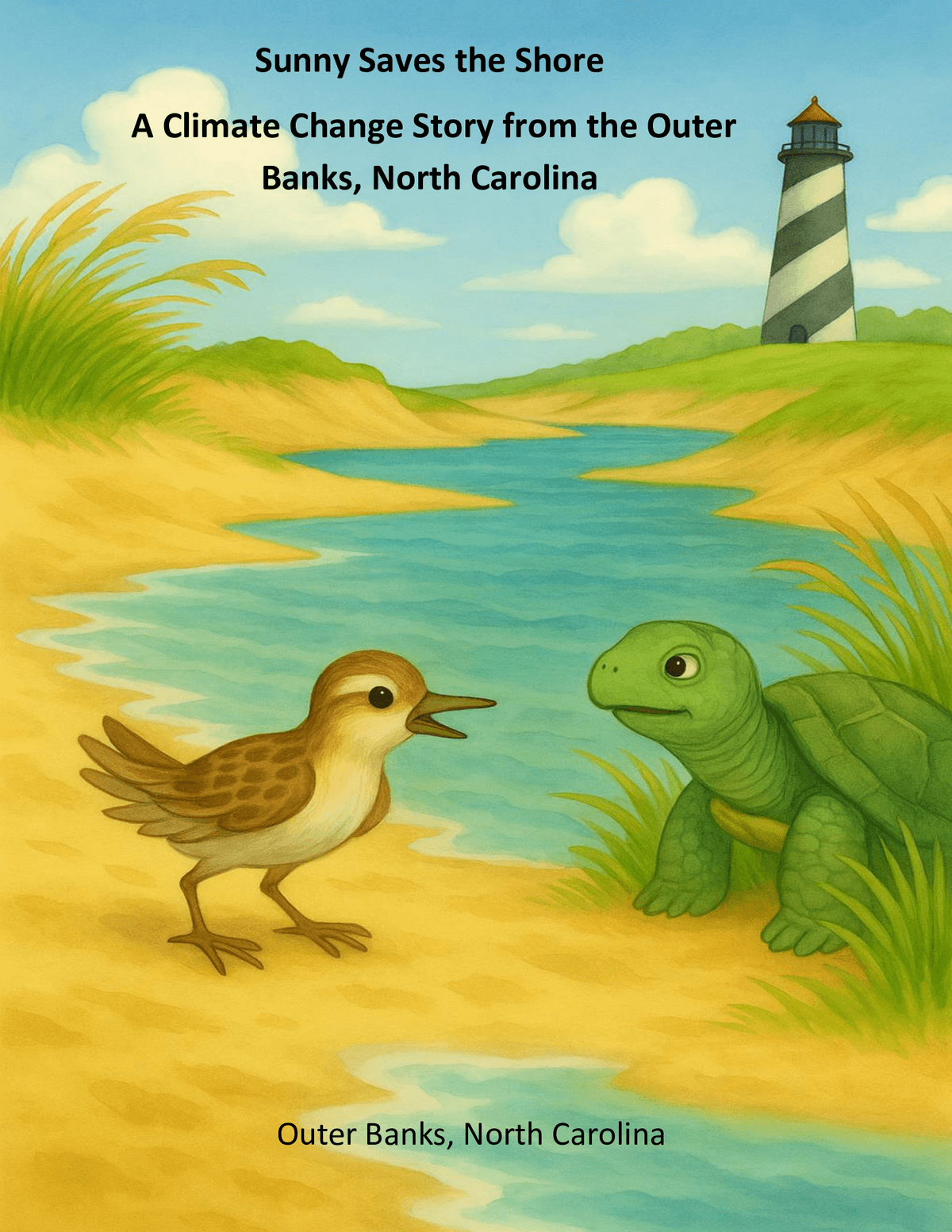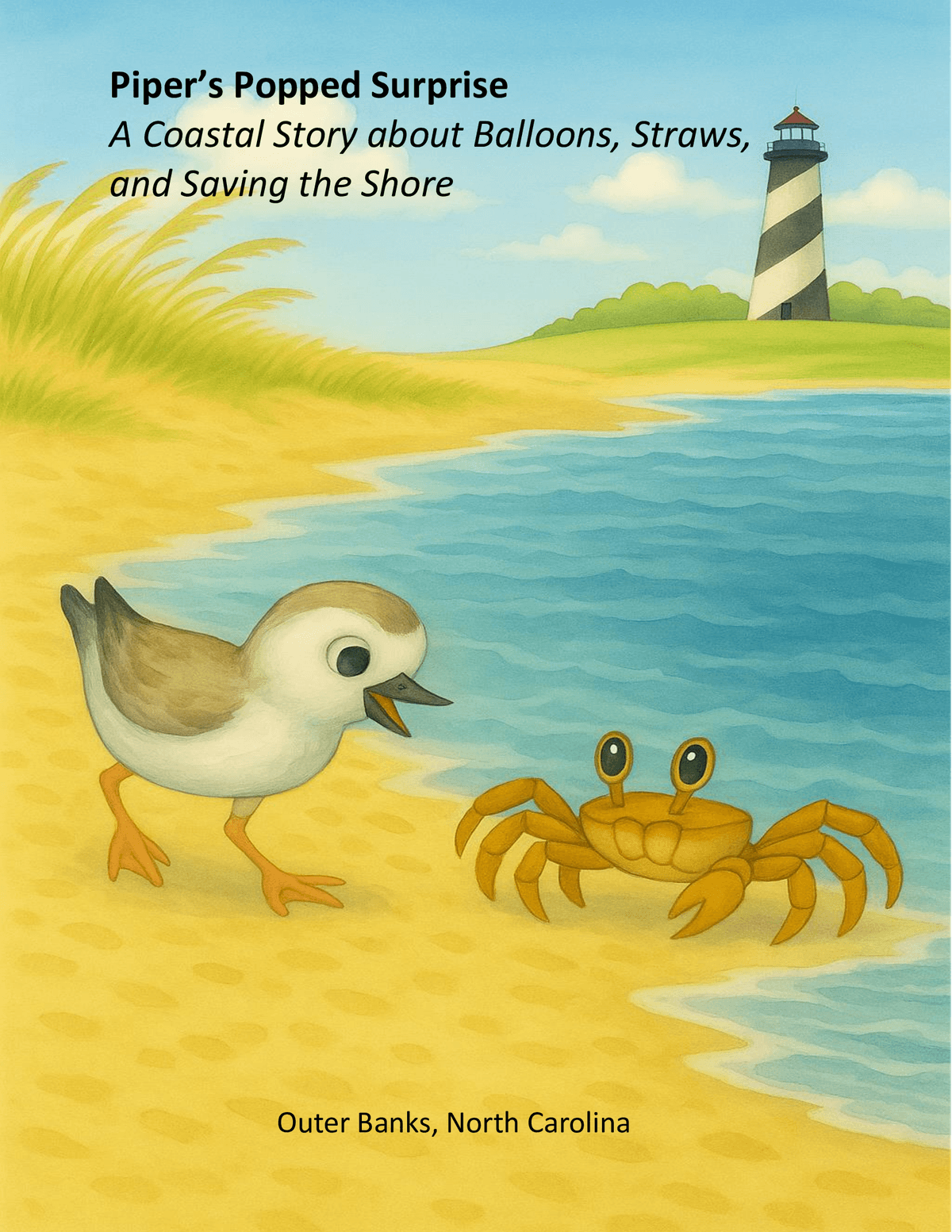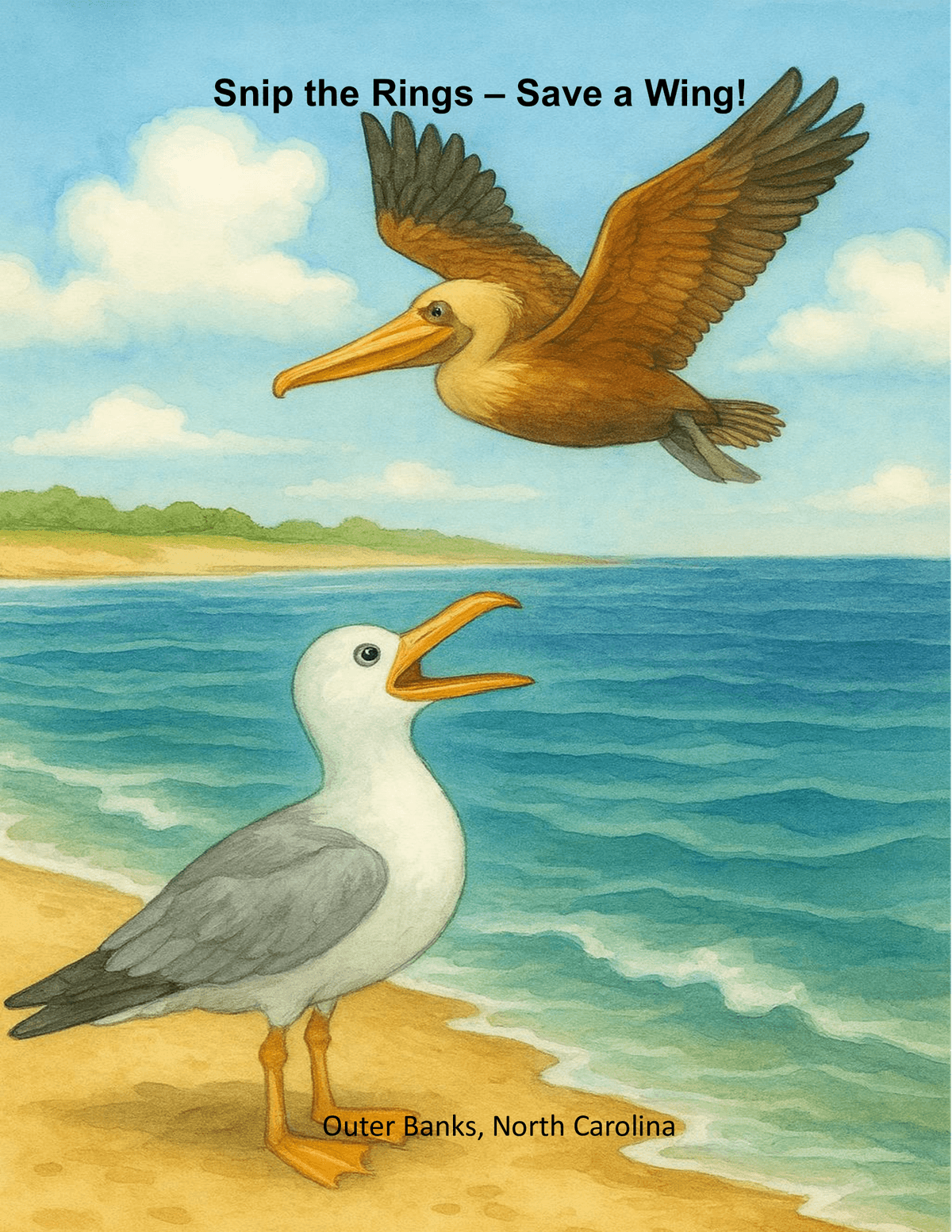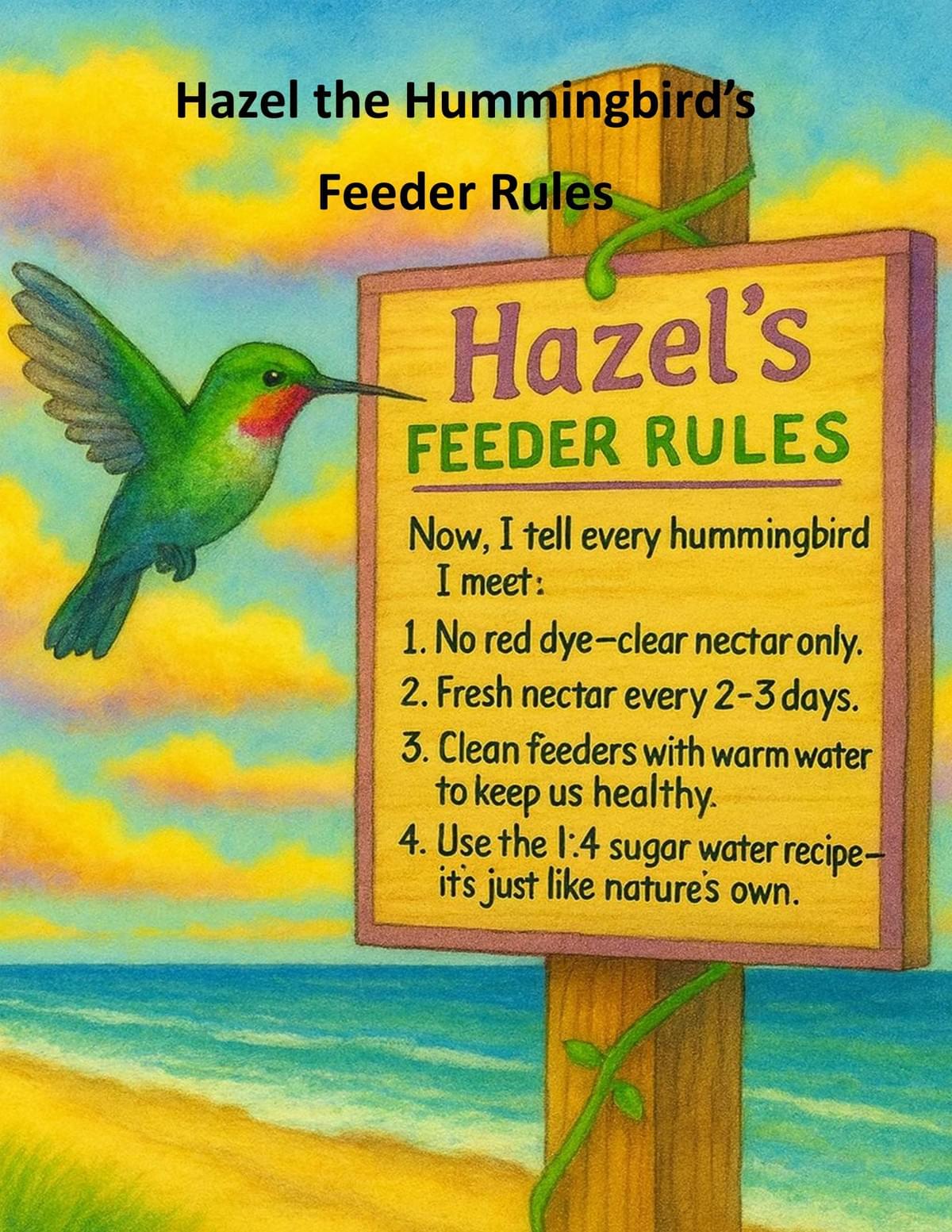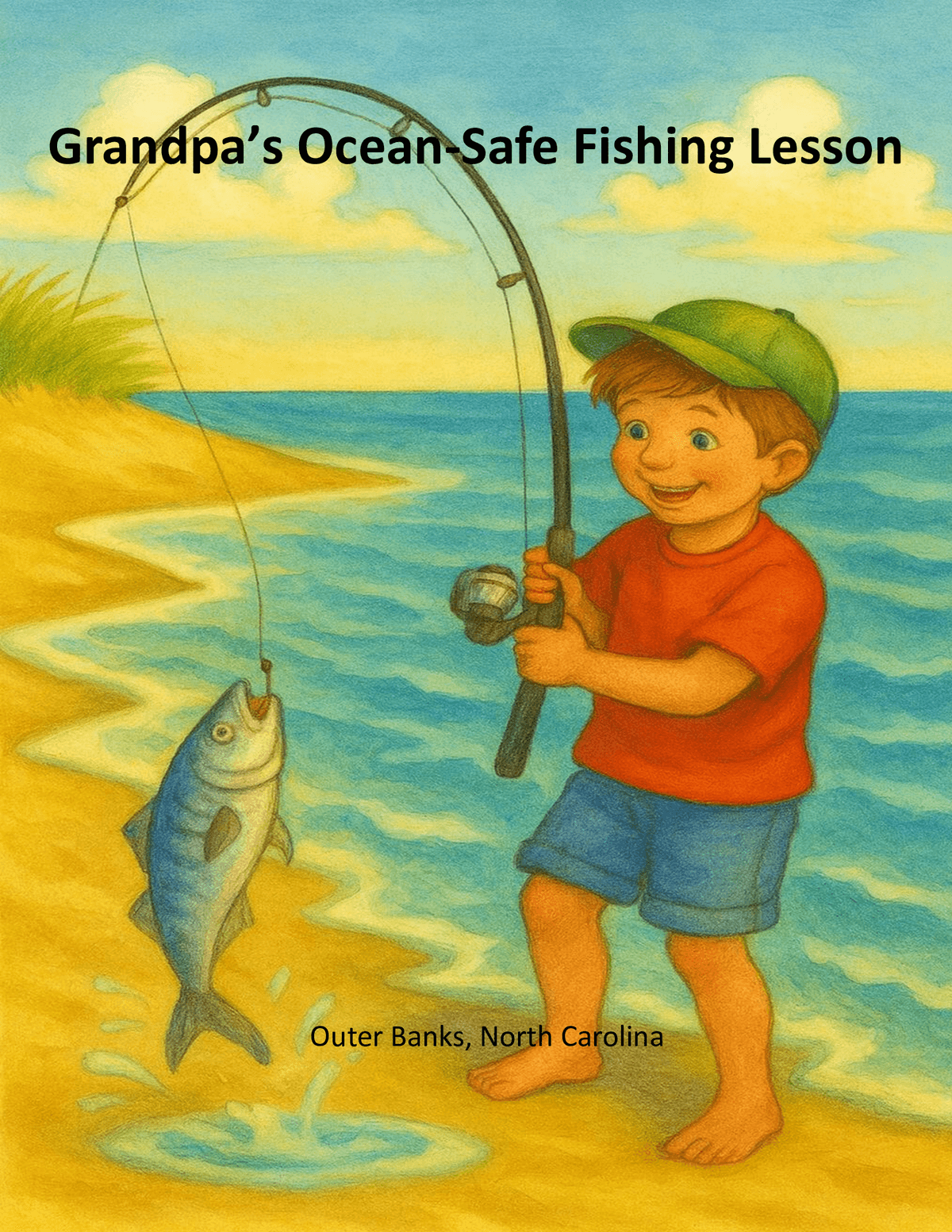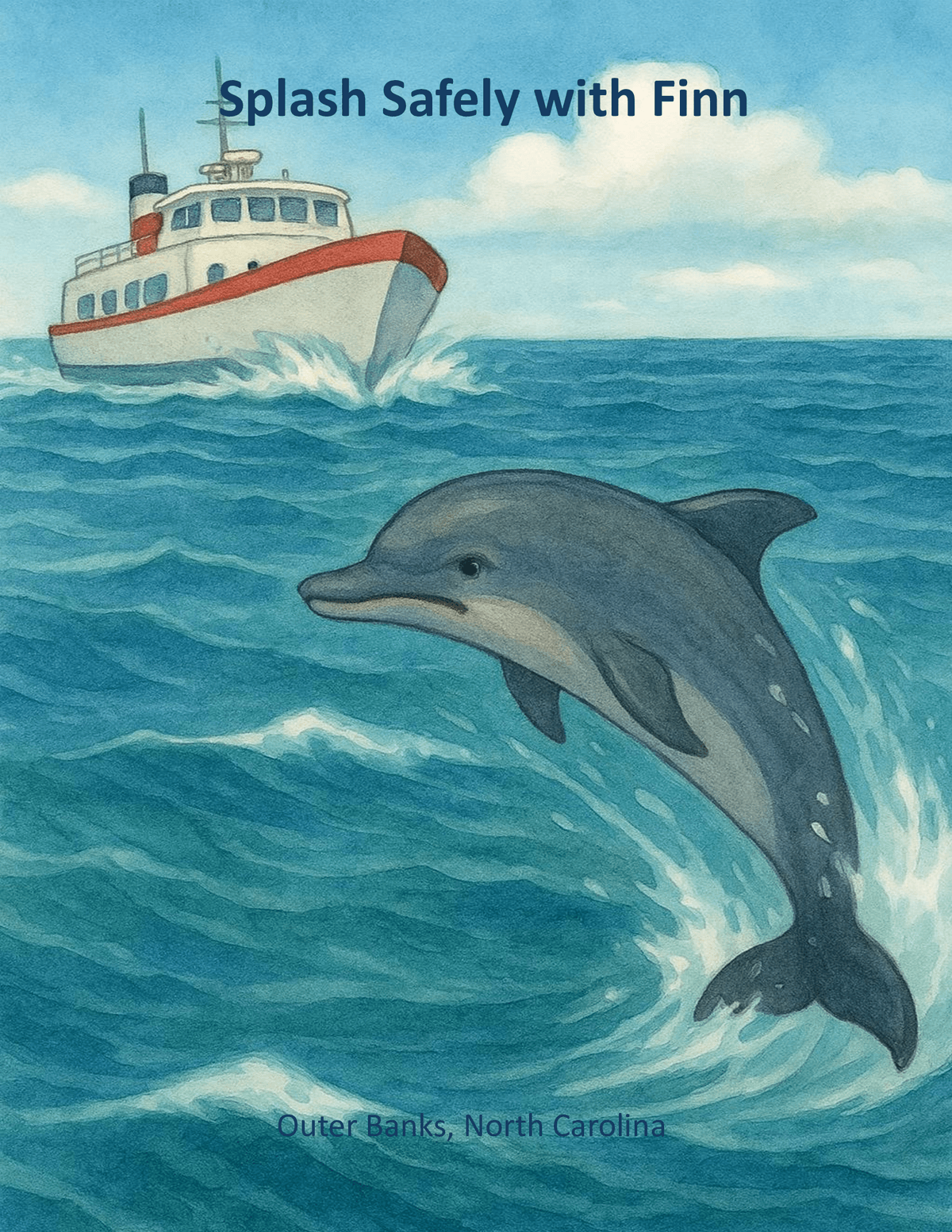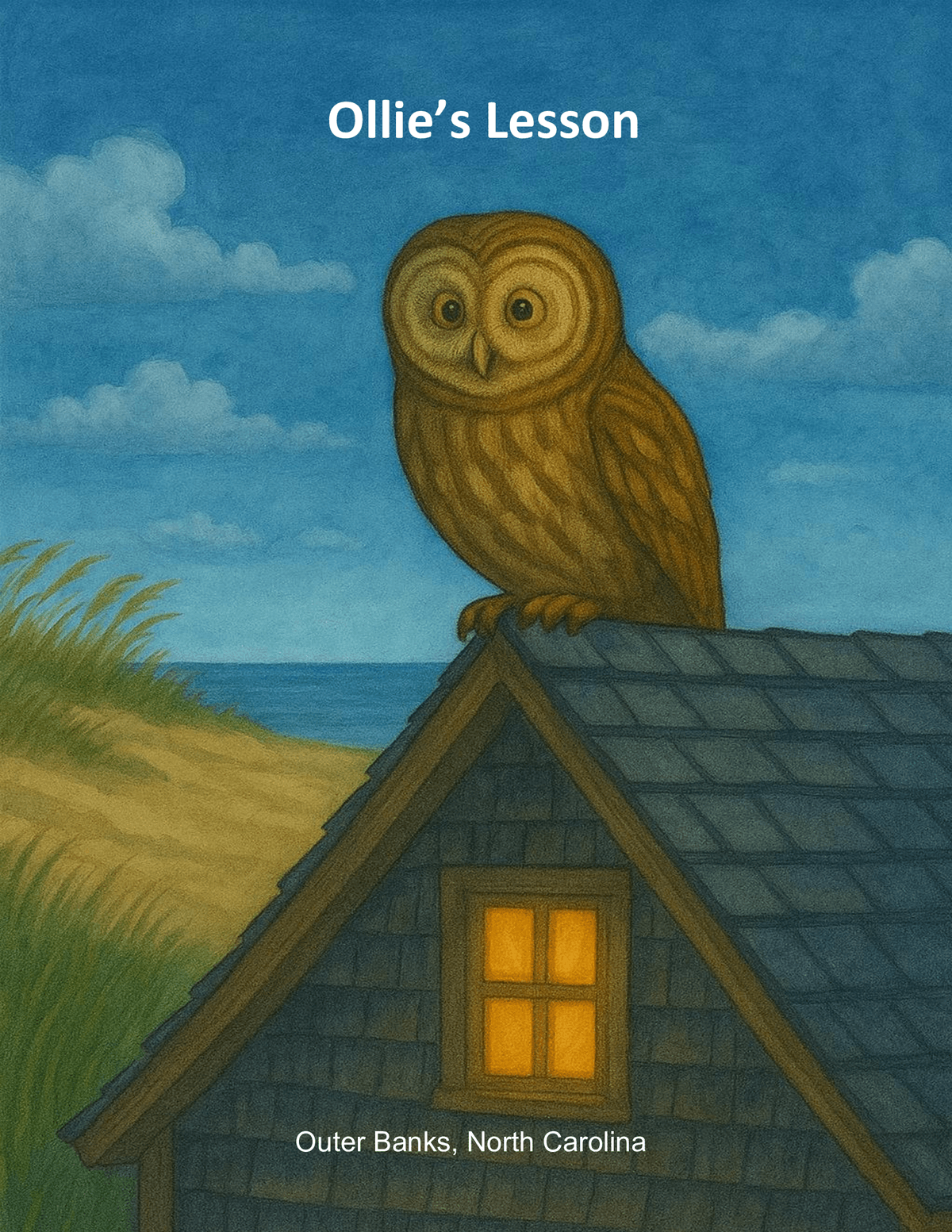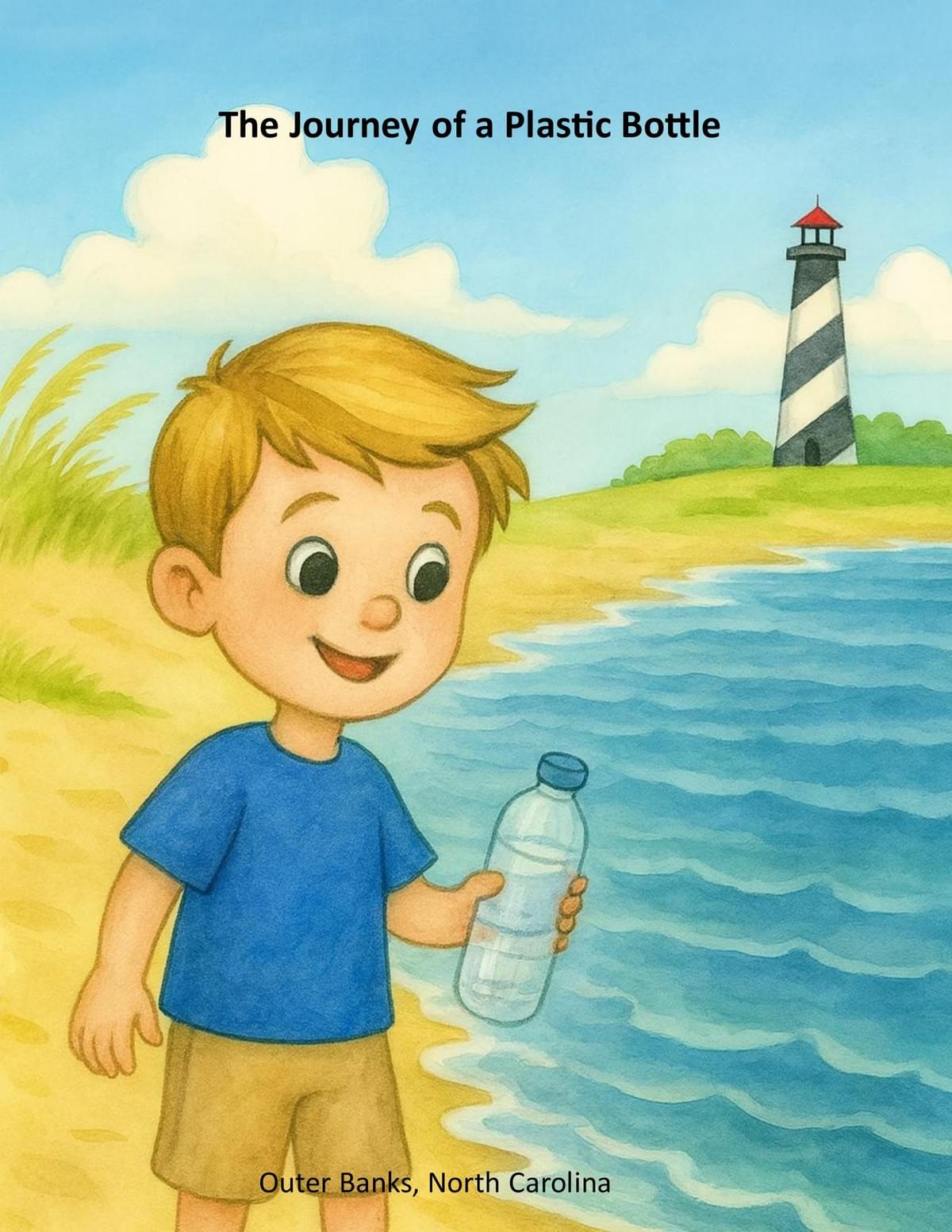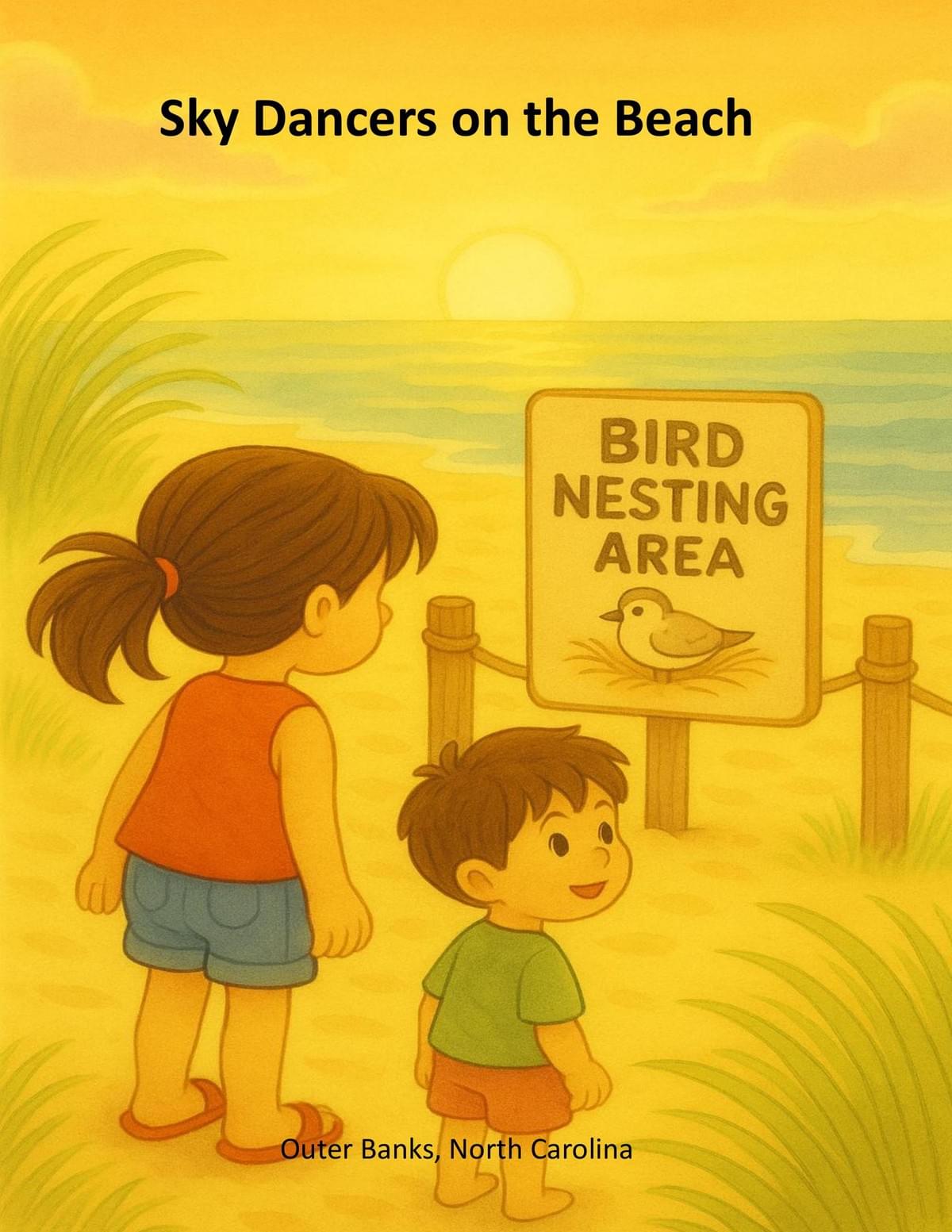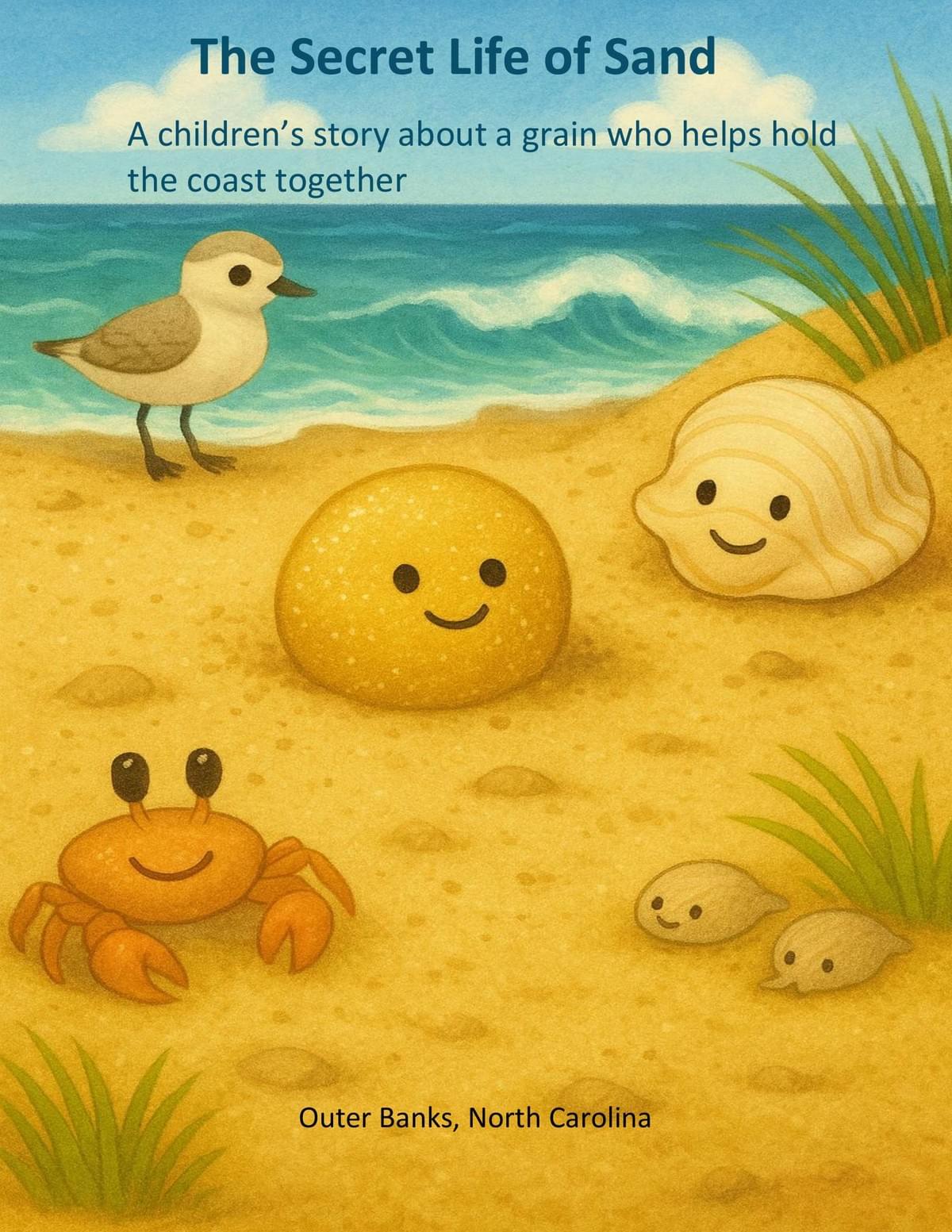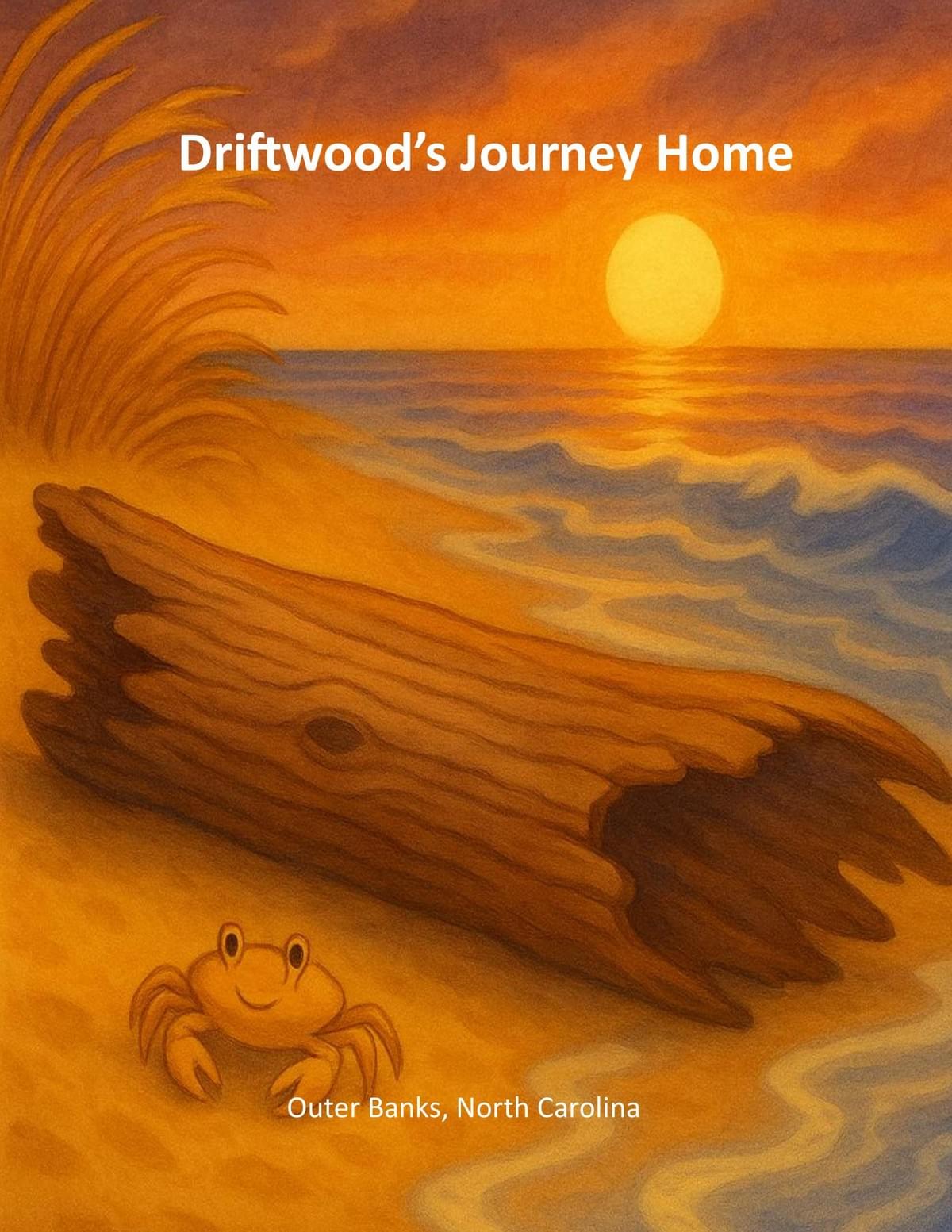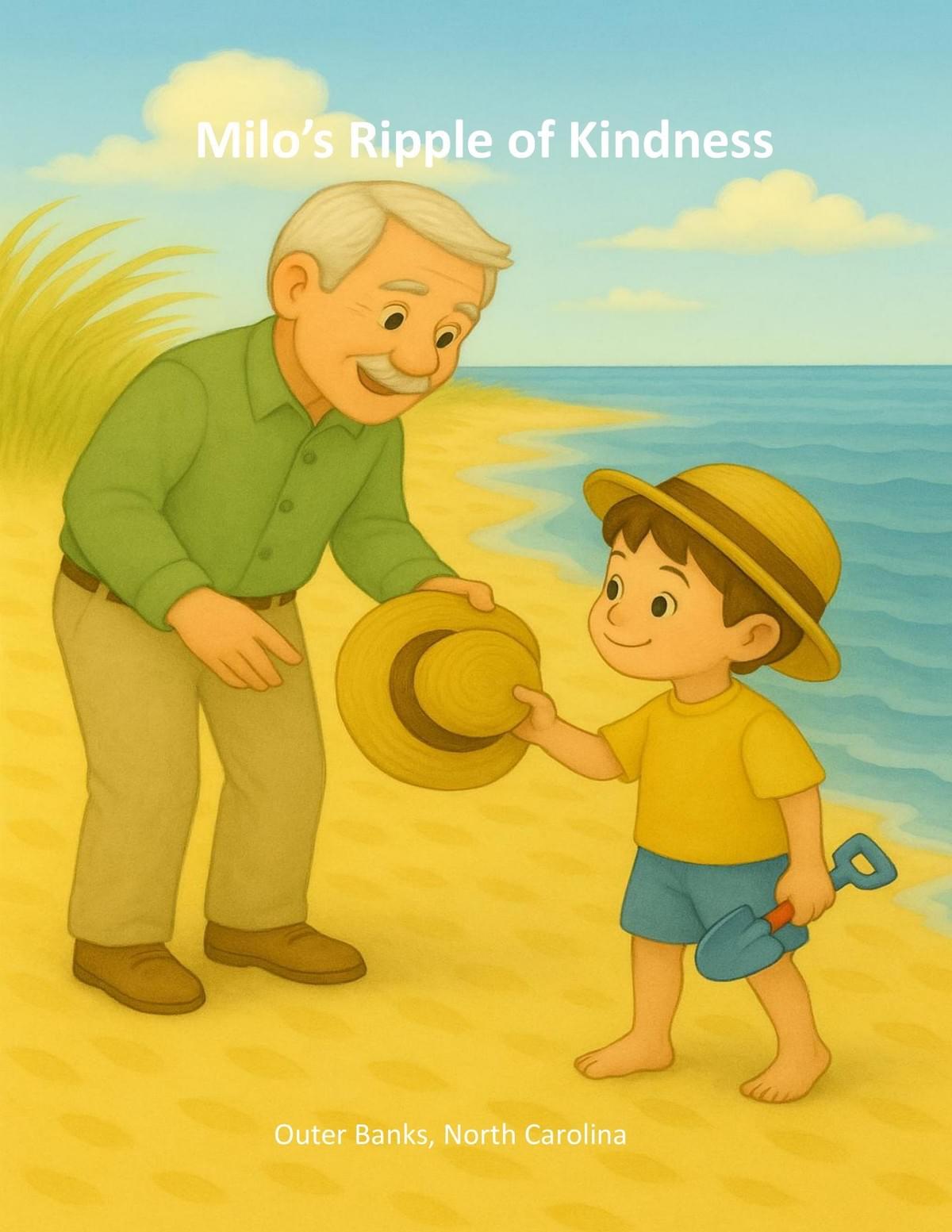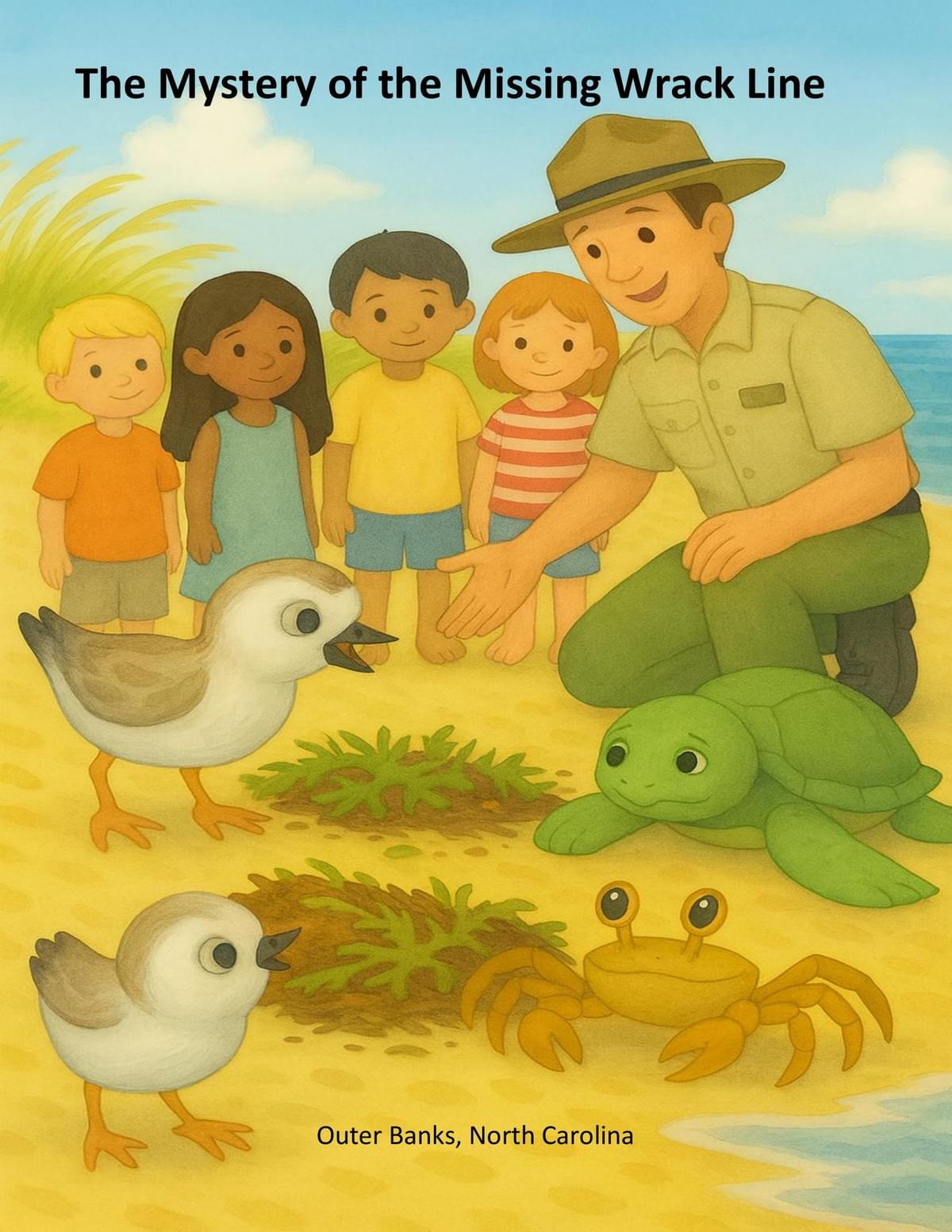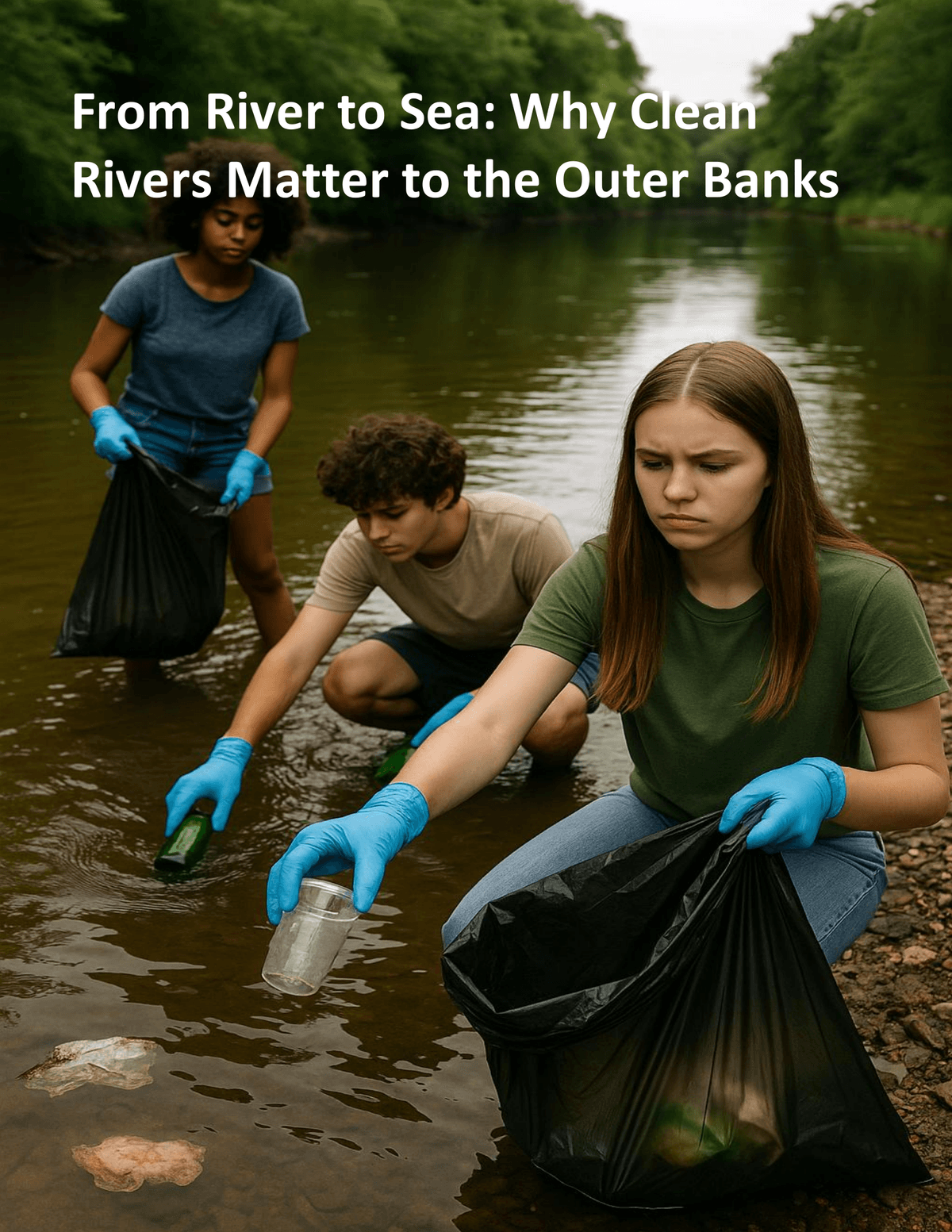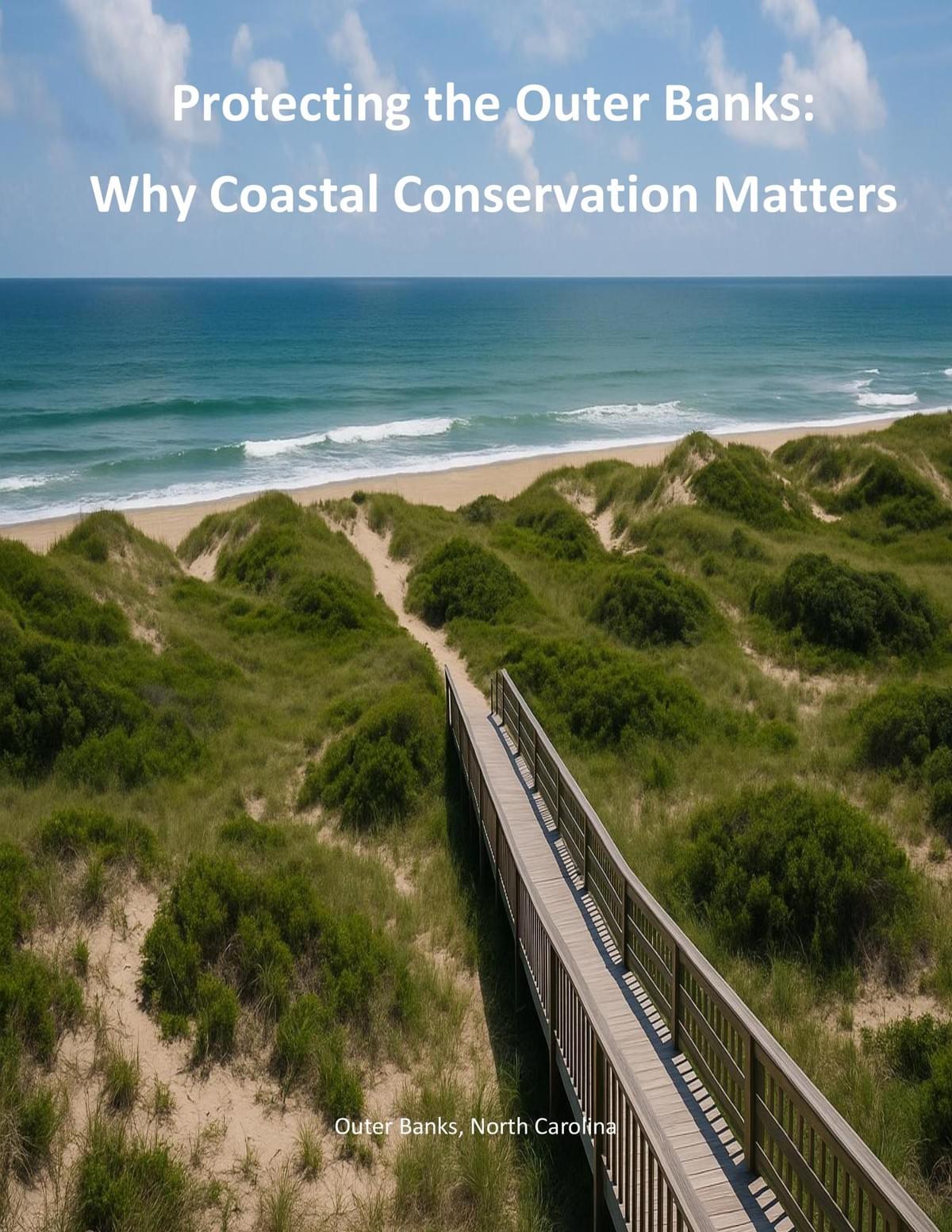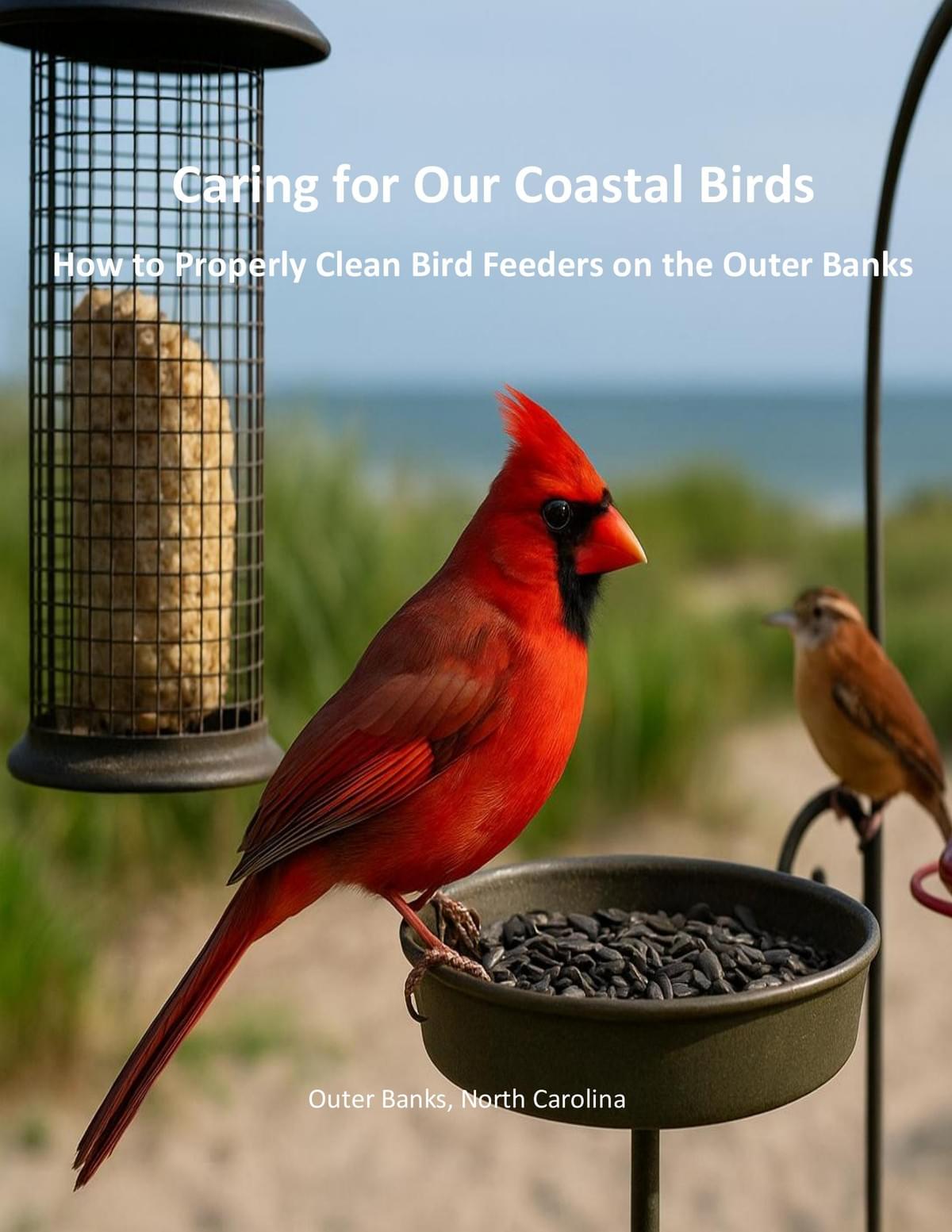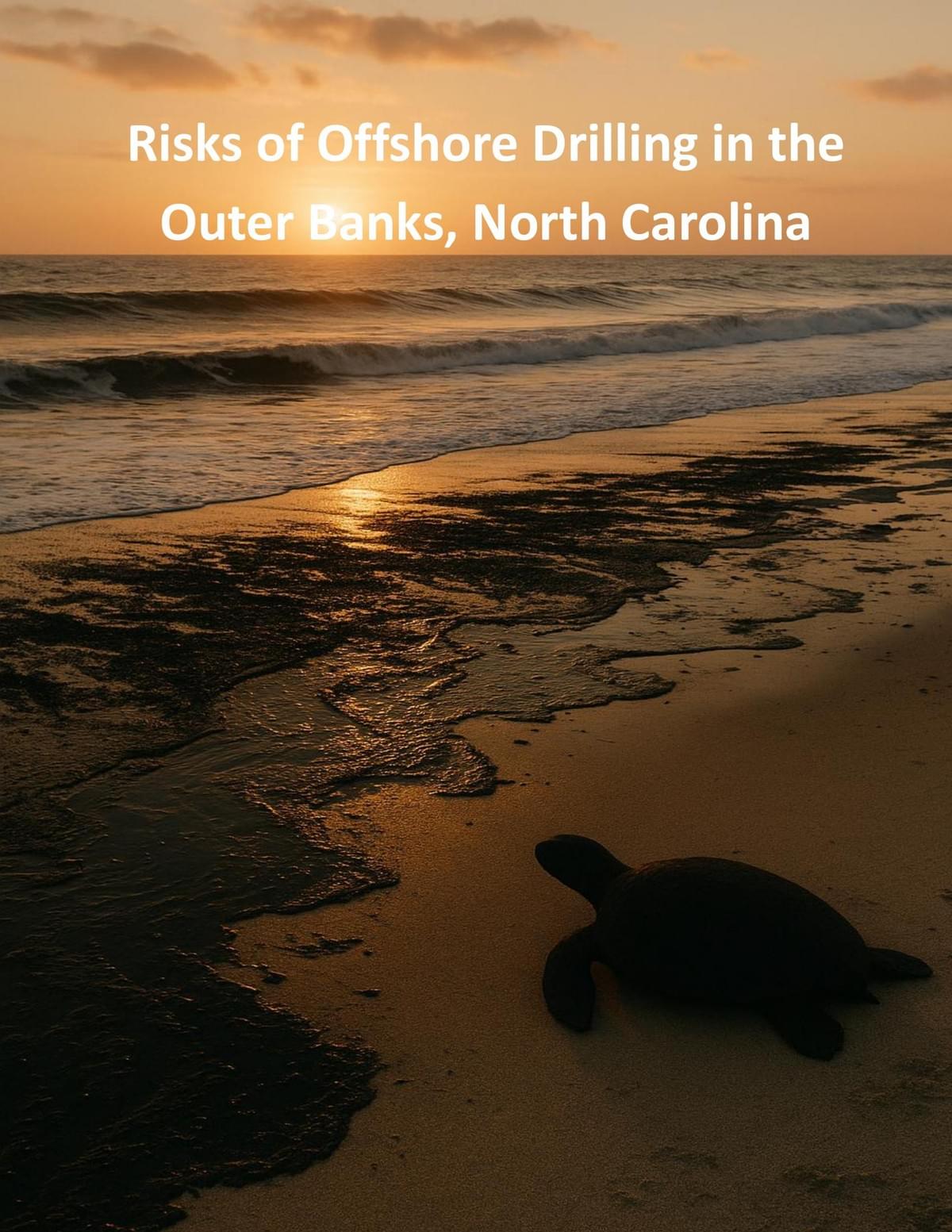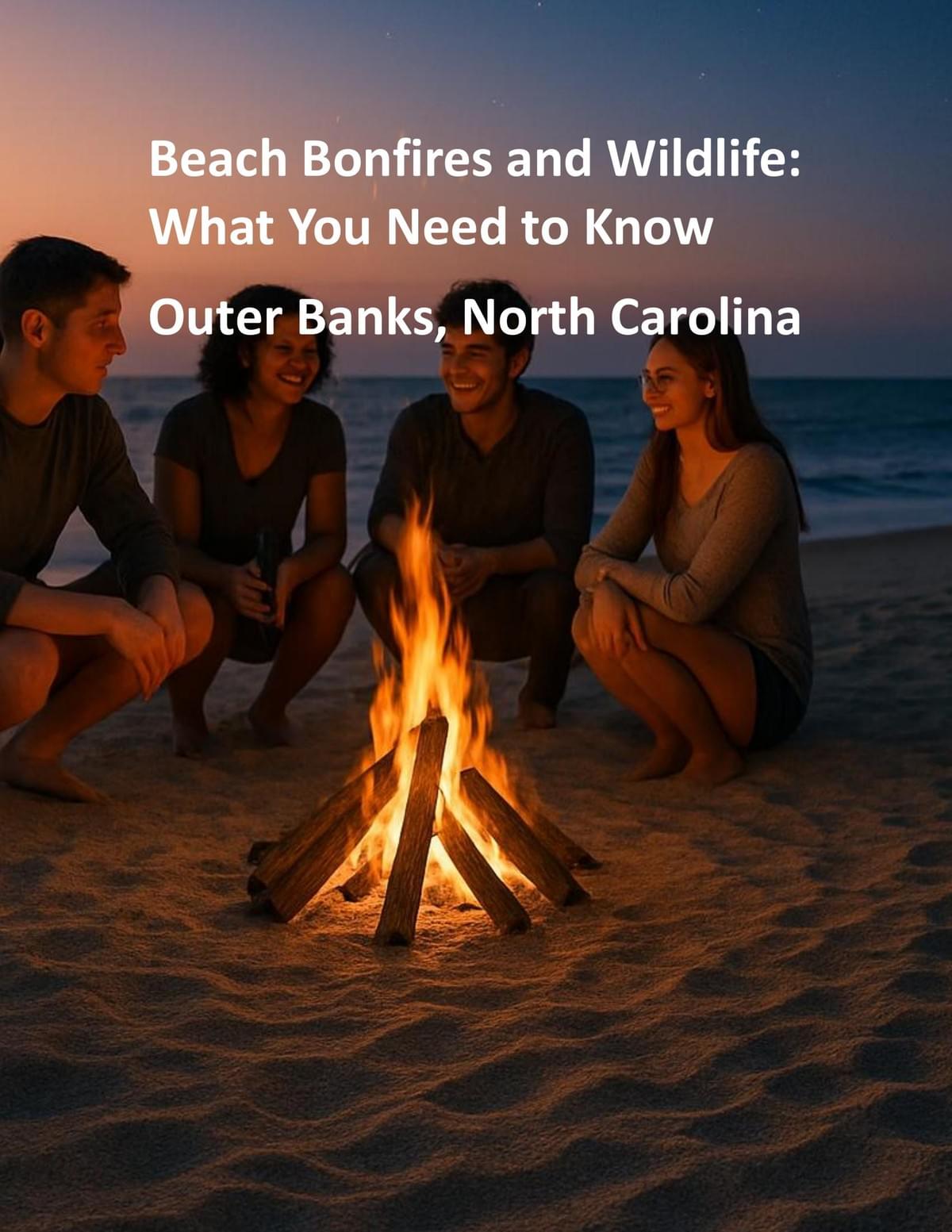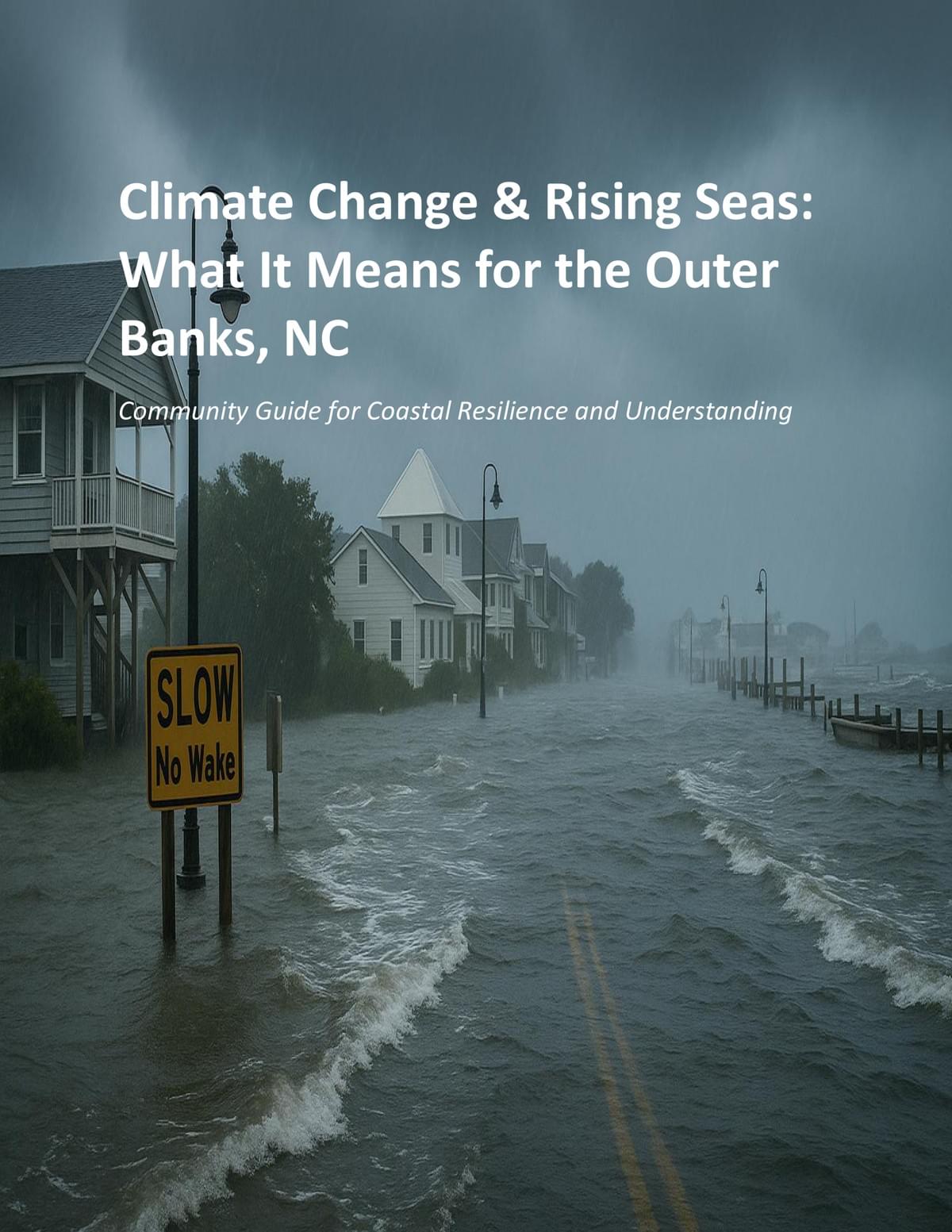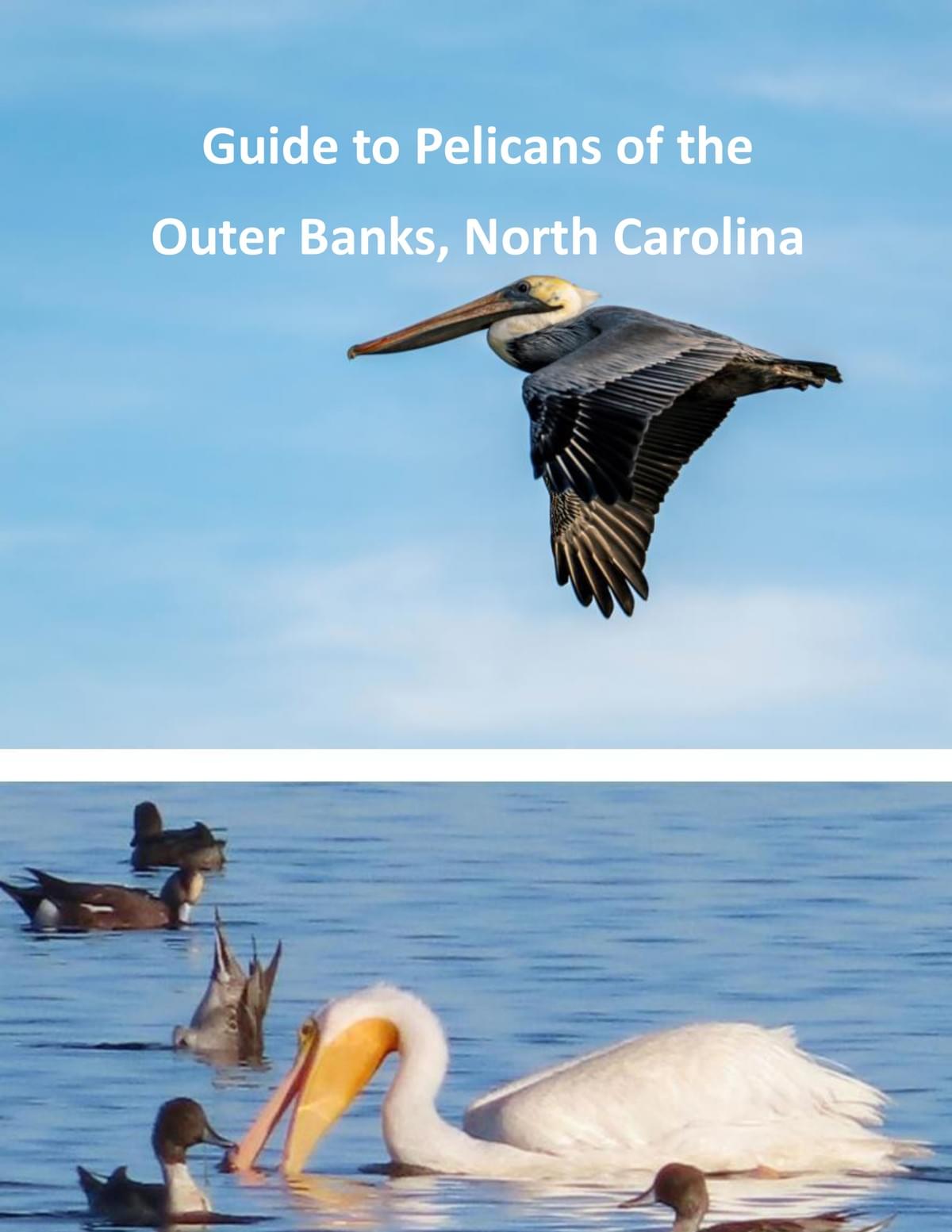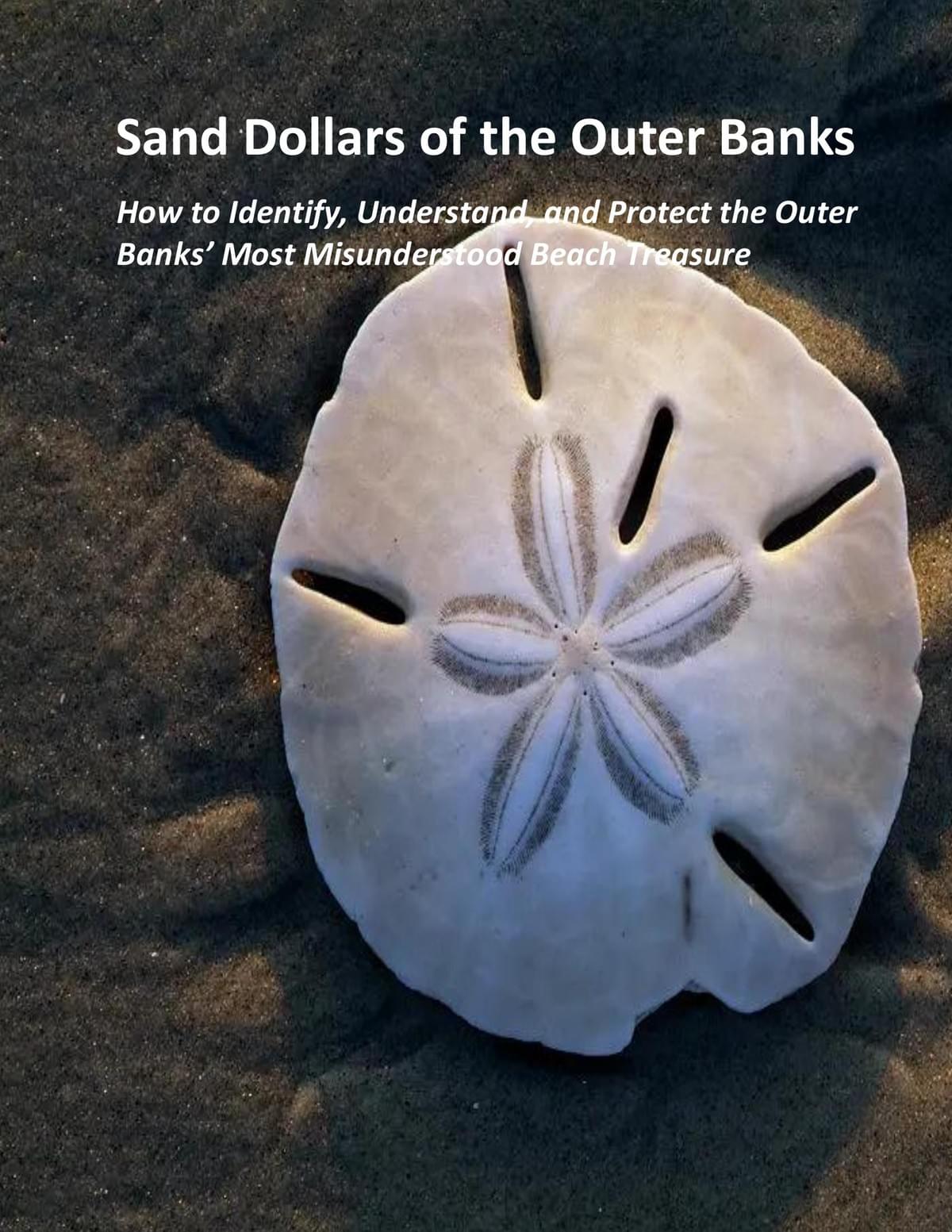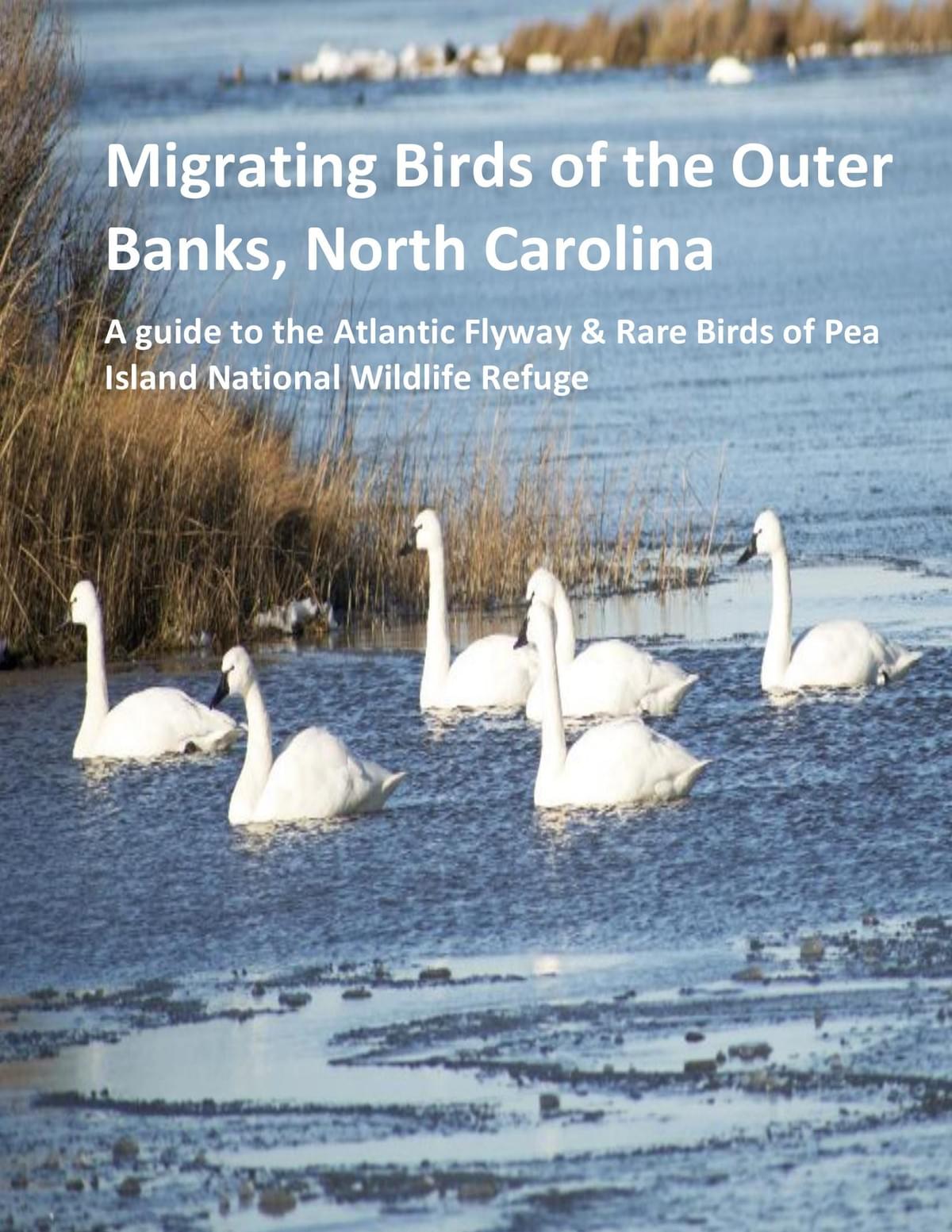
Educational Resources and Outreach
Promoting awareness and action for coastal conservation
For Children:
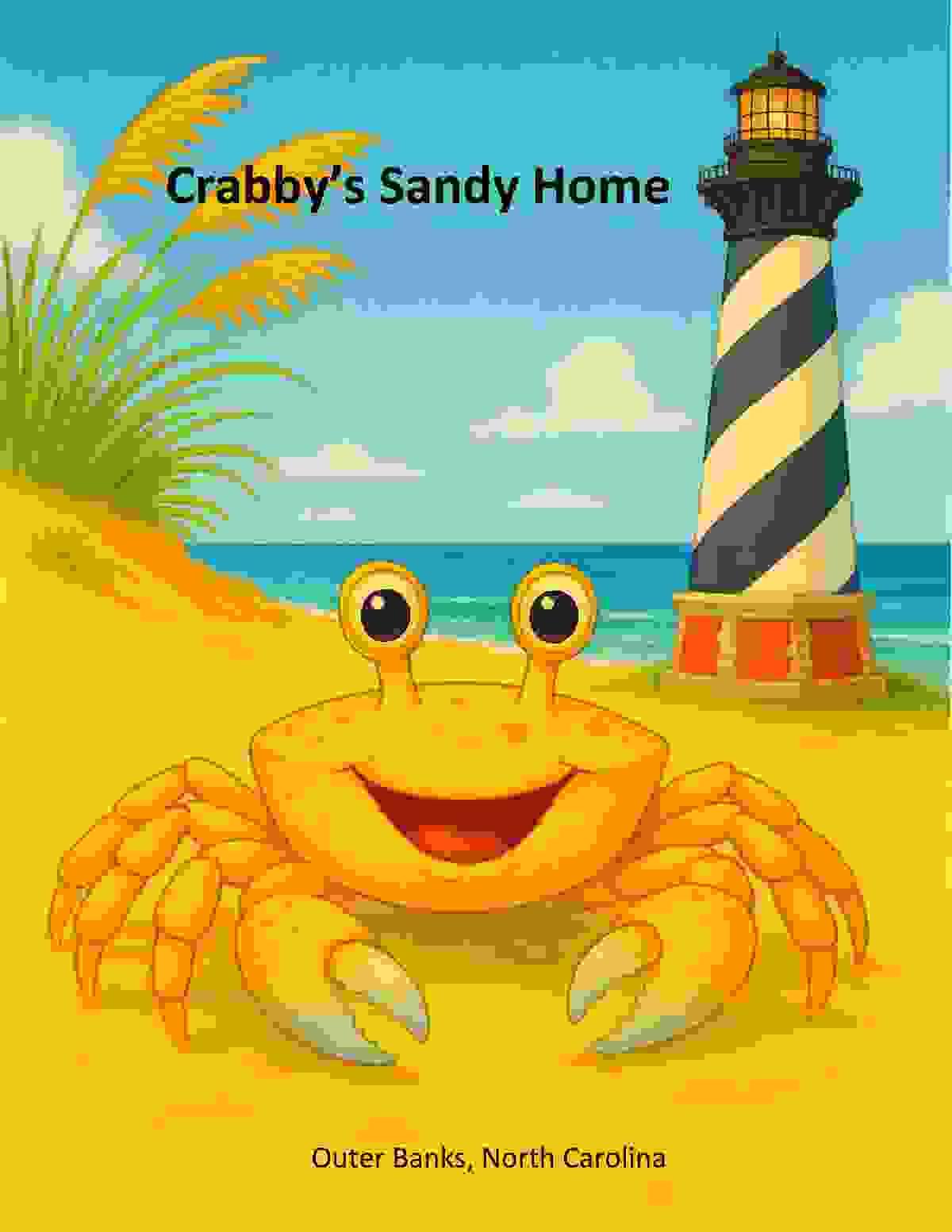
Crabby, a shy ghost crab, lives peacefully in the dunes of the Outer Banks. One day, two children, Clara and Ted, accidentally step on his burrow while playing. Surprised and feeling bad, they learn from their mom that dunes are homes for animals like Crabby. From then on, they stay on the paths and watch
from afar, careful not to disturb nature.Message: Stay off the dunes—it's where animals like Crabby live. Let nature be.
Buzz the bee and Bloom the butterfly notice that something is wrong—lawns and flowers are being sprayed with harmful chemicals. It makes them dizzy and hard to find nectar. A boy named Eli realizes the sprays may be hurting helpful insects like them. He and his mom stop using chemicals and plant pollinator-friendly flowers. Buzz and Bloom return, happy and healthy.
Message: Avoid using harmful sprays—plant pollinator-friendly gardens to help bees, butterflies, and nature thrive.
Jan and Jake visit the Outer Banks and are thrilled to see wild horses near the beach. As they get too close, a park ranger stops them and explains the importance of respecting these animals. The horses have lived there for over 400 years and must be admired from a distance. The ranger teaches them not to feed, touch, or chase the horses, and to always protect their habitat. The children learn to enjoy the horses safely and respectfully.
Message: Wild horses deserve space andprotection—observe from afar and never feed or disturb them.
Tally, a sea turtle from the Outer Banks, gets tangled in fishing line while swimming. She struggles to escape but can’t free herself. Thankfully, a beachgoer sees her and calls a rescue team. They carefully cut the line and help her recover. Tally swims off happily, reminding readers to keep the ocean clean.
Message: Trash like fishing line harms ocean animals. Help protect wildlife by keeping beaches and oceans clean.

Champ and the Moonlight Hole is a children's story created by the Outer Banks Coastal Conservation to promote environmental awareness. It follows three siblings—Jimmy, Suzie, and Tommy—who vacation every summer at the Outer Banks, North Carolina. One day, they dig a giant hole in the sand but forget to fill it in before leaving. That night, their tiny dog, Champ, falls into the hole while enjoying the moonlight and gets stuck.
Thankfully, a woman walking her dog hears Champ’s barks and rescues him. The next morning, the children find a note reminding them to fill in beach holes to protect animals and people. They feel remorseful and commit to filling in holes from then on. The story ends with a message encouraging everyone to fill beach holes for the safety of wildlife, pets, and people.
Message: Always fill in holes on the beach—it helps protect animals and people.

Sandy the ghost crab and her animal friends discover their beach home is being harmed by trash, holes, and disturbed habitats. When a group of children arrives and unknowingly adds to the damage, the critters draw attention to a “Leave No Trace” sign. The kids quickly learn to respect nature, clean up their mess, and become “Beach Heroes.” The story teaches the importance of caring for coastal wildlife and leaving no trace behind.
Message: The story teaches the importance of caring for coastal wildlife and leaving no trace behind.
Luna, a clam living on the Outer Banks, notices the shoreline disappearing. She asks her friend Oscar the Oyster for help. He explains that instead of seawalls, the Outer Banks uses living shorelines—natural barriers made of oysters and marsh grasses that protect the coast and provide habitat.
Luna joins the effort and teaches others: “We don’t need walls. We build with life.”
Message: Living shorelines are a nature-based solution that preserves coastal ecosystems and supports wildlife—just the way Luna likes it.
Percy the Pelican mistakes a fishing line for food and gets a hook stuck in his beak. Hurt and frightened, he flies to shore where a girl named Mary and her grandpa, a retired wildlife rescuer, spot him. They call a wildlife rescue center, and a trained rescuer named Jamie safely removes the hook. The story teaches children not to chase or touch injured birds but to call an adult and a wildlife rescue center instead. It also emphasizes the importance of cleaning up fishing gear to protect coastal wildlife.
Key Messages:
- Never leave behind fishing line or hooks.
- Don’t approach injured birds—get help from trained rescuers.
- Kindness includes being careful and responsible.
Sunny the sandpiper notices changes on her beach in the Outer Banks. Her friend Turtle Tom explains that climate change is causing sea levels to rise and storms to worsen. Sunny and her friends make a list of ways to help—like planting grass, saving energy, and cleaning up trash. Together, the animals work to protect their home, showing that small actions can make a big difference.
Piper the Piping Plover finds a balloon on the beach that gets tangled around her leg. Her friend Clawdia explains how balloons and plastic straws harm wildlife. Wise Old Heron teaches them safer ways to celebrate—like using reusable items and picking up litter. Piper and her friends throw a pollution-free beach party and spread the message:
- “Skip the balloon. Save a loon.”
- “Say ‘no straw, hoorah!’”
- “A clean coast is the best party of all.”
The story encourages children to protect the shore with eco-friendly choices.
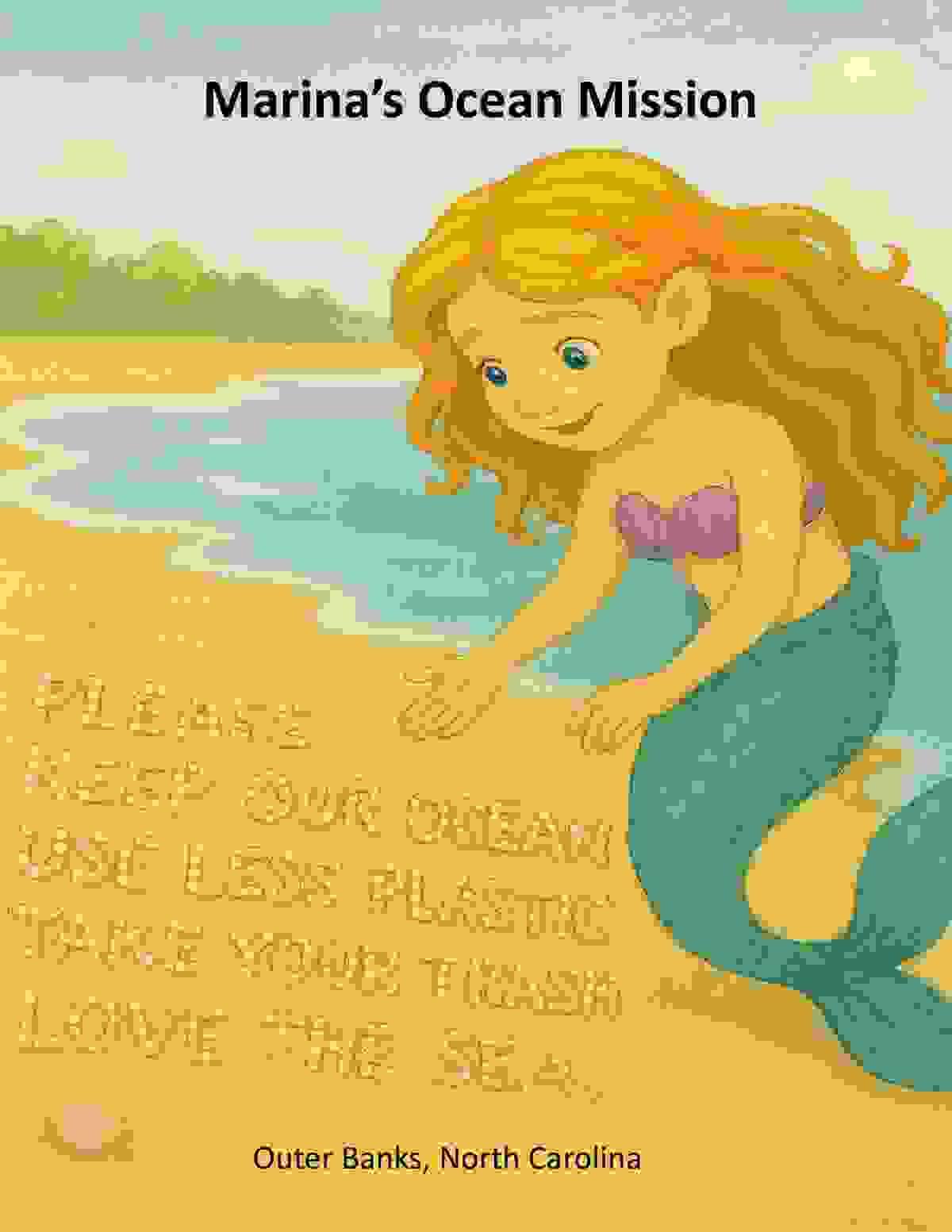
Marina the mermaid enjoys swimming through her beautiful ocean home until she discovers that sea creatures are getting hurt by trash—plastic rings, bags, and bottles—floating in the water. Realizing the pollution is coming from humans on the beach, Marina gathers her ocean friends to help clean up. After restoring the sea, she leaves a message onshore asking people to take care of the ocean. A young girl named Lily finds the message and inspires her family to help. Soon, both sea creatures and humans are working together to keep the ocean clean, proving that everyone can be a hero for the sea.

Diane and Jack visit Cape Hatteras and notice the beach is smaller and the water closer. Their mom explains climate change—how greenhouse gases warm the Earth, melt ice, raise sea levels, cause erosion, and make storms stronger. She shares ways kids can help, like saving energy, walking or biking, reducing plastic, cleaning up trash, and planting dune grass. Inspired, the children clean the beach and teach others. The book ends with Outer Banks facts and a quiz showing why eco-friendly choices help protect the planet.
Bandit, a curious raccoon, discovers overflowing trash cans on a windy day in the Outer Banks. With help from Shells the gull and other animal friends, he secures lids, tucks trash inside, and posts friendly reminders to humans about keeping cans closed and bags tied. Their teamwork stops trash from blowing into marshes, the sound, and the ocean—protecting wildlife and keeping the coast clean. The story ends with a “Did You Know?” section explaining how wind carries litter and offering simple “Trash Hero” tips to keep the shore safe.
This children’s storybook follows Piper the pelican, who finds her friend Gulliver the gull trapped in plastic soda rings. A park ranger named Mia explains that soda rings can injure or kill animals if not cut before disposal. She cuts the rings, freeing Gulliver, and together they spread the message: “Cut the Rings – Save a Wing!”
The book also includes an educational note explaining that birds, crabs, sea turtles, and fish can become trapped in soda rings, preventing them from moving or eating. Thousands of animals die each year from such looped litter. The solution is simple—cut all rings before throwing them away to help protect wildlife.

Hazel the hummingbird learns that red dye in nectar and dirty feeders can make birds sick. With help from her friend Benny and a kind human named Mia, she discovers the safe recipe—1 part sugar to 4 parts water, no dye—and the importance of cleaning feeders every 2–3 days. Hazel now shares four rules: clear nectar only, fresh nectar often, clean feeders, and use the 1:4 recipe.
This children’s story, “Grandpa’s Ocean-Safe Fishing Lesson”, teaches safe, gentle fishing in the Outer Banks. Max learns from his grandpa how to catch and release fish without harming them—using circle or barbless hooks, wetting hands before handling, keeping fish in the water, removing hooks gently, cutting the line if the hook is too deep, and helping the fish breathe before release.
The book includes:
- Step-by-step hook removal tips using safe gear and minimal handling.
- Outer Banks–specific notes on fishing licenses, size limits, and catch-and-release species.
- A message that fishing responsibly helps keep the ocean healthy.
In the Outer Banks, Lila learns from park ranger Ms. June that lawn sprays—fertilizers and pesticides—wash into the ocean, causing algae blooms, low oxygen, and harm to sea life. With her friend Finn, she encourages neighbors to switch to eco-friendly yard care like planting native plants, pulling weeds by hand, using compost, and building rain gardens. Soon, the water clears and wildlife returns—proving that healthy yards mean healthy oceans.
Message: Healthy yards without chemicals help keep oceans and coastal wildlife thriving.
Finn the Dolphin enjoys swimming and playing in the ocean. One day, a large, noisy boat comes too close, making Finn nervous, so he swims away. Later, a kayak keeps a safe distance, allowing Finn to feel safe and happy. To show his gratitude, Finn blows a bubble ring. The story’s message is that good friends keep their distance from dolphins, seals, whales, and other marine animals.
A “Did You Know?” section explains that getting too close to sea animals can scare, injure, or disrupt them. Fast boats may hit them, and chasing them can cause exhaustion or illness. The best practice is to watch from afar, go slow, and never touch or feed wild animals, so they can live safely in their ocean home.
This children’s storybook follows Ollie the barred owl, who enjoys hunting mice in the marshes of the Outer Banks. One night, Ollie spots an easy catch near a cottage, but his friend Finn the fox warns him not to eat it—it may have consumed rat poison. Finn explains that poisoned rodents can pass the toxin to predators and pets, causing serious harm or death. Their friend Piper the piping plover joins in, adding that poison can also hurt other wildlife like crabs, turtles, and scavenger birds if it enters the environment. Together, they share safer alternatives for rodent control: sealing entry holes, storing food in sturdy containers, cleaning up crumbs, and using snap or live traps instead of poison.
Ollie pledges to spread the message: “No poison, more life!”—protecting wildlife and keeping the Outer Banks wild and beautiful.
A children’s story about Sandy the Seagrass and Wally the Seaweed, showing how both provide food, shelter, and clean water for ocean life, help fight climate change, and protect shorelines. Despite being different — plant vs. algae — they’re both vital and need protection from pollution and climate change.
Tally and her turtle friends searched for a safe place to nest. Bright lights from houses and flashlights made it dangerous, but finally they found a dark beach lit only by the moon. Tally laid her eggs, and weeks later the baby turtles safely scurried to the ocean.

The story emphasizes that even the smallest animals are powerful environmental protectors. If people protect crabs, shellfish, and their habitats by avoiding littering, respecting burrows, and safeguarding reefs, they help the entire shoreline thrive.

This illustrated children’s story was created to inspire environmental awareness and responsible behavior among young readers. It follows the path of a discarded plastic bottle in the Outer Banks, North Carolina, showing how a small act—like littering—can have far-reaching effects on marine life and ecosystems.

A tiny coral named Coralita lives in a colorful reef filled with sea life. When the ocean warms, she loses her algae helpers and her colors fade—a process called coral bleaching.
Divers arrive to restore the reef, planting new coral and cleaning away algae. As the water cools, Coral’s colors return, and life comes back to the reef. The story teaches that caring for the ocean helps it heal, encouraging small actions like reducing pollution, saving energy, and using reef-safe sunscreen.
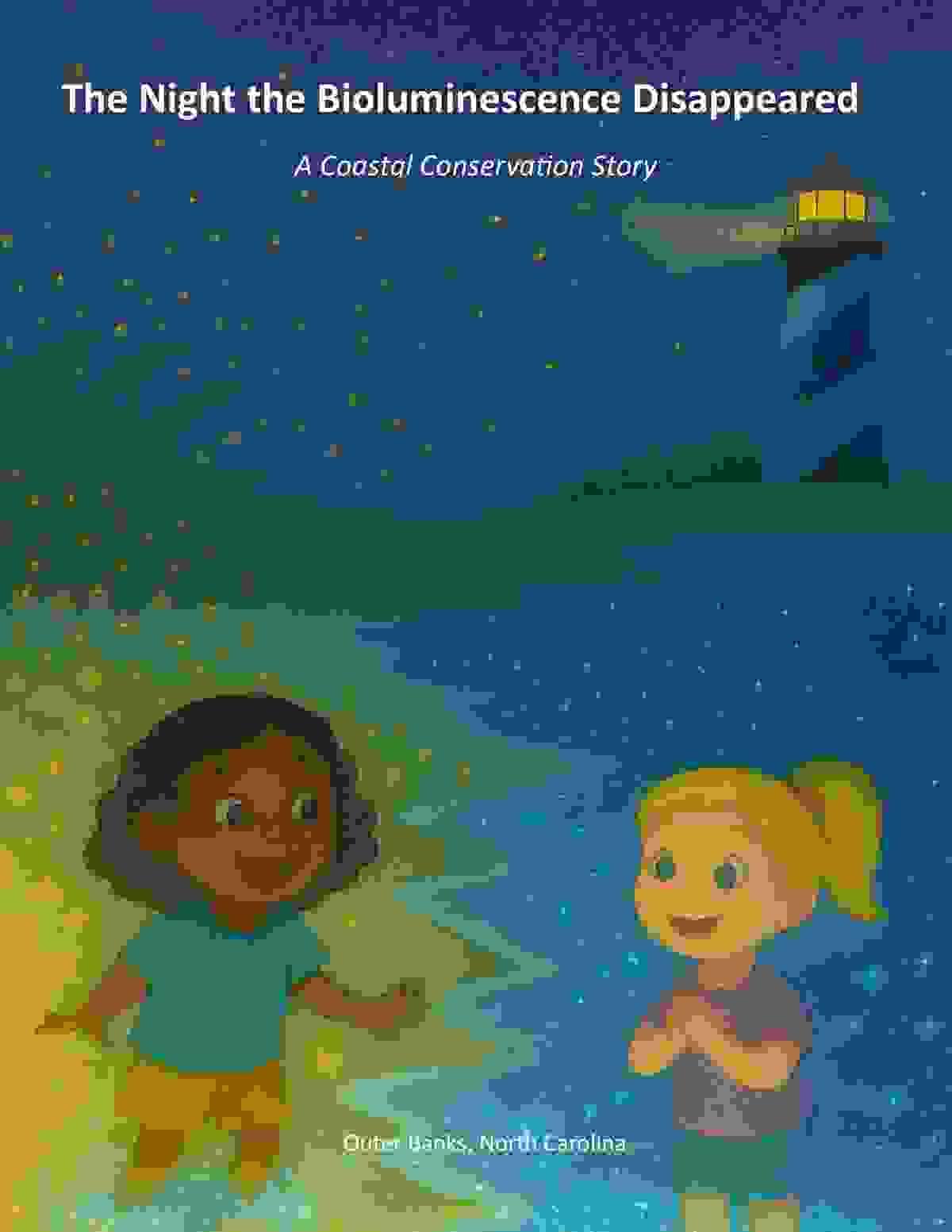
This story teaches how artificial light pollution affects coastal ecosystems. Each summer, the beaches of Cape Hatteras once shimmered with bioluminescent plankton and fireflies. But as new houses and boardwalks added bright lights that stayed on all night, the natural glow vanished. Children noticed the darkness and learned that excessive lighting confuses wildlife—fireflies stop flashing, plankton cease glowing, and sea turtles and birds lose their way.
In response, the community worked together to reduce light pollution by installing motion sensors, dimmer bulbs, and turning off lights earlier. Their efforts restored the natural night—waves glowed again, and the fireflies returned. The story’s message is simple yet powerful: protecting natural darkness helps coastal wildlife thrive. Everyone can help by using shielded, low-intensity, motion-activated lights and supporting “Lights Out” programs along the Outer Banks.

This story teaches children how to share the beach with wildlife. Siblings Mary and John visit the beach and learn from their mom that tiny shorebirds nest right in the sand. By staying on safe paths and giving the birds space, they discover that protecting wildlife simply means being kind and careful.
The story highlights how shorebirds migrate thousands of miles, how their camouflaged nests are easy to disturb, and how visitors can help by avoiding nesting zones, keeping dogs leashed, and walking below the high-tide line. It reminds readers that the beach is big enough for everyone — people and birds alike.
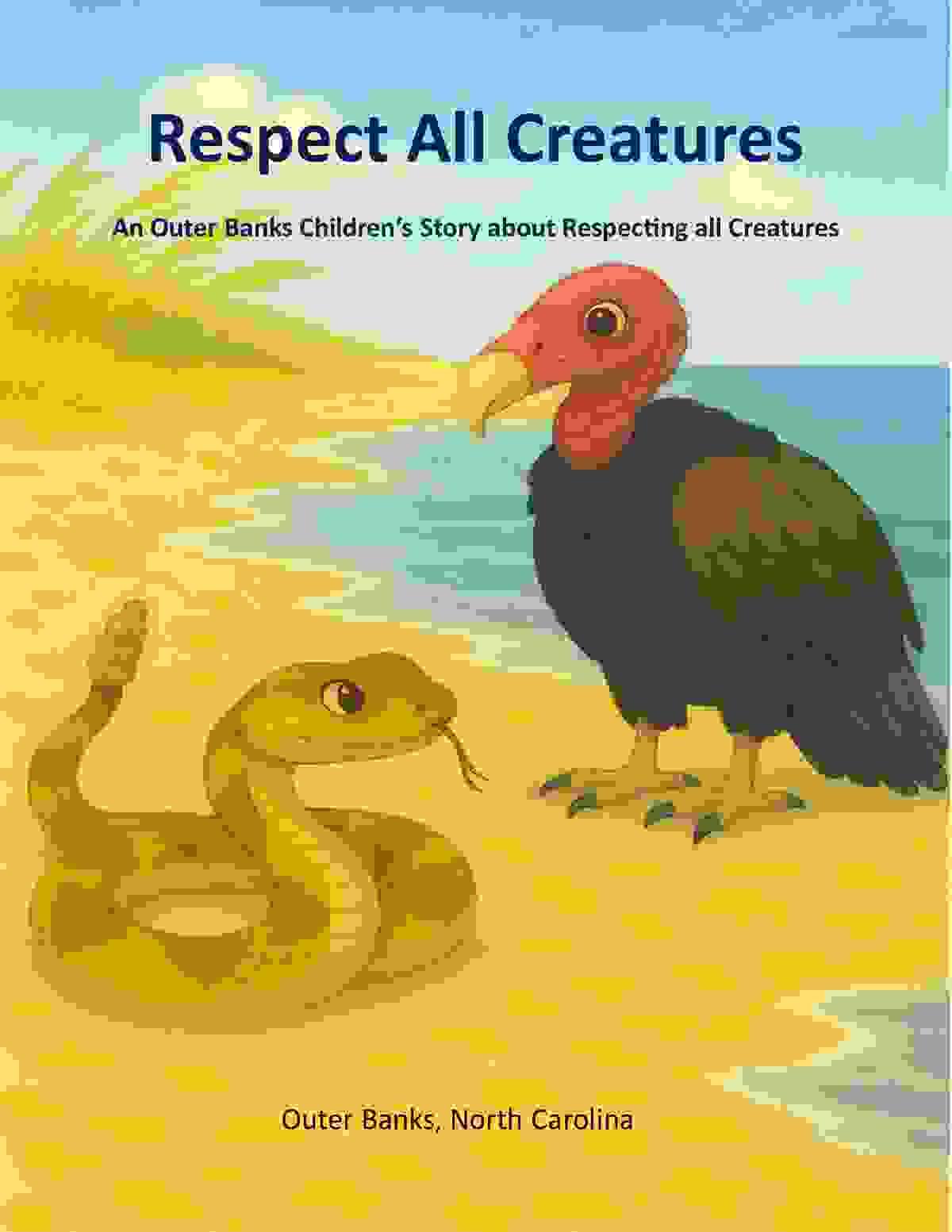
Juanita spends a day exploring the beach and dunes, learning to appreciate and protect all forms of life. She observes a variety of coastal creatures — a ghost crab, pelican, vulture, rattlesnake, jellyfish, spider, and dolphins — treating each with care and respect. When others might react with fear or harm, Juanita chooses kindness and understanding, recognizing that every animal has an important role in nature’s balance.
By the end of the story, Juanita shares her realization with her mother: that even creatures people often fear, like rattlesnakes or jellyfish, deserve to live peacefully. Her mother affirms that protecting all life keeps the world in harmony.
The accompanying “Did You Know?” section explains the ecological importance of these creatures — rattlesnakes control rodents, vultures prevent disease, spiders limit pests, jellyfish support ocean food webs, and ghost crabs clean the beaches. The story closes with a simple message: Don’t kill — just respect. Every creature has a place and purpose.

A tiny grain of sand named Sandy is born in the mountains and journeys through rivers to the sea, where she becomes part of a beach on the Outer Banks. Along the way, she learns how sand protects sea turtle nests, supports dunes, and provides homes for crabs, clams, and countless tiny creatures.
When someone extinguishes a cigarette in the sand, Sandy becomes sick, learning that cigarette filters contain plastic and toxins harmful to wildlife. Thankfully, a young boy named Juan and his mother clean it up, showing how small actions can make a difference. Later, Sandy witnesses beach nourishment—the process of adding sand to eroding beaches—and learns it can help if done responsibly but harm other ecosystems if overdone.
In the end, Sandy reflects on her journey and declares that sand is more than dust—it’s the heartbeat of the beach, vital to the health of the coast and its creatures.

This illustrated storybook teaches children about the ecological importance of driftwood along the beaches of the Outer Banks, North Carolina. It combines a heartwarming narrative with educational science facts to inspire environmental stewardship.
On a quiet Outer Banks beach, a piece of driftwood rests among the dunes, providing shelter for crabs and plants. One stormy night, powerful waves sweep him out to sea, where he encounters floating plastic waste that will never biodegrade. Feeling lost and homesick, Driftwood longs to return to his natural home. A dolphin named Echo and a pelican help guide him back toward shore, riding the tides and winds. When he finally washes up on the beach, people are cleaning debris. A park ranger explains that Driftwood isn’t trash—he’s an important part of the beach ecosystem, providing food and shelter for wildlife and helping to stabilize dunes. As the sun sets, Driftwood feels proud to be “home again and doing his job.”
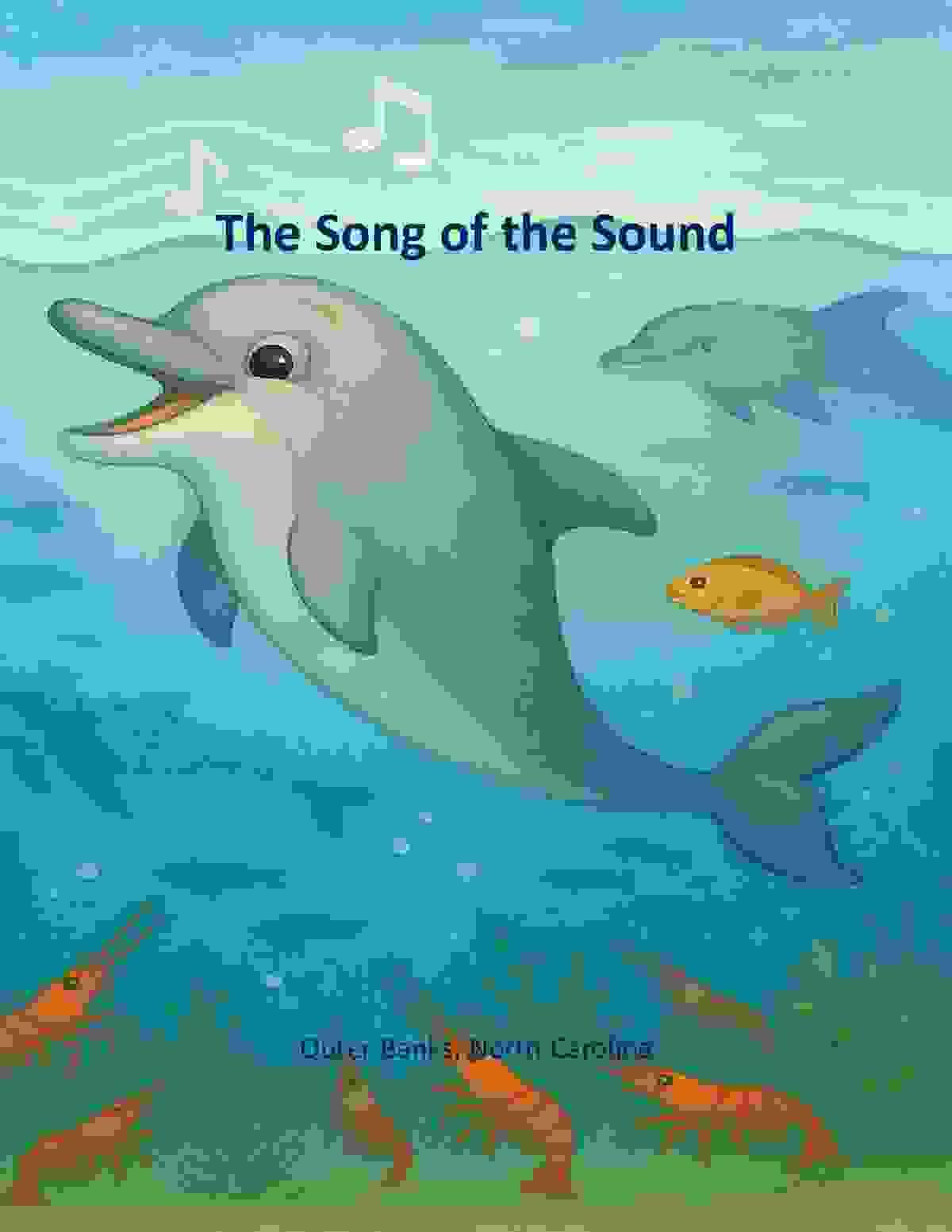
“The Song of the Sound” is an educational storybook created to teach children about ocean noise pollution and its impact on marine life. Set in the waters of the Outer Banks, North Carolina, it emphasizes the importance of quiet, balance, and respect for marine ecosystems.

This children’s story follows Milo, a kind-hearted boy living by the sea in the Outer Banks, North Carolina. Through his simple, caring actions during one day, the story teaches young readers about empathy, environmental stewardship, and the ripple effect of kindness.

This illustrated children’s storybook explains how tides work and why they are vital to coastal ecosystems through the eyes of Luna, a curious loggerhead turtle hatchling, and her friend Percy the Pelican.

This storybook teaches children about the ecological importance of the wrack line — the band of seaweed, shells, and driftwood left behind by the tides — along the beaches of the Outer Banks, North Carolina.
Key Message: The story reminds readers that beach “cleanups” should remove trash, not natural materials like wrack. Healthy wrack lines are vital for wildlife, dune formation, and the overall balance of the coastal ecosystem.
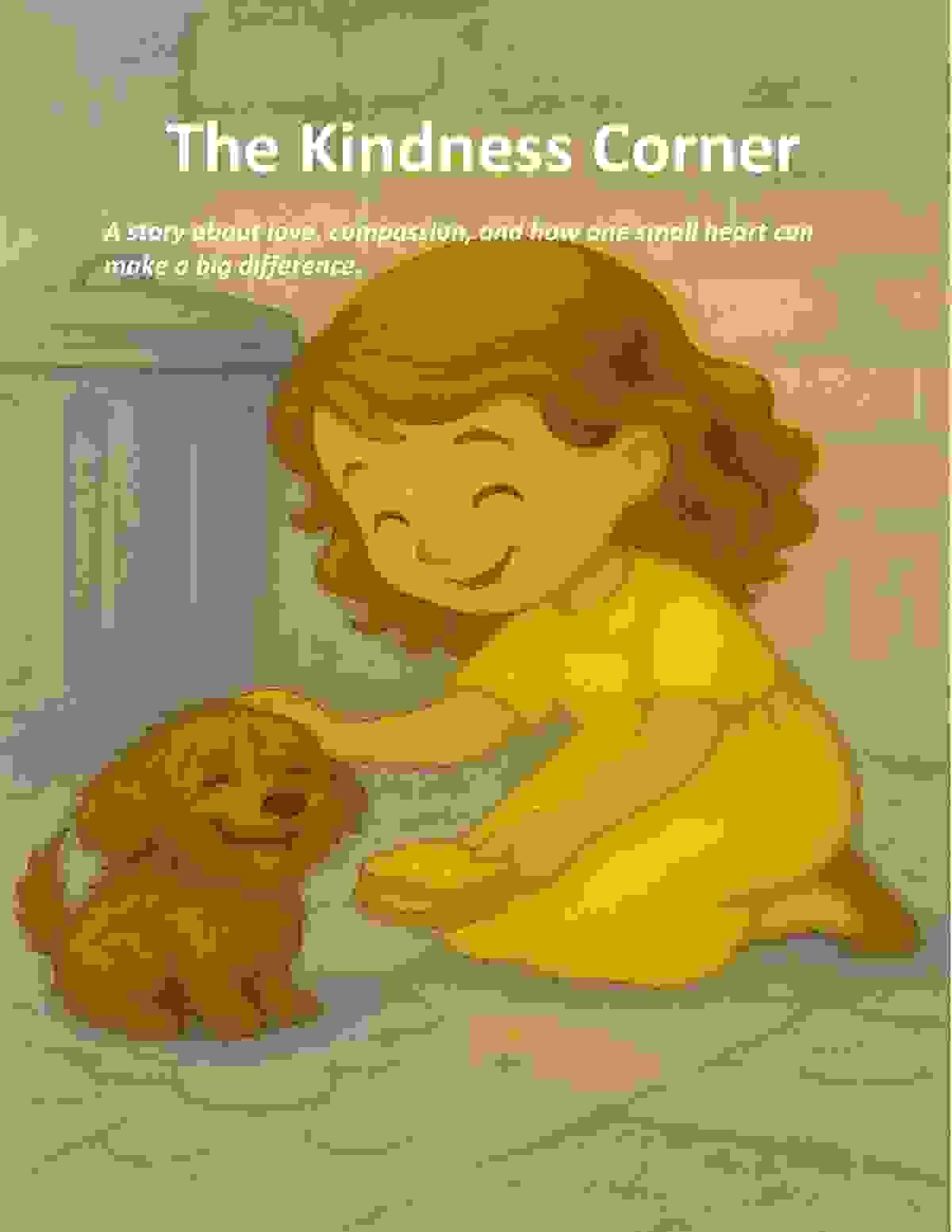
The Kindness Corner is a children’s storybook to teach compassion, empathy, and responsible care for animals. It encourages kindness toward all living creatures and demonstrates how one person’s small acts of love can make a big difference in the world.
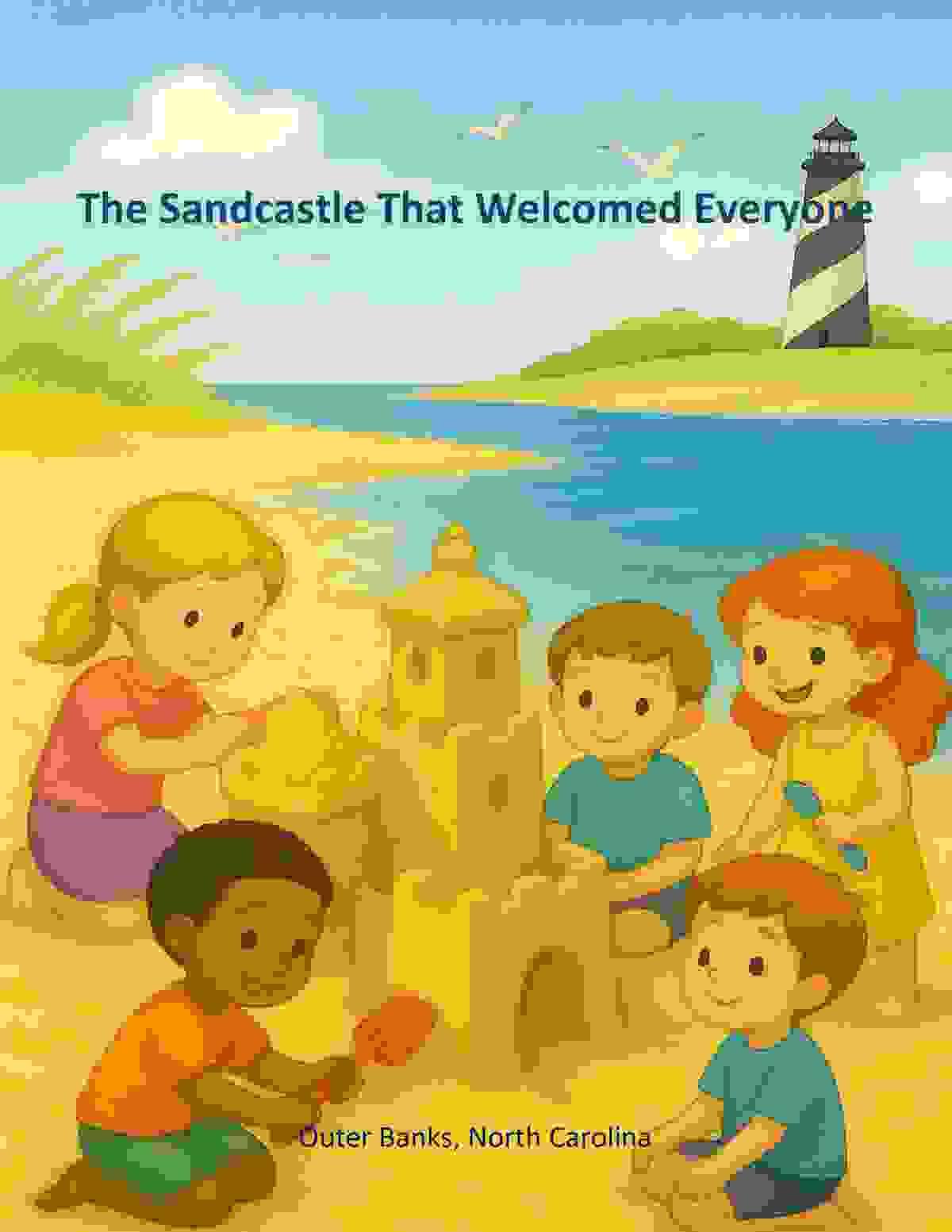
Overview:
This illustrated children’s story promotes kindness, inclusion, and environmental appreciation. It’s designed as a free educational resource to inspire teamwork and respect for others and nature, set on the beaches of Cape Hatteras, North Carolina.Story Summary:
On a sunny day at Cape Hatteras Beach, four children—Emma, Jaden, Lily, and Noah—work together to build a magnificent sandcastle. Nearby, a new boy named Kai struggles alone to build his own, feeling discouraged as his towers collapse. Emma notices and decides to invite him to join their group. Despite Jaden’s initial teasing, the children welcome Kai, teach him how to pack sand and decorate the castle, and soon create their best sandcastle yet. As the tide washes it away, they realize what they built together—and the friendships they formed—matter most.Moral of the Story:
True friendship means helping and including others. Like sandcastles built by many hands, relationships are stronger when everyone works together and feels welcome.
The Heart That Heard is a children’s storybook to promote empathy and kindness. It tells the story of Leo, a quiet boy at Pelican Bay Elementary who feels left out because he doesn’t have new things like his classmates. Sandy, noticing his sadness, decides to show kindness by giving him an extra granola bar. This small act brightens Leo’s day and inspires others to be kind as well. Soon, kindness spreads throughout the class—students begin helping, sharing, and caring for one another. Their teacher, Ms. Green, creates an “Empathy Heart” on the board, adding a new color each time someone shows kindness. By month’s end, the heart shines with every shade, symbolizing the warmth and unity empathy brings. In the end, Leo gives Sandy a small heart-shaped sticker as a token of friendship, and they promise to keep sharing kindness.
Moral of the Story:
Even the smallest act of kindness can brighten someone’s day, and compassion multiplies when shared.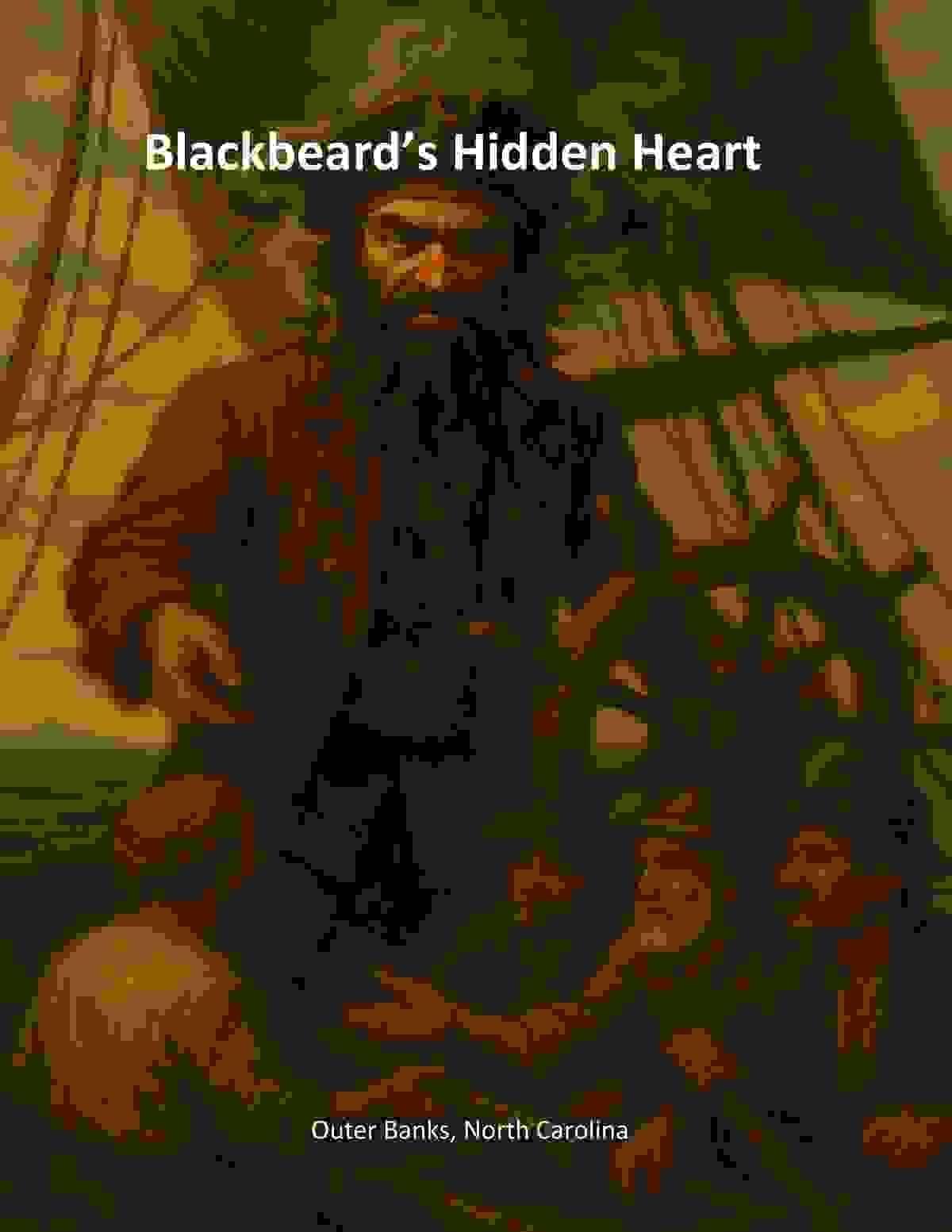
Blackbeard’s Hidden Heart tells the story of Edward Teach—better known as Blackbeard—not as a ruthless pirate, but as a man guided by mercy and fairness. Set along the North Carolina coast, the story recounts moments when Blackbeard spared sailors who surrendered, shared supplies with hungry families, and helped locals on Ocracoke Island after storms. Even during the blockade of Charleston, he sought medicine rather than gold and released prisoners unharmed. Remembered by the Outer Banks community as a “gentleman pirate,” Blackbeard’s true treasure was his kindness and honor—proof that compassion can live even in the most unexpected place.

The “Estuaries of the Outer Banks: Where Rivers Meet the Sea” children’s book introduces young readers to the magic ofestuaries—where freshwater rivers meet the salty sea to create brackish water
teeming with life. It explains how estuaries like Pamlico, Albemarle, and Currituck Sounds serve as nurseries for fish, crabs, oysters, and birds, while also protecting people by filtering pollution, absorbing storm waves, and storing carbon. The book highlights threats such as pollution, development, and
rising seas, but inspires action through simple steps kids can take—like picking up litter, planting native grasses, and saving energy. Filled with fun facts and vivid local examples, it encourages stewardship and curiosity about the Outer Banks’ vibrant coastal ecosystems.
Sea Queens of the Outer Banks is a children’s storybook to inspire environmental stewardship and kindness through the legend of two brave girls, Anne and Mary, who grow up to become compassionate pirate queens. Set along North Carolina’s Outer Banks, the tale follows their journey from dreaming of the sea on Shell Island to learning navigation, sailing the Pamlico Sound, and protecting others during fierce storms. Known as “The Good-Hearted Ghost of the Banks,” they rescue fishermen, share their catch with the needy, and teach that courage and compassion are the greatest treasures. Blending folklore with history, the story highlights real-life female pirates Anne Bonny and Mary Read, connecting their courage to the legacy of women who lived and worked along the Carolina coast. It concludes with the message that anyone can be a “pirate queen” by leading with bravery, cleverness, and kindness.

“A New Tide of Friends: A Story of Hope and Welcome on the Outer Banks” tells the story of Lila, her brother Kai, and their mother, who meet a refugee family newly arrived in Avon, North Carolina. The family — Amina, her brother Samir, and their parents — fled war and hardship to find peace by the sea. The Outer Banks Coastal Conservation Center comes together to welcome them, providing housing, supplies, and friendship. Through shared acts of kindness, such as beach cleanups, school projects, and a Lantern Festival celebrating peace, both newcomers and locals learn the power of compassion and inclusion. The story ends with Lila and Amina walking home together, reflecting that “the sea connects us, and kindness keeps us safe,” reminding readers that there is always room for new friends and hope.

The Secret Garden of Pollinators tells the story of Bree the Bee and her discovery that pollination is a shared effort among many creatures on North Carolina’s barrier islands. Through lively encounters with beetles, flies, wasps, ants, moths, and even bats, Bree learns that every species—day and night—plays a vital role in keeping the coastal ecosystem thriving. When pesticides threaten the garden, two children, Maya and Finn, step in to restore it with native plants and care, reminding readers that human choices matter in protecting pollinators. The story concludes with a message of unity and stewardship: when all pollinators are valued, nature flourishes in harmony.
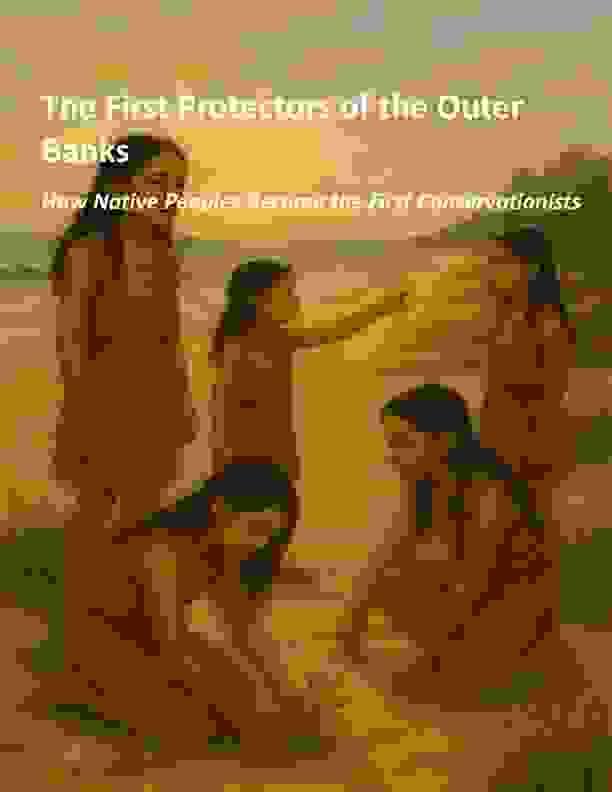
Native peoples of the Outer Banks — including the Croatoan, Secotan, Weapemeoc, and Chowanoke — were the region’s first conservationists, teaching their children to live with the dynamic islands rather than fight them. They practiced sustainable fishing, protected marshes, honored water sources, and planted cooperative crops like the Three Sisters. They used controlled fire to renew forests, built lightweight homes that worked with storms, and treated the land as part of their family — with the ocean as a grandmother and wildlife as relatives. Their deep respect for nature offers modern lessons: let dunes grow, keep waters clean, protect marshes and turtles, and care for the shifting islands with gentle, informed stewardship.

The Indigenous peoples of the Outer Banks—Algonquian-speaking nations such as the Croatoan, Secotan, Weapemeoc, and Chowanoke—were the region’s first conservationists, living in balance with fragile barrier-island ecosystems for thousands of years through sophisticated ecological knowledge and sustainable practices. They harvested fish, shellfish, game, and plants responsibly; cultivated resilient agriculture like the Three Sisters system; protected water quality; used controlled fires to maintain healthy forests; and built lightweight, movable homes that respected coastal dynamics. Guided by values of reciprocity, kinship, and responsibility, their worldview treated land, water, and wildlife as relatives rather than resources. Today, their principles—letting islands move, protecting dunes and marshes, harvesting sustainably, and respecting natural rhythms—offer essential lessons for addressing modern coastal challenges such as storms, sea-level rise, and habitat loss.

The Dunehopper Ghost Crab Family spends a joyful day exploring the Kitty Hawk Outlets, scurrying along a tiny crab-sized path to visit colorful shops, imagining giant flip-flops as surfboards, discovering a coin purse perfect for seashell treasures, and politely sampling a shared vanilla ice cream cone before heading home at sunset. Filled with sandy claws, big smiles, and tiny new treasures—including a keychain umbrella for baby Shellby—they end their adventure happy and dreaming of their next outing, maybe even donuts in Duck.
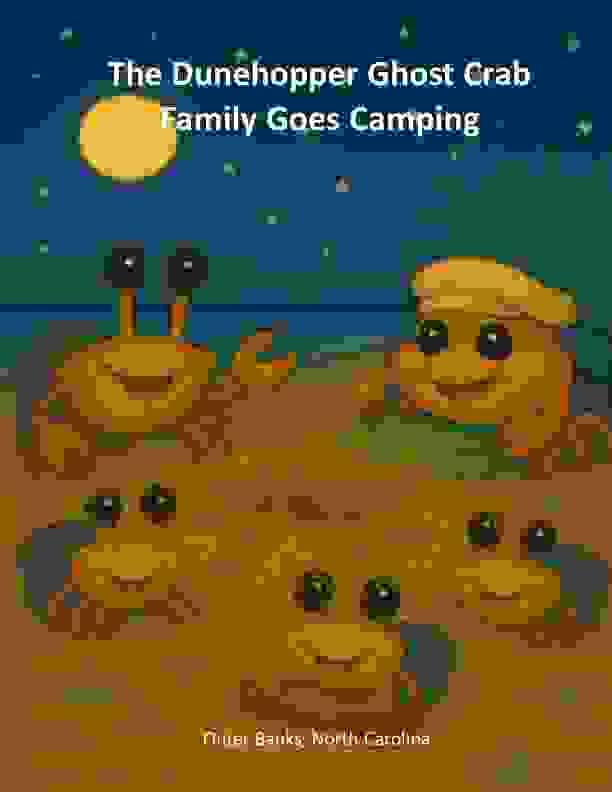
The story follows the Dunehopper Ghost Crab Family as they set out on a magical nighttime camping adventure along the Outer Banks, beginning with an excited departure from their burrow and a sideways hike across moonlit dunes to find the perfect campsite. Together they prepare their cozy “tent,” enjoy a glowing plankton “campfire,” share stories under the stars, and join a shimmering midnight parade of fellow ghost crabs. As dawn approaches, the family snuggles into their seaweed blanket, wrapped in warmth, love, and the simple joy of being together, ending their night in peaceful driftwood dreams.
For Adults and Educators:
This educational pamphlet explains how protecting inland rivers directly impacts the health of the Outer Banks’ beaches, wildlife, and ecosystems. It emphasizes what happens hundreds of miles inland—such as littering or chemical runoff—eventually affects the coastal environment.

This educational pamphlet encourages residents and visitors to care for the fragile ecosystems of the Outer Banks, North Carolina. It highlights the importance of conservation through awareness, simple actions,
and community involvement.
Artificial light along the Outer Banks disrupts wildlife and dims natural bioluminescence. Turning off bright lights, using amber bulbs, and supporting “Lights Out for Wildlife” help sea turtles, birds, and plankton thrive—and let nature shine again.
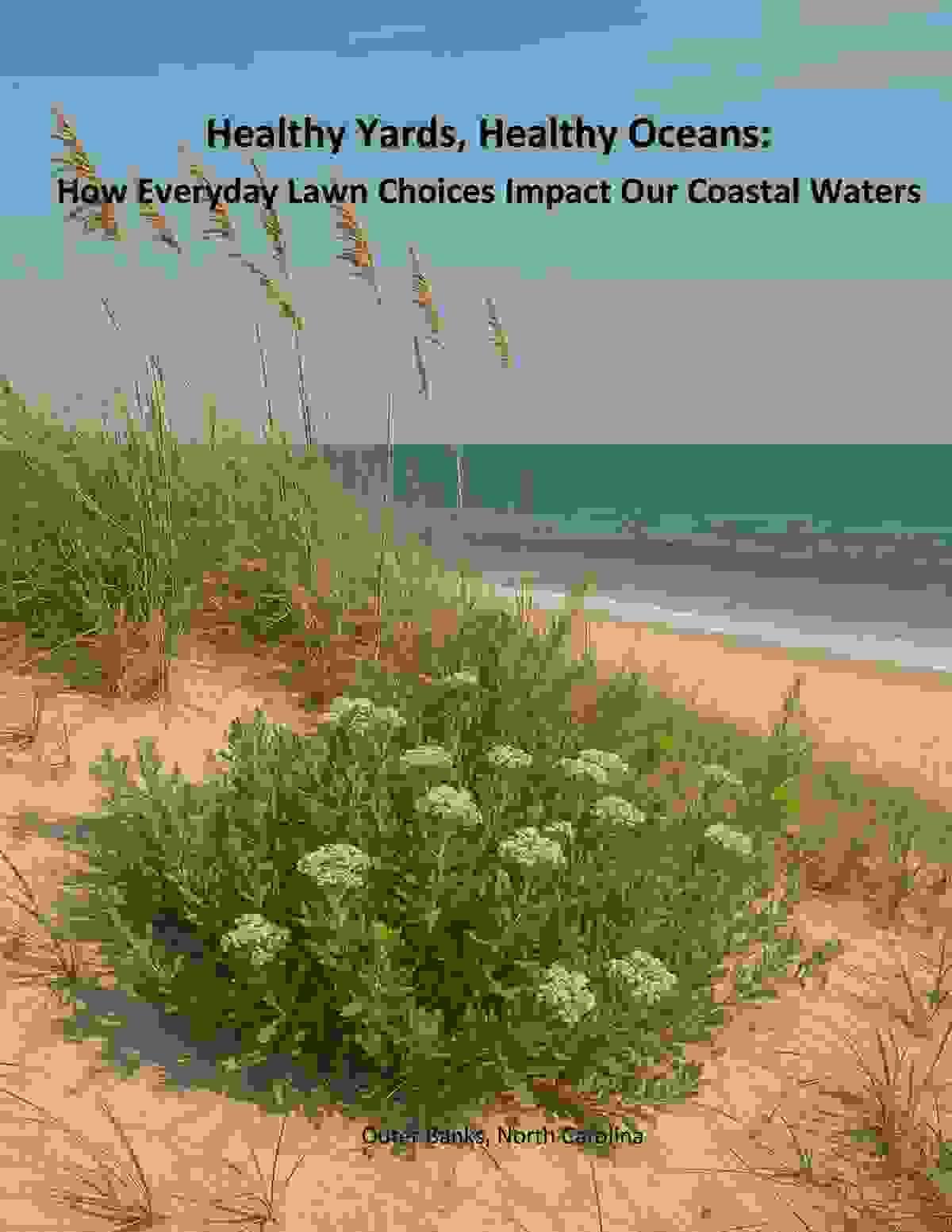
Every drop of rain that falls on our lawns ends up in the sea. Fertilizers and pesticides wash into canals and sounds, causing algae blooms, fish kills, and loss of seagrass. Choose native plants, compost instead of chemicals, and pull weeds byhand. Leave plant buffers near the water and use rain gardens or barrels to slow runoff. Together, we can keep the Outer Banks clean, healthy, and thriving.
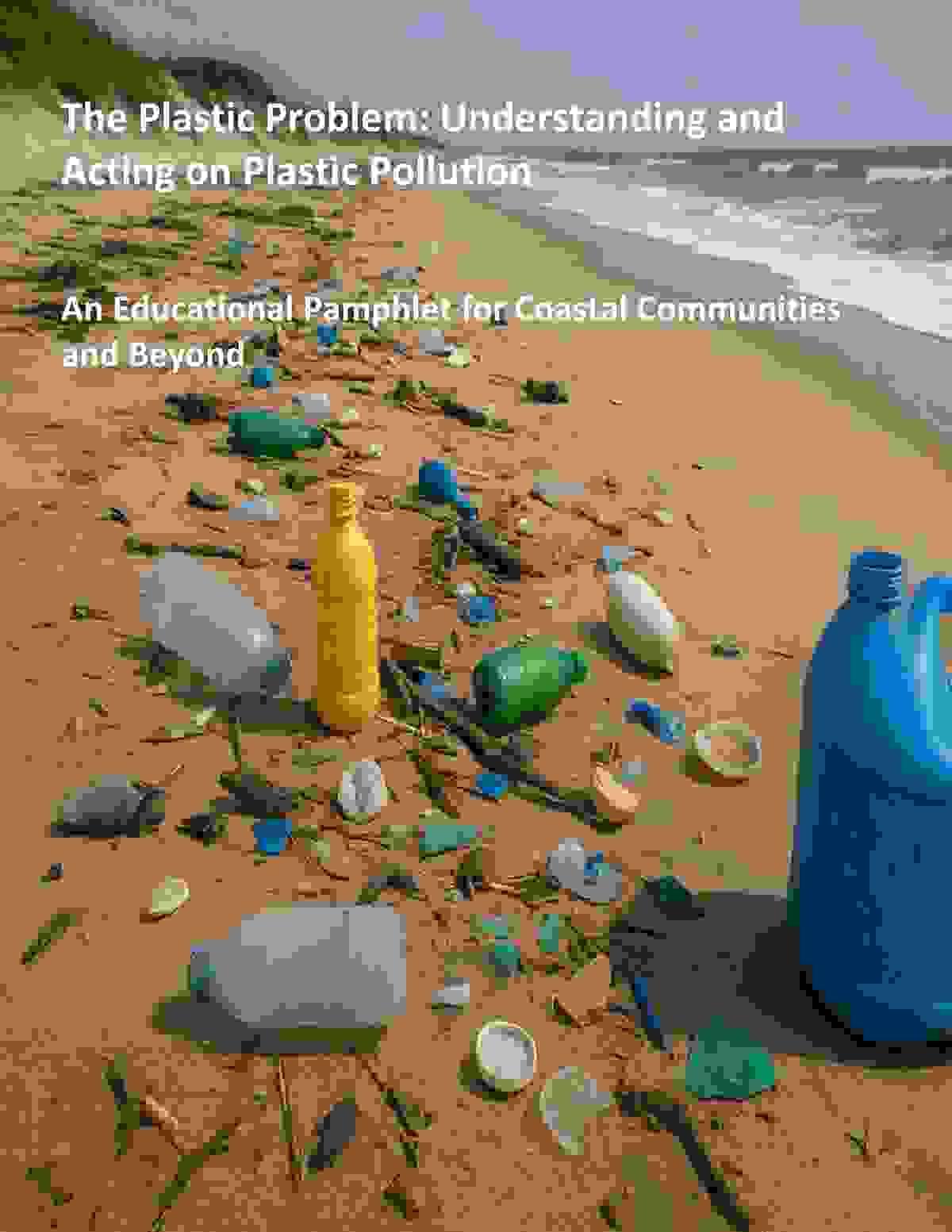
This educational pamphlet explains how plastic pollution affects oceans, wildlife, and human health—while offering practical solutions for individuals and communities.

This guide educates the public about the environmental, health, and animal welfare impacts of fireworks — and to promote safer, eco-friendly celebrations.
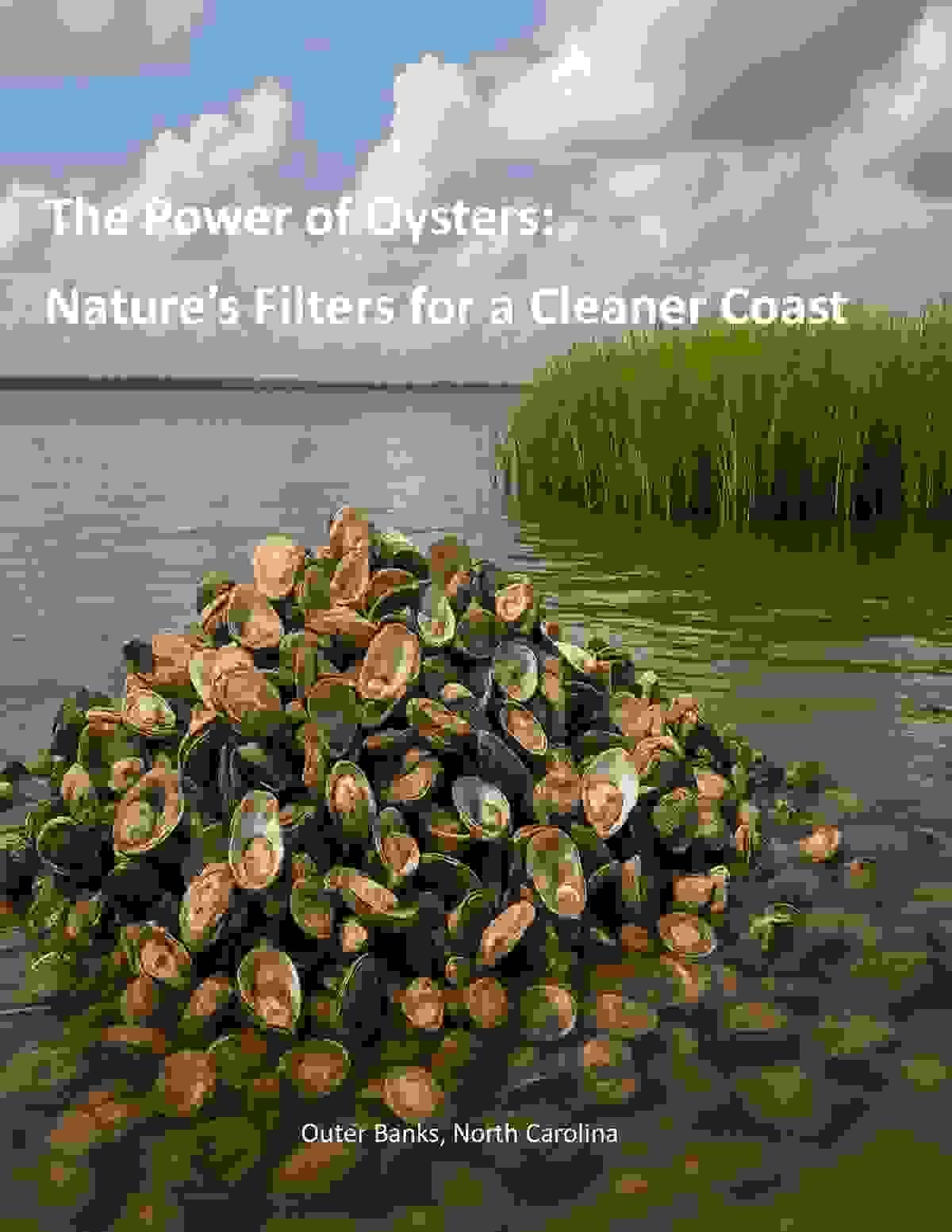
This educational pamphlet highlights the vital role of oysters in maintaining the health and clarity of coastal waters around the Outer Banks, NC. It explains how pollution, sedimentation, and habitat loss have led to declining oyster populations — and what individuals and communities can do to restore them.

This guide promotes safe driving practices to protect local wildlife along North Carolina’s Outer Banks. It serves as an educational resource for residents, visitors, and teachers, emphasizing that careful driving helps preserve the area’s biodiversity.
Key Messages:
Drive slow, stay alert, protect wildlife.
Roads cut through sensitive habitats — slowing down prevents collisions with animals crossing between wetlands, dunes, and forests.Wildlife at risk: Deer, racoons, turtles and other wildlife frequently cross roads like NC-12, often at dawn, dusk, or night.
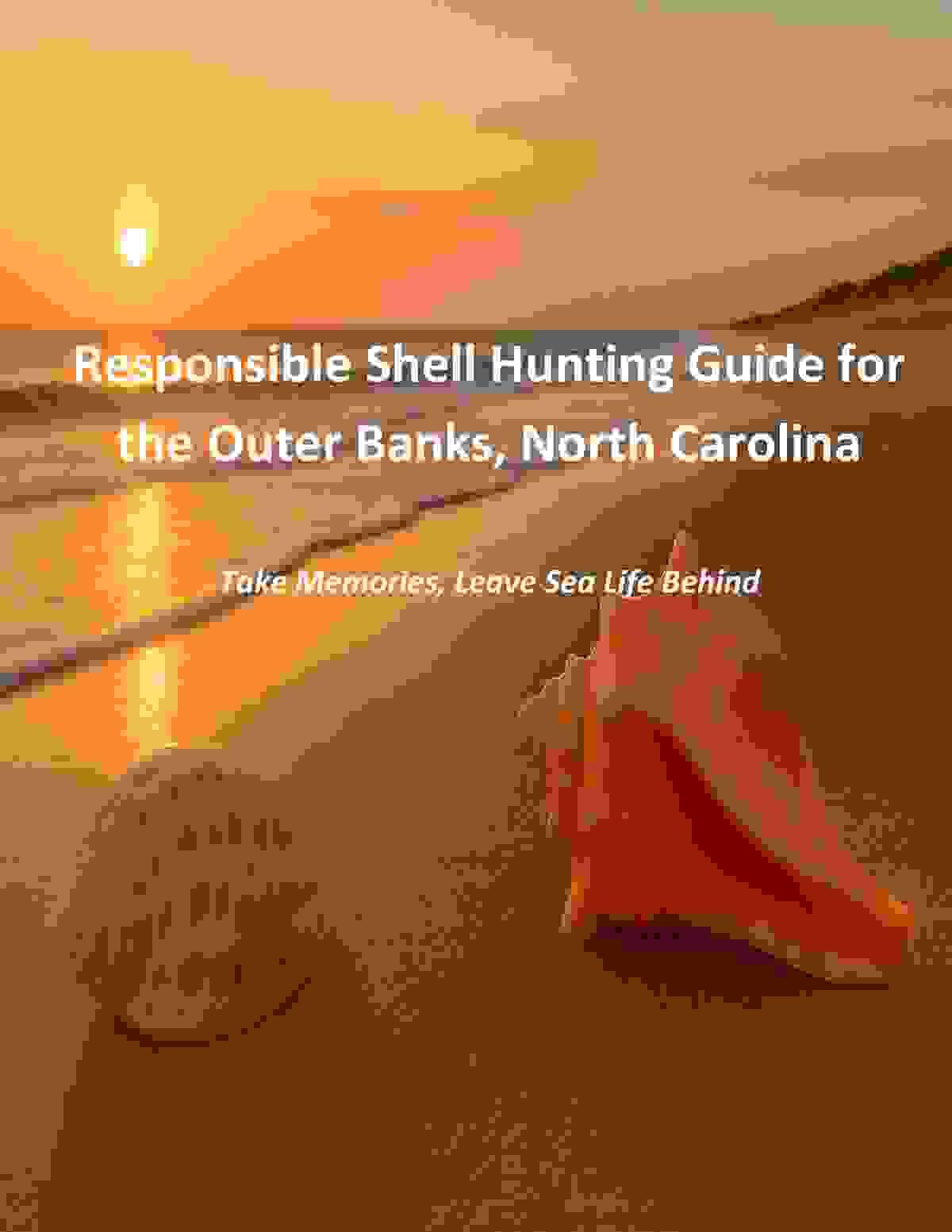
This guide promotes responsible shell collecting on North Carolina’s Outer Banks. It emphasizes environmental stewardship, respect for marine life, and community participation in coastal conservation.

This educational pamphlet introduces readers to the Common Loon (Gavia immer)—a striking migratory bird that winters along the Outer Banks of North Carolina. It promotes awareness, respectful observation, and environmental stewardship.

This educational guide teaches residents and visitors how to maintain clean, safe bird feeders in the unique coastal environment of North Carolina’s Outer Banks.
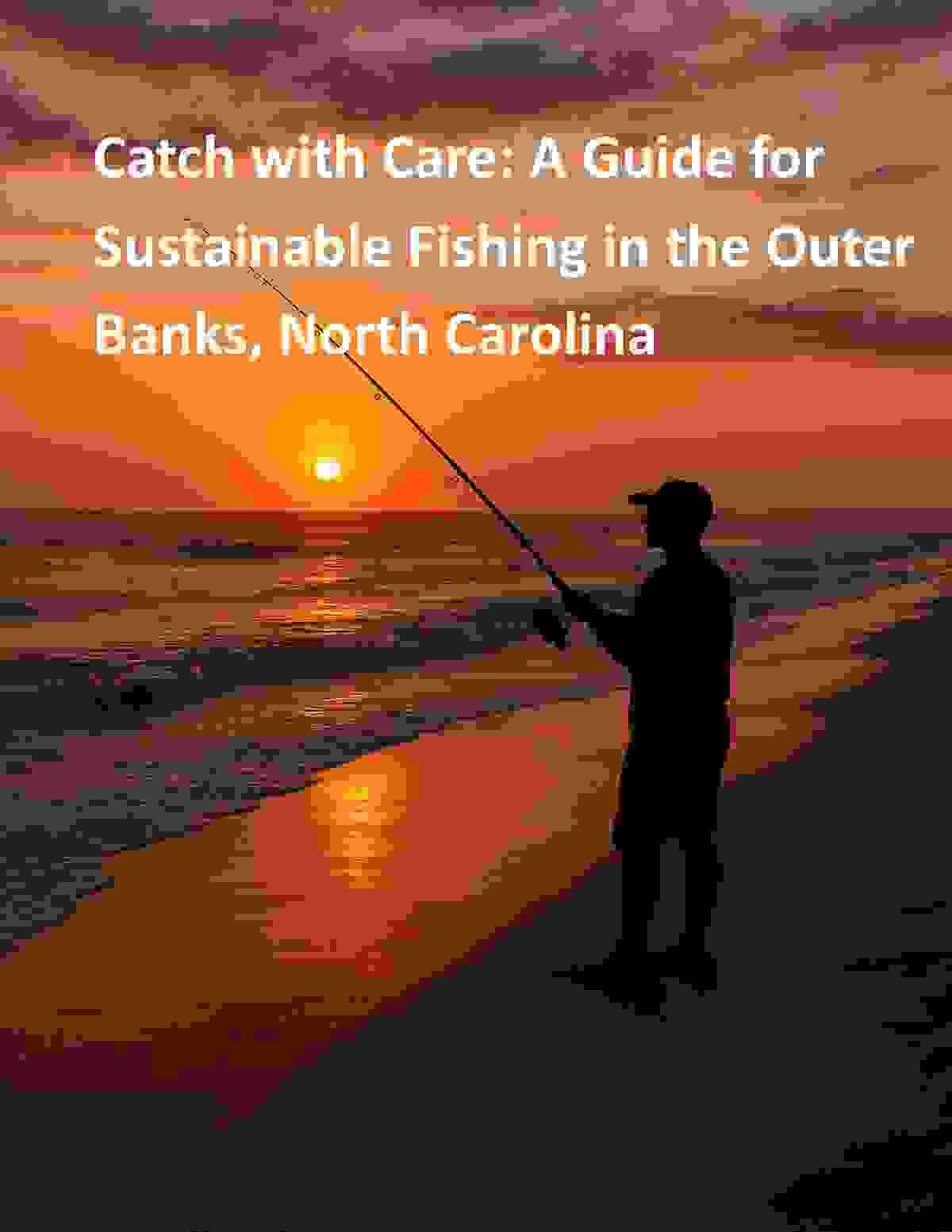
This pamphlet promotes ethical and sustainable fishing practices to protect the ecosystems of the Outer Banks, NC. It aims to educate anglers, residents, and visitors on low-impact fishing techniques that support wildlife, water quality, and future fisheries.
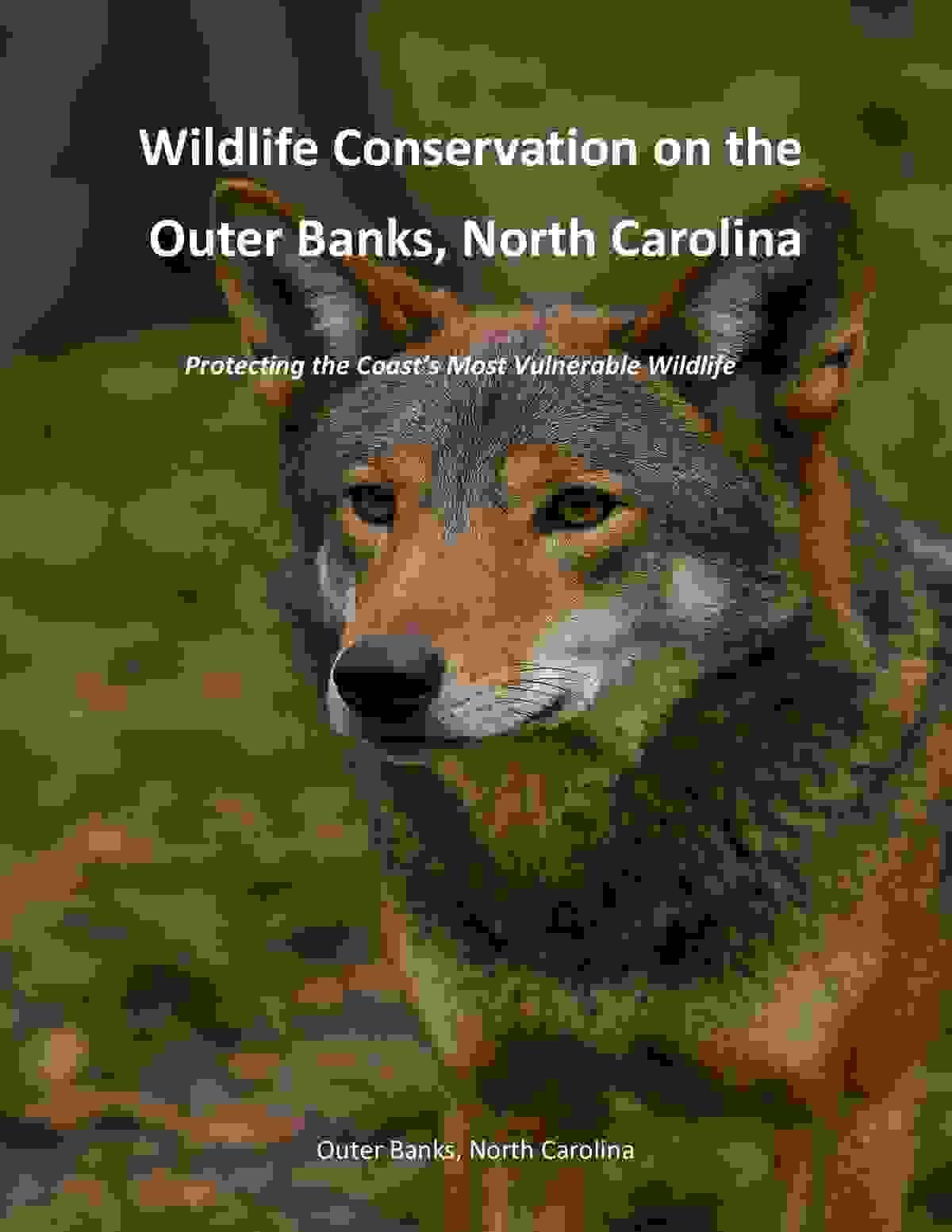
This educational pamphlet promotes environmental stewardship across North Carolina’s Outer Banks. It explains the fragile ecology of these barrier islands and highlights key endangered and threatened species, why they matter, and how residents and visitors can help protect them.
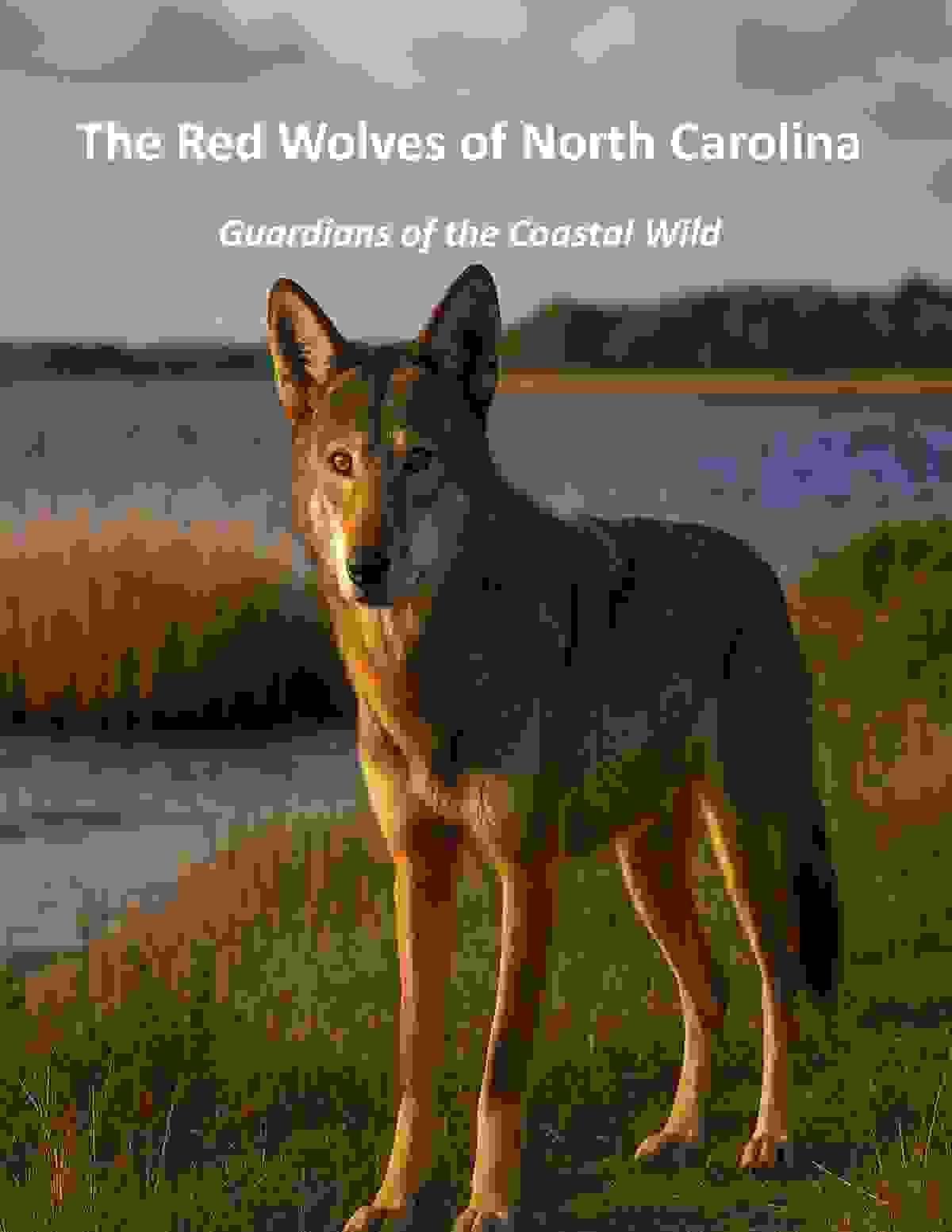
This pamphlet serves as an educational resource to inspire awareness and protection of one of America’s most endangered species — the red wolf (Canis rufus).
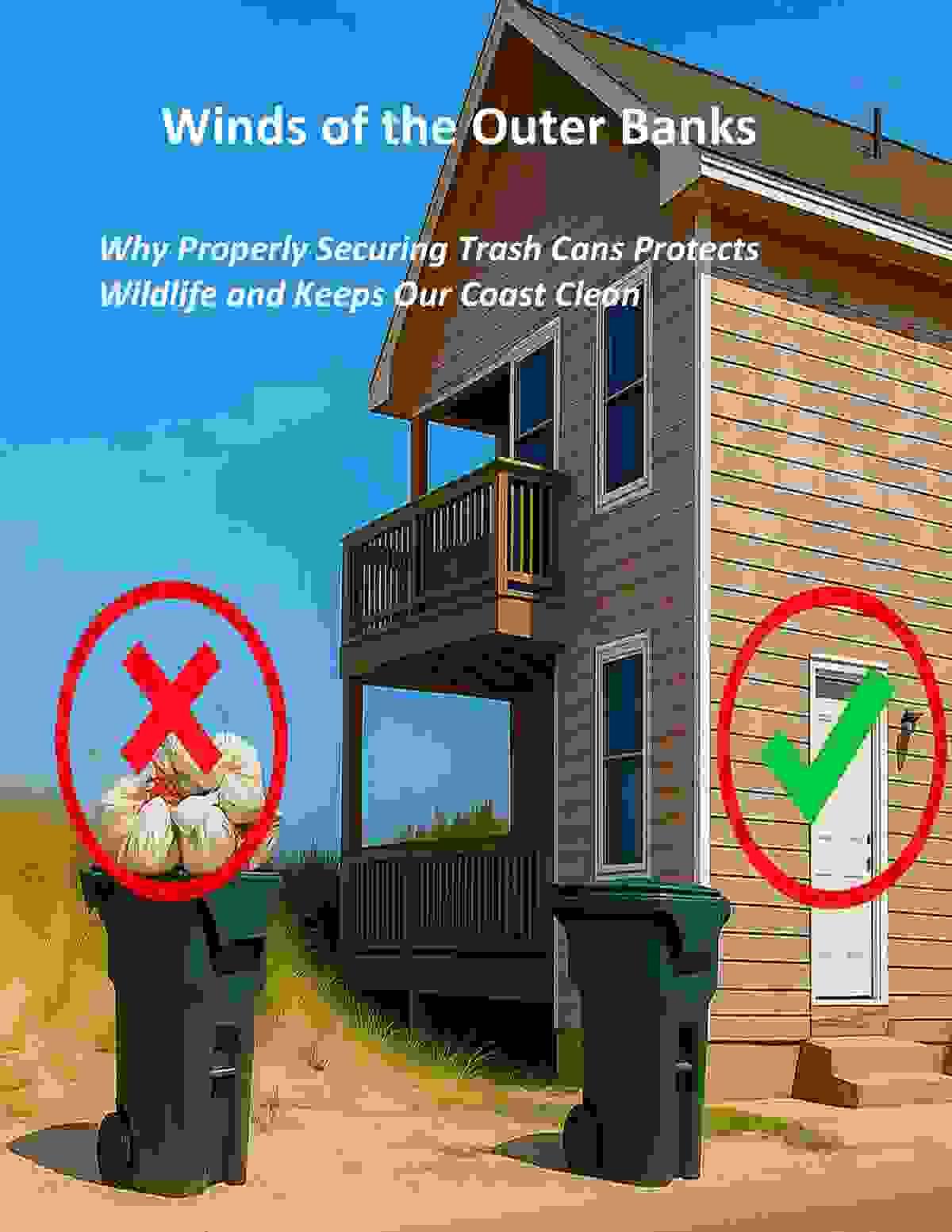
This educational pamphlet emphasizes how the region’s persistent winds — from sea breezes to nor’easters and hurricanes — can easily scatter unsecured trash, creating serious environmental and community problems.
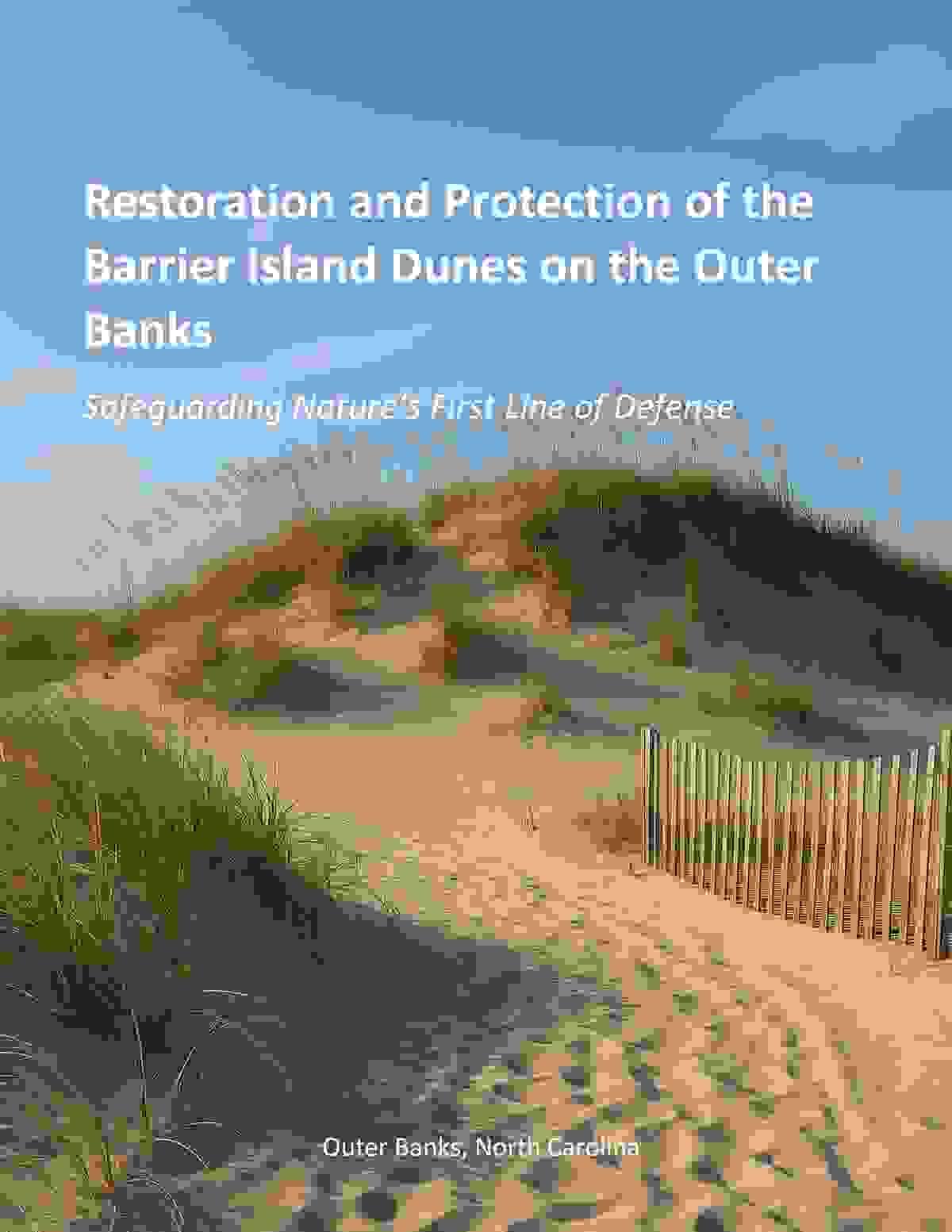
Restoration and Protection of the Barrier Island Dunes on the Outer Banks, explains how dunes—vital natural defenses formed by wind, waves, and vegetation—protect the coast from storms, erosion, and flooding while providing habitat for wildlife. It describes both naturally formed dunes and those reinforced by the Civilian Conservation Corps (CCC) in the 1930s–40s, emphasizing the threats they face from human activity, invasive species, and climate change. The guide outlines practical restoration strategies such as planting native dune grasses, installing sand fencing, limiting foot traffic, preserving natural debris, and rebuilding dunes after storms. It encourages residents and visitors to support conservation through responsible access, native landscaping, and community involvement, reminding readers that healthy dunes safeguard homes, roads, and ecosystems while maintaining the beauty and resilience of North Carolina’s Outer Banks.
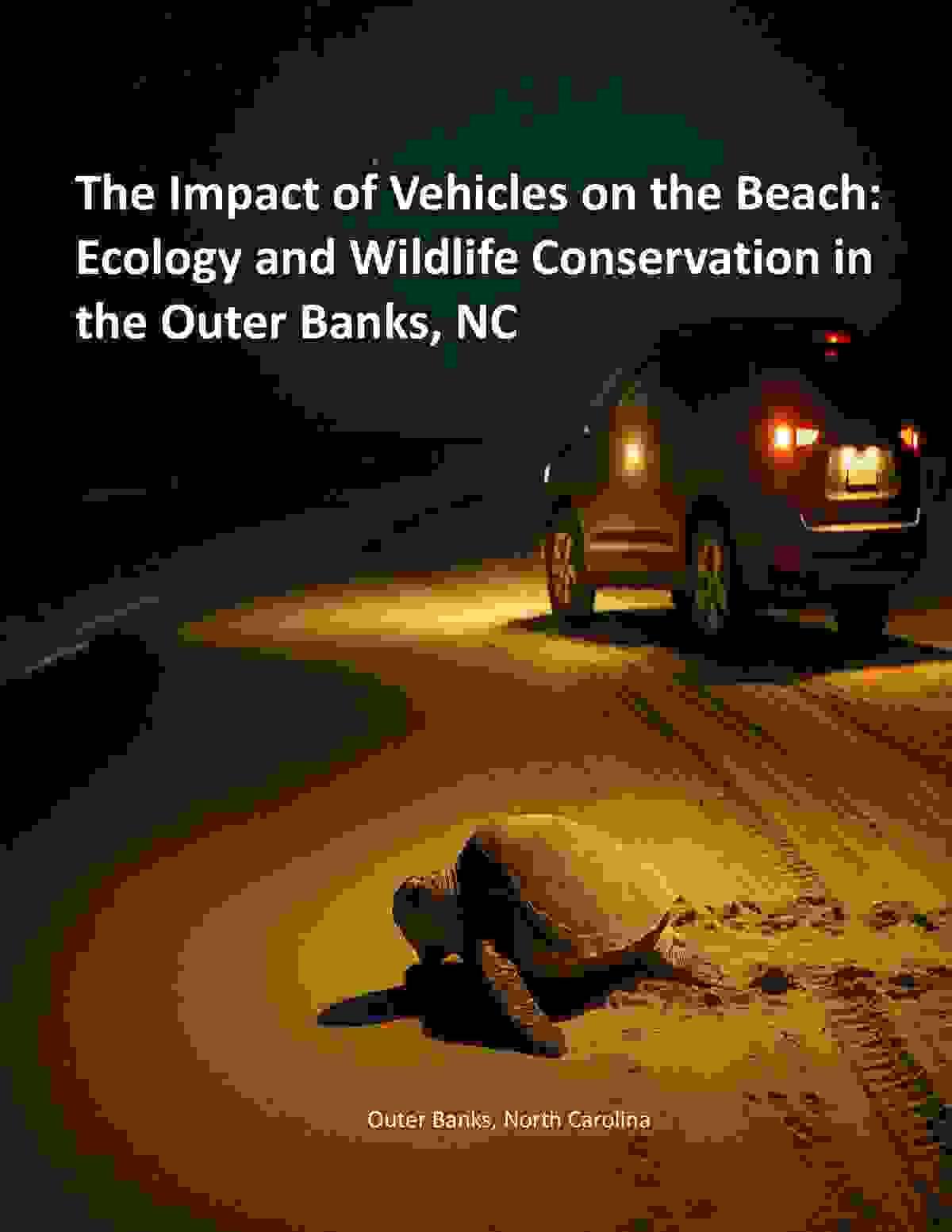
Beach driving is a long-standing Outer Banks tradition, but it poses serious threats to fragile coastal ecosystems and wildlife. Vehicle traffic compacts sand, destroys dune vegetation, and accelerates erosion, while headlights, tire ruts, and noise endanger sea turtles, shorebirds, and small invertebrates essential to the beach food web. Damaged dunes reduce natural storm protection and harm both habitats and tourism. To balance recreation with conservation, drivers should stay on designated routes, avoid dunes and nesting areas, limit speed, and avoid night driving. Local organizations like the National Park Service, NEST, Audubon North Carolina, and the North Carolina Coastal Federation work to protect wildlife and restore dunes, reminding everyone that responsible driving and community stewardship can help preserve the Outer Banks’ beauty for generations to come.

This guide explains that offshore drilling poses major environmental, economic, and logistical risks to the fragile barrier islands of North Carolina. These islands, surrounded by vital habitats like Pea Island and Cape Hatteras, are highly vulnerable to oil contamination due to strong currents and storms. Potential harms include large spills and chronic pollution affecting marine life, fisheries, and birds, while seismic noise disrupts whales and fish. Economically, a single spill could devastate the region’s $2.7 billion tourism industry and local fisheries, and frequent storms would complicate cleanup. Although no Atlantic lease sales are planned under the 2024–2029 federal program, future policies could change. The Outer Banks Coastal Conservation urges communities to engage in public comment processes, plan for emergencies, and advocate for renewable energy alternatives to safeguard the Outer Banks’ wildlife, economy, and way of life.

This storybook Shipwrecks and Conservation: How History Shapes the North Carolina Coast explores how over 2,000 shipwrecks off the Outer Banks form a living link between history and nature. Once symbols of tragedy, these wrecks now serve as cultural artifacts, ecological reefs, and educational resources. The book highlights how storms and erosion reveal and reshape wrecks, while conservationists, archaeologists, and volunteers strive to protect them through research, sanctuaries, and public education. It emphasizes that shipwrecks harbor thriving marine ecosystems, face threats from looting, pollution, and climate change, and require responsible stewardship.
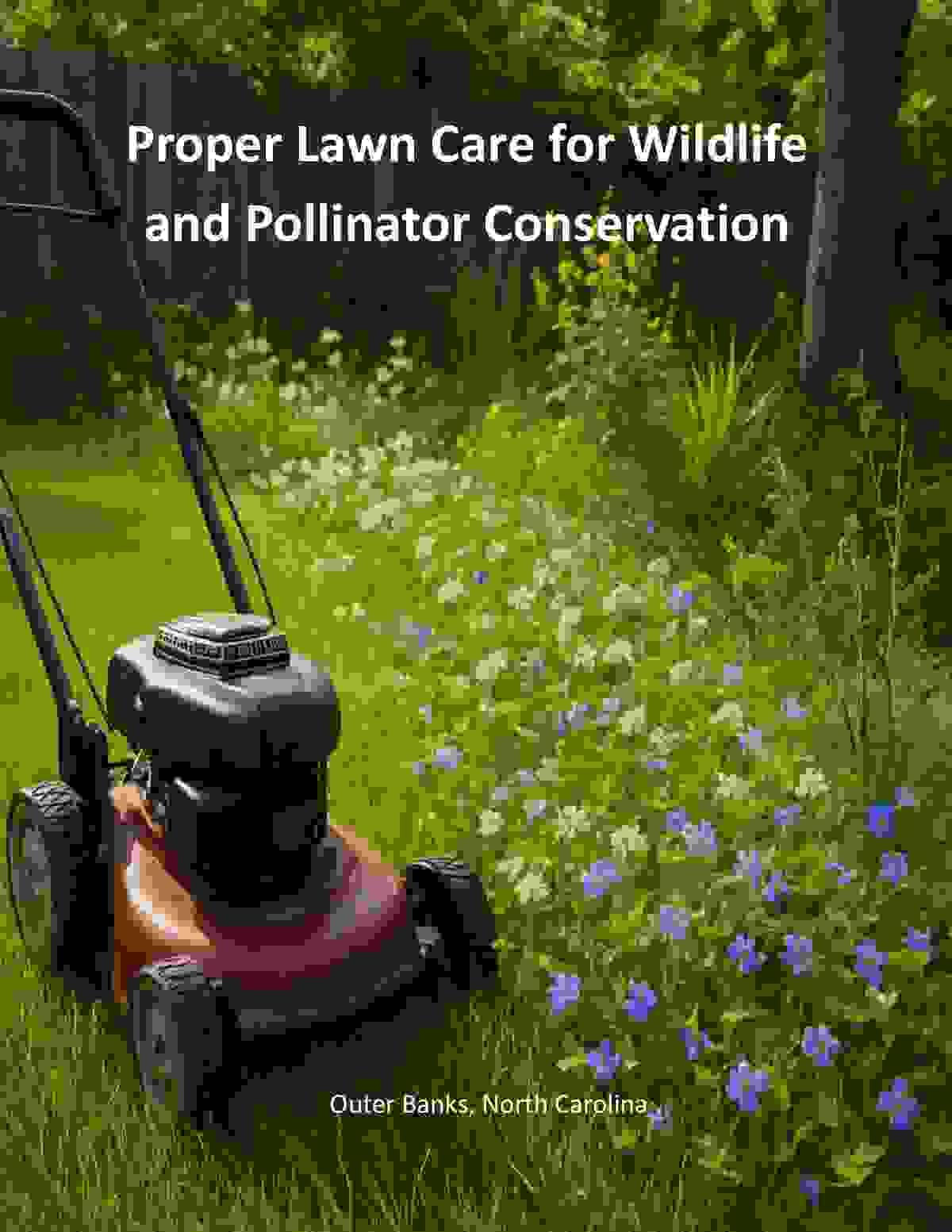
The guide “Proper Lawn Care for Wildlife and Pollinator Conservation” explains how homeowners can transform conventional lawns into thriving habitats that support biodiversity. It emphasizes reducing mowing frequency, avoiding chemical fertilizers and pesticides, and planting native species like seaside goldenrod, wax myrtle, and little bluestem suited to coastal North Carolina. The pamphlet encourages natural soil enrichment through compost and mulch, water conservation, and creating wildlife features such as bee hotels and birdbaths. It also highlights limiting light and noise pollution, practicing seasonal care, and engaging neighbors in pollinator-friendly practices. Ultimately, it connects backyard stewardship to broader ecosystem health—showing how small individual actions contribute to protecting dunes, marshes, and forests across the Outer Banks.
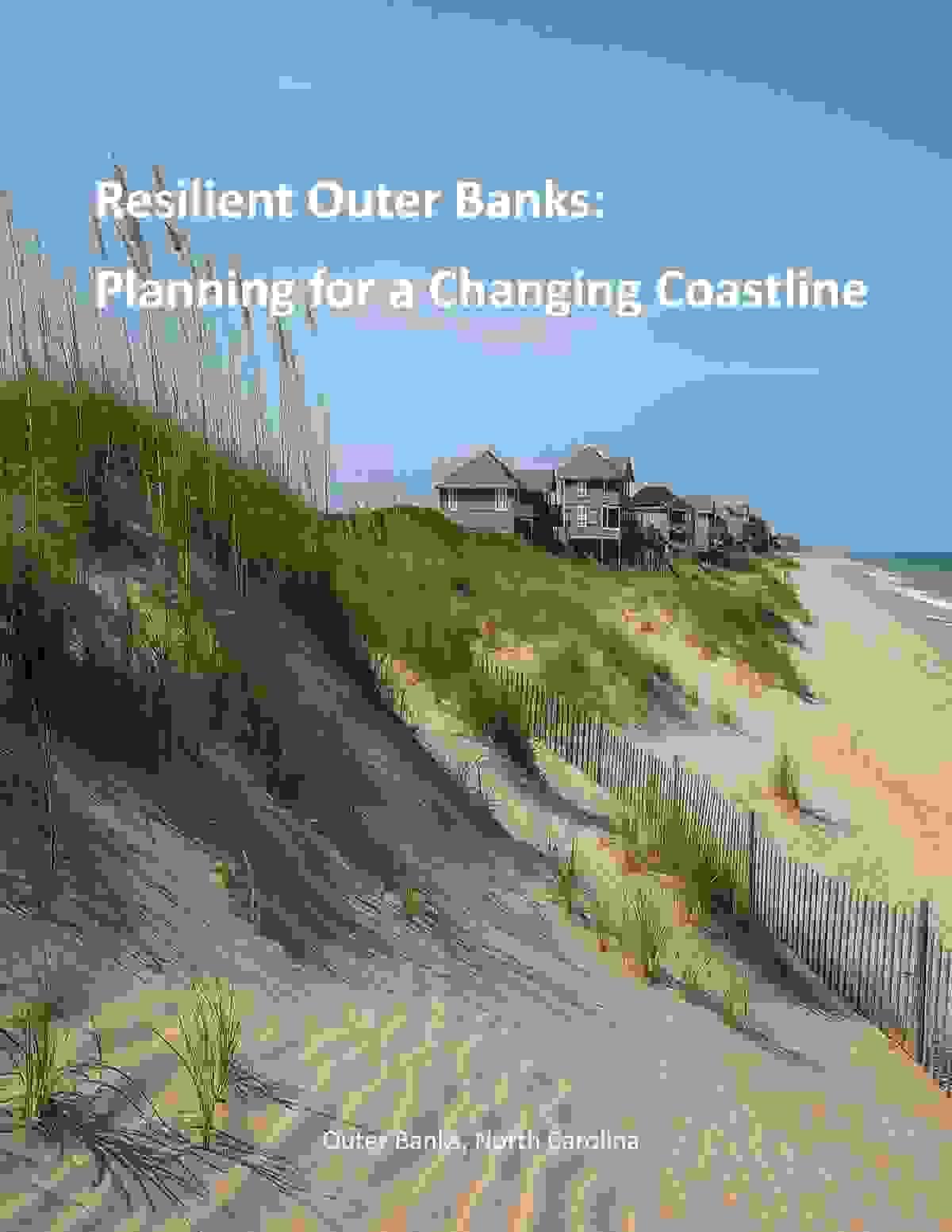
Planning for a Changing Coastline highlights how North Carolina’s barrier islands are dynamic, living landforms constantly reshaped by wind, waves, and storms. The guide explains that true resilience lies in coexisting with natural change rather than resisting it. It describes the science behind erosion, sea-level rise, and overwash processes, emphasizing that hard structures often worsen coastal erosion. Instead, the guide promotes nature-based solutions such as dune restoration, living shorelines, oyster reef building, and wetland preservation to stabilize land and support marine ecosystems. Community-based approaches—like the Resilient Coastal Communities Program, adaptive land-use planning, elevating structures, and managed retreat—are vital to reducing risks. The pamphlet calls for collaboration among residents, nonprofits, and government agencies to integrate ecological knowledge with policy tools like conservation and rolling easements. Ultimately, it portrays resilience as a mindset of flexibility and stewardship, ensuring the Outer Banks remain both habitable and ecologically vibrant for generations.

The Beach Bonfires and Wildlife: What You Need to Know guide explains how to enjoy traditional beach bonfires responsibly while protecting the fragile Outer Banks ecosystem. It outlines local regulations across towns and parks, emphasizing the need for permits, small fires below the high-tide line, and clean, untreated wood. The guide details how bonfire light, heat, and debris can harm sea turtles, shorebirds, dune vegetation, and nocturnal species like ghost crabs. It promotes “Leave No Trace” practices—fully extinguishing fires, removing all waste, and avoiding bright lights or loud sounds—to minimize ecological disturbance. Readers are urged to respect dune habitats, keep pets leashed, report injured wildlife, and appreciate the Outer Banks’ unique biodiversity by ensuring their fires “warm people, not harm wildlife.”

The guide “When the Coast Falls Silent: Understanding Sudden Wildlife Die-Offs” explains that sudden die-offs, or mass mortality events, occur when large numbers of marine or coastal animals die over a short time—often signaling deeper ecological stress. These events can stem from single or combined factors including harmful algal blooms, low oxygen (hypoxia), disease outbreaks, chemical pollution, temperature extremes, salinity shifts, and human disturbances like sonar. Each cause is detailed with local Outer Banks examples, such as algal blooms in Pamlico Sound or cold-stunned sea turtles near Cape Hatteras. The guide stresses prompt reporting to agencies such as NOAA, NEST, and the NC Wildlife Helpline to aid scientific monitoring and response. It closes by urging preventive actions—reducing fertilizer runoff, restoring wetlands, limiting noise and light pollution, and practicing responsible coastal stewardship—to help protect the region’s fragile ecosystems.
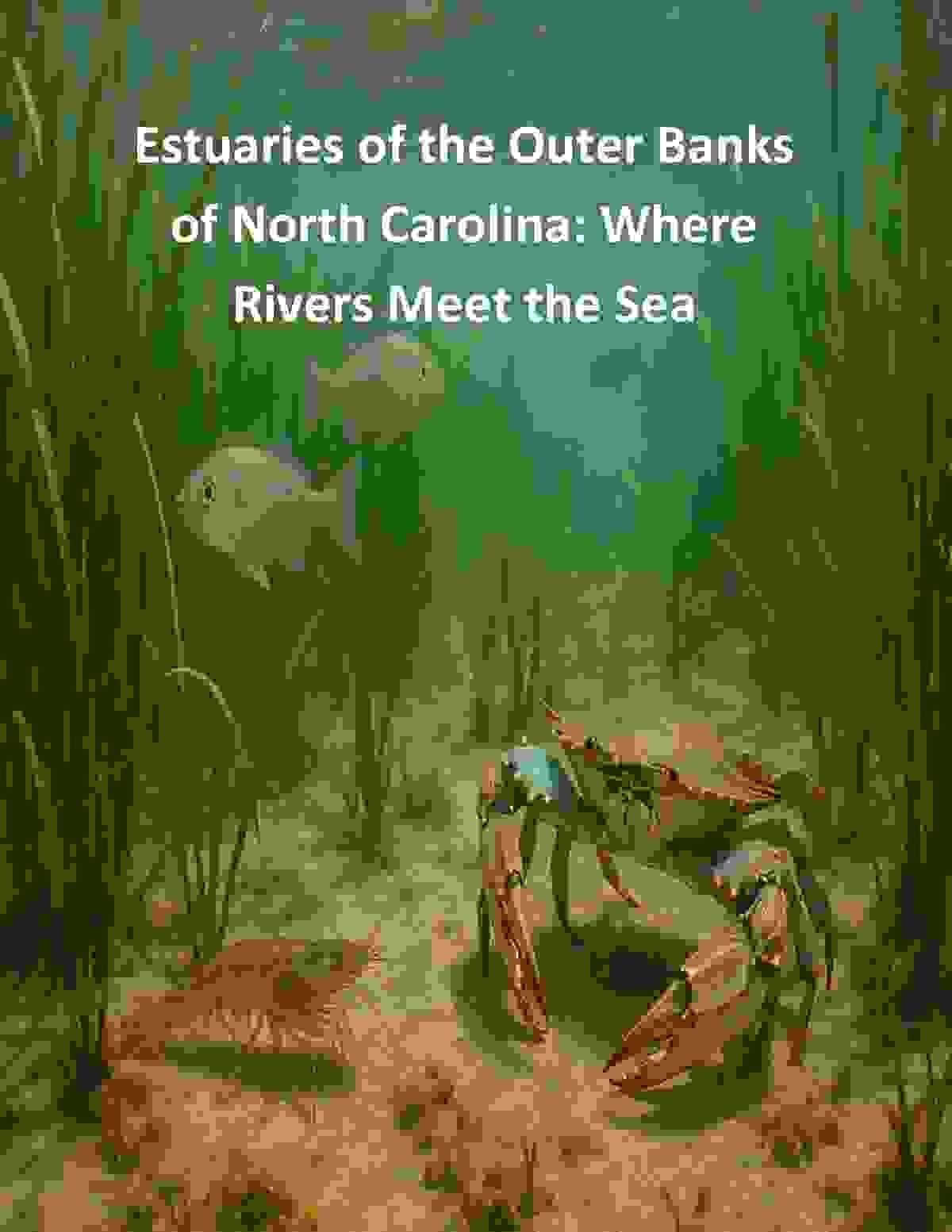
This guide explores the estuaries of the Outer Banks, where freshwater rivers meet the Atlantic’s saltwater to create one of North Carolina’s most vital and dynamic ecosystems. These interconnected lagoons, sounds, and marshes — including Currituck, Albemarle, Pamlico, and Core Sounds — serve as natural filters, storm buffers, and nurseries for countless fish, shellfish, and bird species, sustaining both biodiversity and coastal livelihoods. Over thousands of years, shifting sands and rising seas shaped these habitats, which now face growing threats from pollution, erosion, sea-level rise, and climate change. Through conservation practices such as living shorelines, oyster reef restoration, and community science, this guide highlights how individuals and organizations can help protect these waters. Rooted in centuries of Indigenous and coastal heritage, the Outer Banks’ estuaries remain living classrooms — vital to both the environment and the culture of North Carolina’s coast.

The pamphlet “Guardians of the Coast: The Maritime Forests of the Outer Banks” highlights the ecological, cultural, and climate importance of maritime forests — salt-tolerant woodlands that form the “green backbone” of North Carolina’s barrier islands. These forests stabilize dunes, reduce erosion, filter runoff, and serve as vital wildlife habitats and carbon sinks. Notable examples include Nags Head Woods, Buxton Woods, and Currituck Banks. Despite their resilience, they face growing threats from coastal development, sea-level rise, invasive species, and climate change. Conservation efforts led by groups like The Nature Conservancy and the National Park Service focus on restoration, replanting, and public engagement. The guide emphasizes that preserving these forests safeguards biodiversity, protects coastal communities, and maintains the natural and cultural heritage of the Outer Banks.

This guide, “Ocean Currents and Sand Movement Around the Outer Banks,” explains how wind, waves, and tides continually reshape North Carolina’s barrier islands. The Gulf Stream and Labrador Current meet off Cape Hatteras, fueling rich marine ecosystems but also creating dangerous shoals like Diamond Shoals. Longshore currents transport sand along the coast, causing both erosion and accretion, while storms and hurricanes periodically carve new inlets and push sand landward—vital processes that enable island migration. Human interventions such as beach nourishment, jetties, and coastal development disrupt this natural balance, increasing vulnerability. Sustainable approaches—like dune restoration, living shorelines, managed retreat, and monitoring programs—offer ways to coexist with this dynamic landscape. The guide concludes that resilience depends on letting the islands move naturally, preserving both ecological health and cultural heritage.

Gardening for the Outer Banks, North Carolina Coast is a guide that helps homeowners and educators design resilient, wildlife-friendly landscapes adapted to the region’s unique barrier island environment. It explains how native plants—such as sea oats, yaupon holly, wax myrtle, and muhly grass—stabilize dunes, reduce erosion, filter runoff, and support pollinators while requiring minimal maintenance. The guide outlines layered landscape strategies from dune to inland zones, recommends rain garden species for flood-prone areas, and warns against invasive plants like pampas grass and Japanese honeysuckle. Emphasizing seasonal care, water conservation, and community stewardship, it frames gardening as a form of ecological restoration—creating “living landscapes” that mirror the natural rhythms and resilience of the Outer Banks ecosystem.

The guide explains how climate change and rising seas are rapidly reshaping the Outer Banks, one of the most vulnerable coastal regions in the United States. It outlines why sea levels are rising faster in North Carolina—due to warming oceans, melting ice, land subsidence, and changes in the Gulf Stream—and details the resulting impacts such as beach and dune erosion, new inlet formation, groundwater rise, marsh loss, and threats to wildlife, homes, infrastructure, tourism, and fisheries. The document also highlights current adaptation efforts including beach nourishment, new bridges, living shorelines, and home relocation, and offers strategies for communities and individuals to support resilience through marsh protection, soft engineering, groundwater management, and future-focused planning. Ultimately, the guide emphasizes that while the Outer Banks will continue to change, informed action rooted in science and natural coastal processes can help the region adapt and thrive.
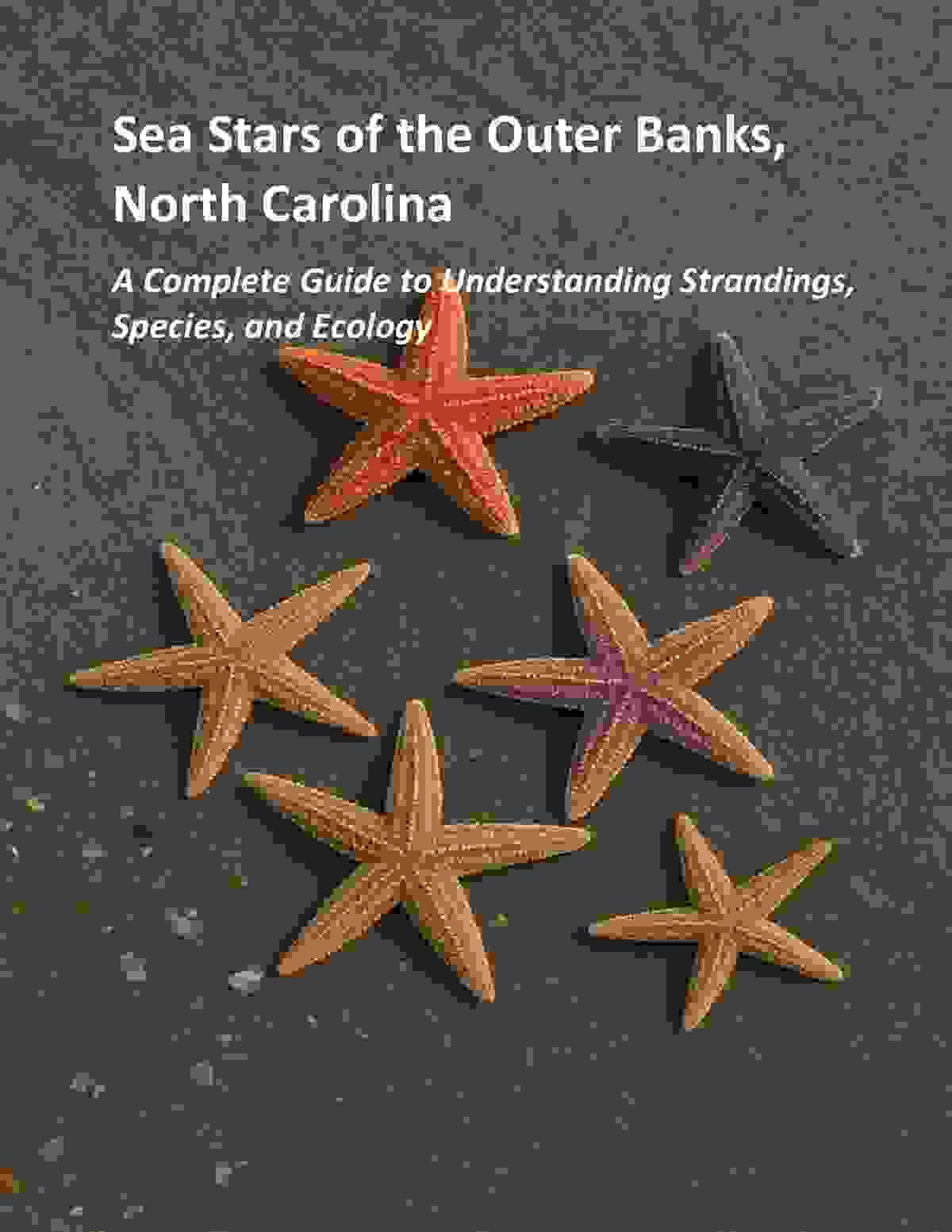
The Outer Banks of North Carolina are home to several sea star species—most commonly the Lined Sea Star, but also the Common Sea Star, Atlantic Slender Sea Star, and a few rarer offshore varieties—and their unique biology, including tube feet, external digestion, and sensitivity to temperature and surf, makes them vulnerable to being washed ashore during storms, strong currents, or sudden cold snaps. These strandings are usually natural events rather than ecological crises, and while some sea stars found on the beach may still be alive and can be gently returned to the water, many are already dead and should be left to decompose naturally. Sea stars play an important ecological role by regulating populations of clams and other invertebrates, and large wash-ups help scientists monitor changes in ocean conditions, sediment movement, and seasonal weather patterns.

Wampum of the Outer Banks, North Carolina: A Cultural & Ecological Guide
Wampum of the Outer Banks, North Carolina explains how Indigenous peoples—including the Secotan, Croatoan, and other Algonquian-speaking communities—used quahog and whelk shells to craft meaningful beads and belts that served as tools for diplomacy, memory-keeping, ceremony, and cultural continuity, rather than as currency. The guide describes the crafting process, the symbolism of purple and white shell colors, and the role of wampum in recording treaties, genealogies, and stories, while also highlighting the Outer Banks’ rich coastal context where artisans shaped beads from abundant shells. It encourages modern visitors to respect the cultural significance of wampum, avoid misrepresenting it as money, and support Indigenous artists who continue this living tradition today.
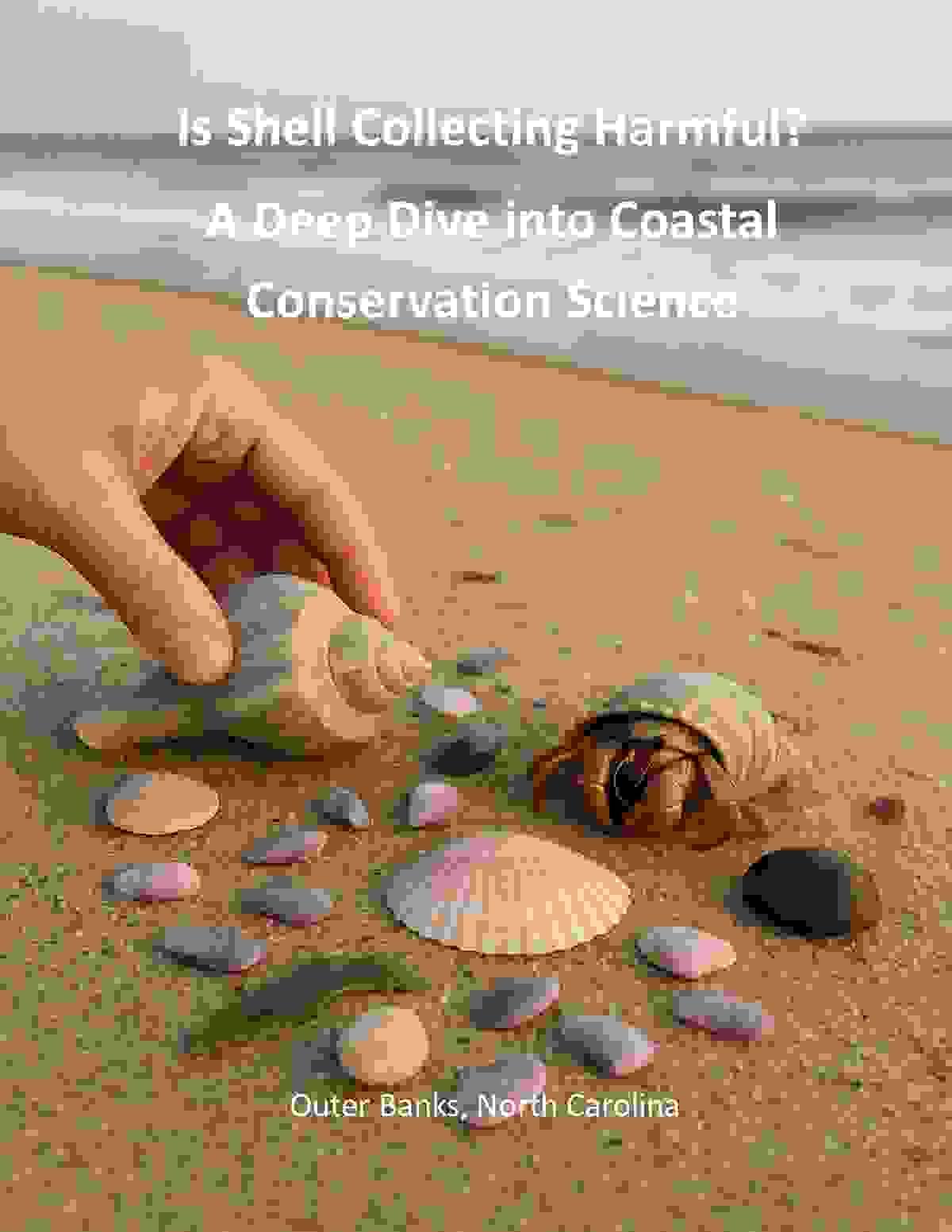
The pamphlet explains that shell collecting on the Outer Banks is a cherished activity, but shells play vital ecological roles even after the original animal is gone — providing habitat, stabilizing beaches, supporting dune formation, and helping shorebirds forage and nest. While taking a few shells is generally harmless, large-scale or commercial removal can reduce wildlife habitat, increase beach erosion, and weaken the coastline. The guide encourages mindful collecting, avoiding rare or intact shells, steering clear of wildlife zones, and choosing broken shells or photography instead. The key message is balance: enjoy collecting, but leave enough shells to keep the beach functioning as a healthy, living ecosystem.
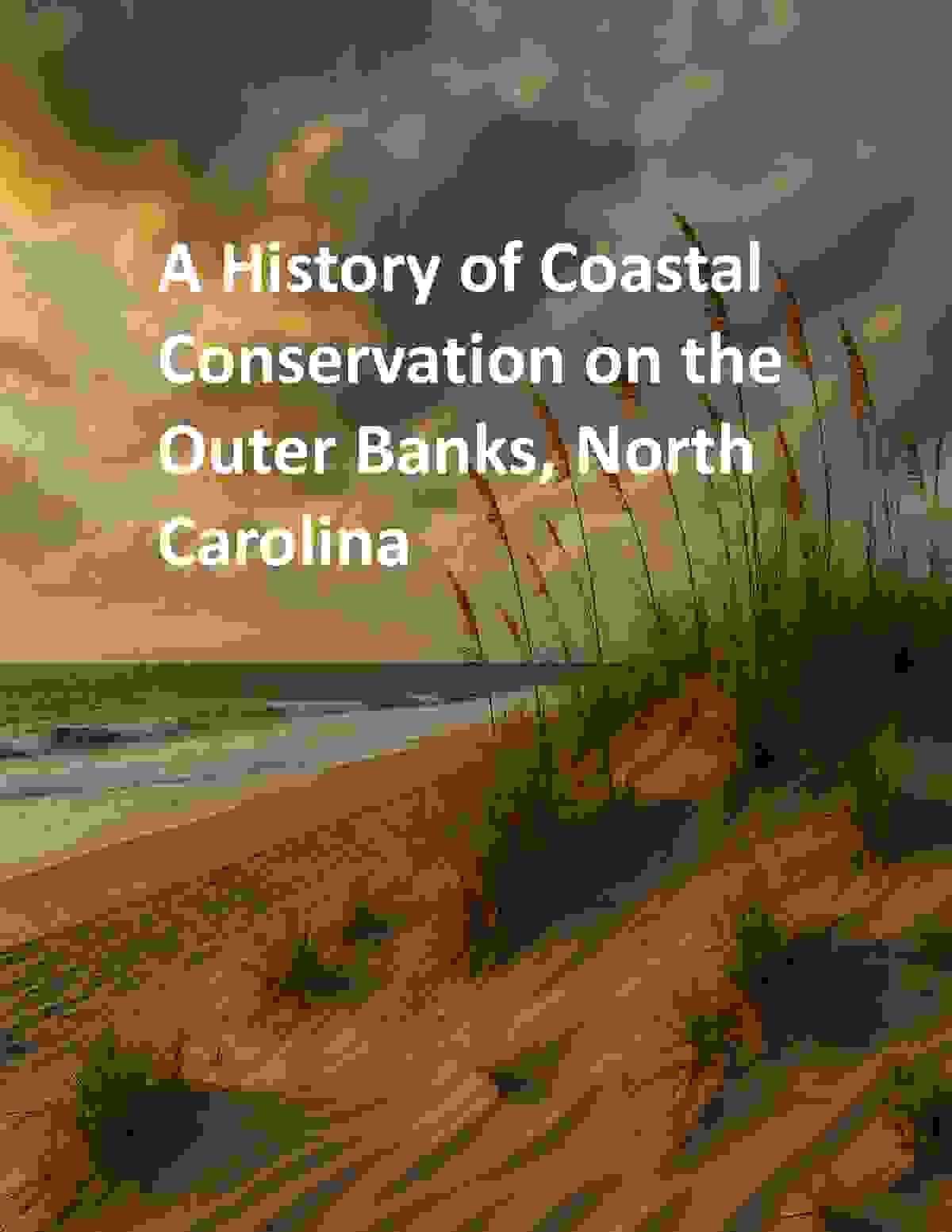
The Outer Banks of North Carolina are ever-shifting barrier islands whose history of conservation spans Indigenous stewardship, early European impacts, 20th-century engineering, and modern resilience planning. Indigenous communities lived lightly on the land, harvesting seasonally, respecting waterways, and allowing the islands to move naturally. European settlement brought logging, wetland drainage, overharvesting, and lighthouse construction, accelerating ecological stress. By the late 1800s, wildlife declines sparked early conservation efforts, followed in the mid-1900s by large stabilization projects—such as dune building and Highway 12—that attempted to control island movement but often worsened erosion. Since the 1980s, conservation has shifted toward protecting sea turtles, expanding wildlife refuges, restoring dunes and marshes, building living shorelines, and planning for climate-driven sea-level rise. Today, sea-level rise, narrowing islands, wildlife pressures, and heavy tourism pose major challenges, but by honoring both science and long-standing Indigenous principles, communities can help the Outer Banks adapt and thrive for future generations.

The guide explains how cigarette butts, vape waste, and other smoking materials pose a severe threat to the Outer Banks’ beaches, waterways, wildlife, and dune systems by leaching toxins, generating microplastics, causing fires, and harming animals such as sea turtles, birds, fish, dolphins, and crabs. It highlights why the Outer Banks are uniquely vulnerable—strong winds, narrow islands, dense wildlife, and heavy tourism all accelerate the movement of smoking litter into the ocean and marshes. The document also outlines public health risks, economic impacts, and community-level concerns, while providing practical solutions for individuals, families, pet owners, and local governments to reduce smoking waste through proper disposal, education, and receptacle installation. Ultimately, it emphasizes that removing even one cigarette butt helps protect the fragile barrier island ecosystem and ensures a cleaner, safer, and more resilient Outer Banks.

The Guide to Reducing Plastic explains how the unique geography, strong currents, storms, and high tourism pressure make the Outer Banks a major hotspot for plastic accumulation, threatening wildlife, water quality, public health, and the local economy. It describes how plastics enter coastal waters, break down into harmful microplastics, and impact species such as sea turtles, birds, dolphins, fish, and shellfish. The guide offers practical solutions for residents, visitors, businesses, schools, and local governments—including reducing single-use plastics, improving waste management, enhancing recycling, upgrading stormwater systems, adopting smart policies, restoring marshes, and creating living shorelines. It concludes with starter kits, community actions, and science-based recommendations to build a cleaner, healthier, plastic-wise Outer Banks.

The guide explains how tiny synthetic clothing fibers—shed during household laundry, outdoor towel shaking, and rental-home washing—have become the largest source of microplastic pollution in the Outer Banks, carried through septic systems, stormwater drains, and river-to-sound pathways into coastal waters where they harm oysters, fish nurseries, dolphins, shorebirds, marsh plants, and even local tourism and seafood safety. It details why the Outer Banks is uniquely vulnerable due to its coastal funnel effect, reliance on septic systems, and high seasonal visitor load, and it outlines practical solutions for residents, visitors, rentals, businesses, and local governments, including laundry filters, natural-fiber clothing, responsible washing habits, filtration infrastructure, marsh and oyster-reef restoration, and public education—all aimed at protecting clean water and the region’s ecological and economic health.
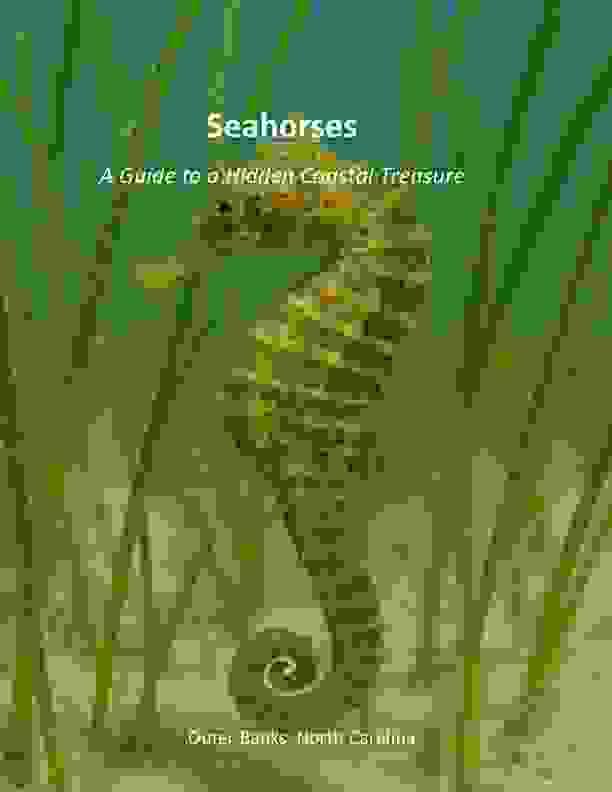
This guide explains that the Lined Seahorse (Hippocampus erectus) is a hidden but important resident of the Outer Banks’ seagrass meadows, salt marshes, and shallow flats, where it thrives in warm, calm estuarine waters and relies on camouflage, a prehensile tail, and constant feeding for survival. It highlights their unique biology—including male pregnancy—and their seasonal movements, while warning that seahorses are increasingly threatened by habitat loss, microplastics, warming waters, coastal development, storms, and bycatch. The guide stresses that protecting seagrass habitats, reducing microplastic pollution, promoting sustainable fishing, and supporting conservation planning are essential to their survival. Ultimately, safeguarding seahorses means protecting the broader estuarine ecosystems that support wildlife, fisheries, recreation, and coastal resilience in the Outer Banks.
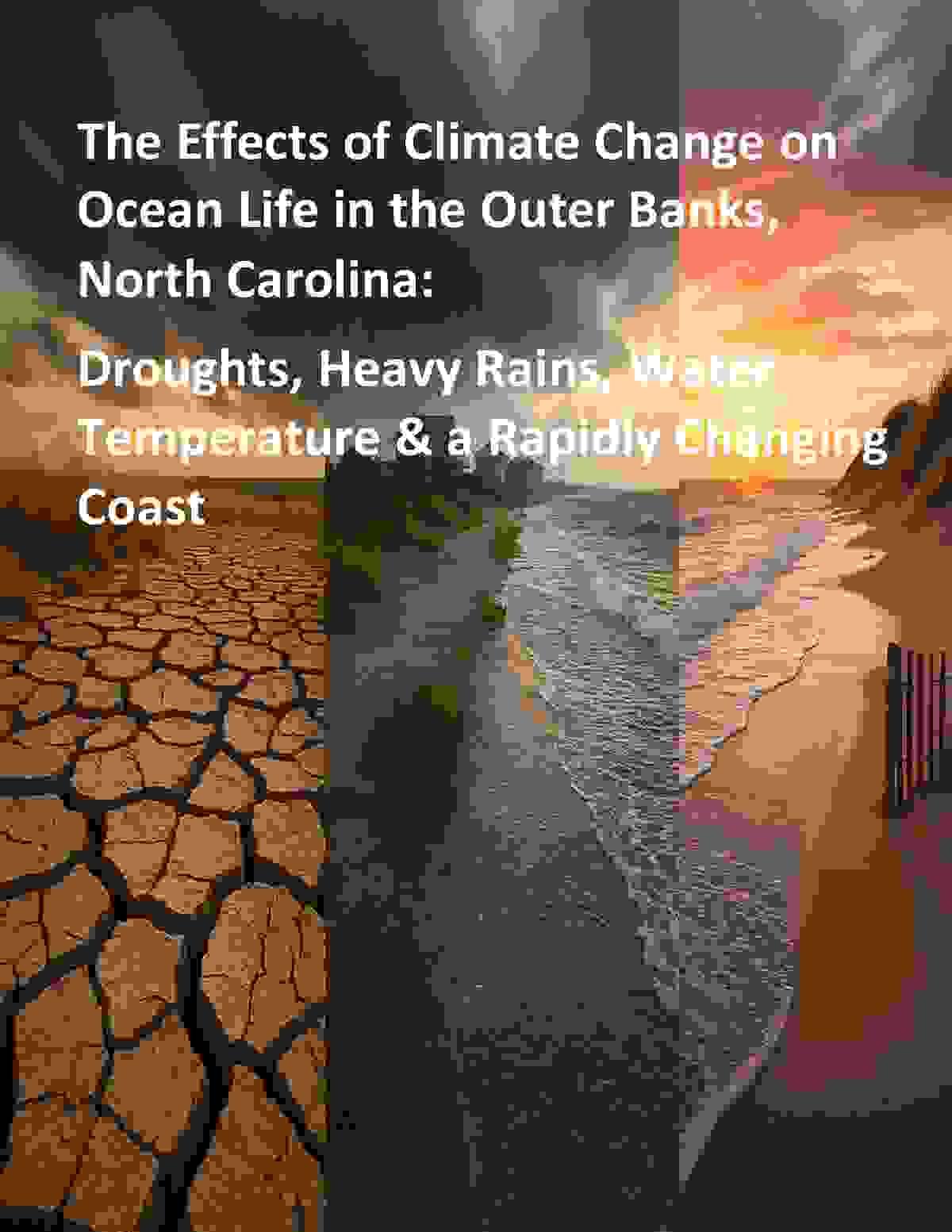
Climate change is rapidly transforming the Outer Banks by intensifying droughts, heavy rains, and rising water temperatures, which together create severe stress on coastal ecosystems and marine life. These shifts drive salinity spikes, temperature swings, low oxygen events, harmful algal blooms, and bacterial outbreaks, all of which damage seagrass meadows, oyster reefs, salt marshes, tidal creeks, and essential nurseries. Species from sea turtles and dolphins to fish, shellfish, blue crabs, and shorebirds experience disrupted feeding, disease, habitat loss, and population declines. These ecological impacts ripple into human communities—affecting fisheries, tourism, and water quality—highlighted throughout the guide (see pages 3–14). Understanding these interconnected pressures is crucial for designing resilience strategies that protect both wildlife and coastal communities across the Outer Banks for future generations.

The Guide to Pelicans of the Outer Banks, North Carolina explains the two species found in the region—Brown Pelicans, which live there year-round, and American White Pelicans, which visit in winter—describing their appearance, feeding behavior, seasonal patterns, roosting habits, nesting ecology, and primary food sources. It highlights differences between the species, outlines key conservation challenges such as habitat loss, disturbance, and pollution, and provides guidance for responsible wildlife viewing.
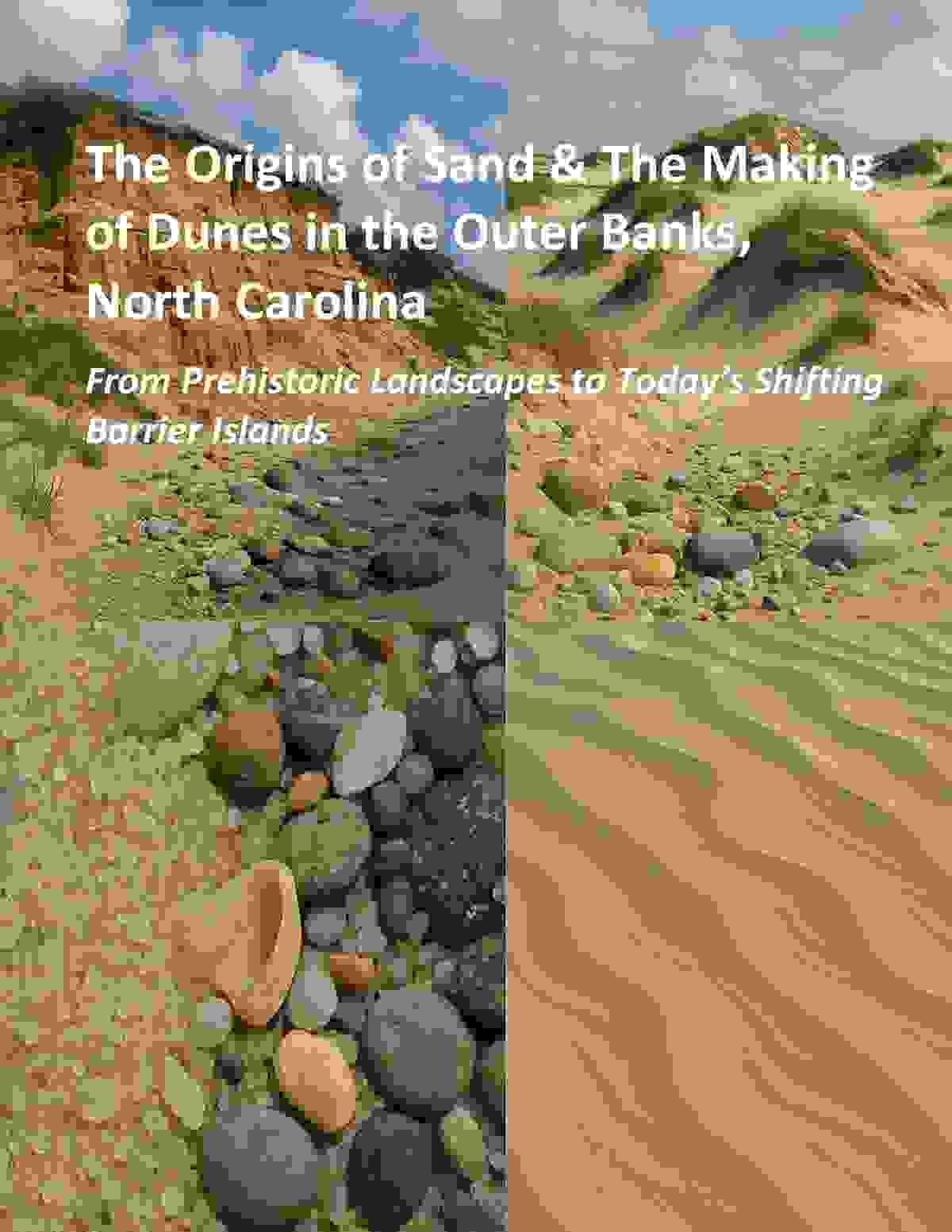
The guide explains how the sand and dunes of the Outer Banks formed over millions of years—from the erosion of ancient Appalachian Mountains to shifting sea levels during the Ice Ages that pushed sediments landward and created early barrier islands. It describes how ocean waves, longshore drift, and wind continue to reshape the islands, how vegetation like sea oats traps blowing sand to build dunes, and how older “relict” dune systems differ from today’s young, shifting primary dunes. The guide also outlines human impacts—from early vegetation loss to the CCC’s dune-building efforts—and highlights modern threats such as storms, sea-level rise, and development, emphasizing the need for nature-based restoration and allowing dunes to move naturally for long-term coastal resilience.

The guide provides a clear, detailed overview of the Carolina ghost crab, explaining its remarkable adaptations for life on the sandy beaches of the Outer Banks, including its camouflage, speed, burrow engineering, and ability to survive both on land and in the water. It describes their diet, lifecycle, seasonal behavior, predators, and interactions with sea turtles, while also highlighting their role as key indicators of beach health. The guide outlines major threats—such as beach nourishment, lighting, dogs, and human disturbance—and offers practical beach-etiquette tips to help protect ghost crabs and their habitat, all while emphasizing their ecological importance and the need for responsible coexistence on North Carolina’s barrier islands.

The Sand Dollars of the Outer Banks guide explains what sand dollars are, how to distinguish live individuals from dead ones, and the important ecological roles they play in local coastal ecosystems. It describes their habitats, movement, diet, and life cycle, while also addressing why so many are found broken on Outer Banks beaches. The guide offers ethical tips for interacting with sand dollars, debunks myths about the “doves” and star patterns, and highlights threats from storms, heat, freshwater pulses, and ocean acidification. It also identifies the best places to find them and encourages beachgoers to protect these fragile animals as part of preserving the Outer Banks’ natural heritage.

The Migrating Birds of the Outer Banks guide provides an overview of how the Outer Banks’ barrier islands serve as a crucial stopover along the Atlantic Flyway, supporting more than 400 bird species each year through their mix of beaches, marshes, impoundments, and maritime forests. It explains seasonal migration patterns, highlights key species—from waterfowl and shorebirds to raptors and seabirds—and showcases Pea Island National Wildlife Refuge as a hotspot for both common migrants and remarkable rarities such as flamingos, spoonbills, and Eurasian vagrants. The guide also offers tips for ethical birding, describes how storms and climate change are reshaping habitats, and emphasizes the ecological importance of these islands as feeding, resting, and breeding grounds for birds traveling thousands of miles.







